2026
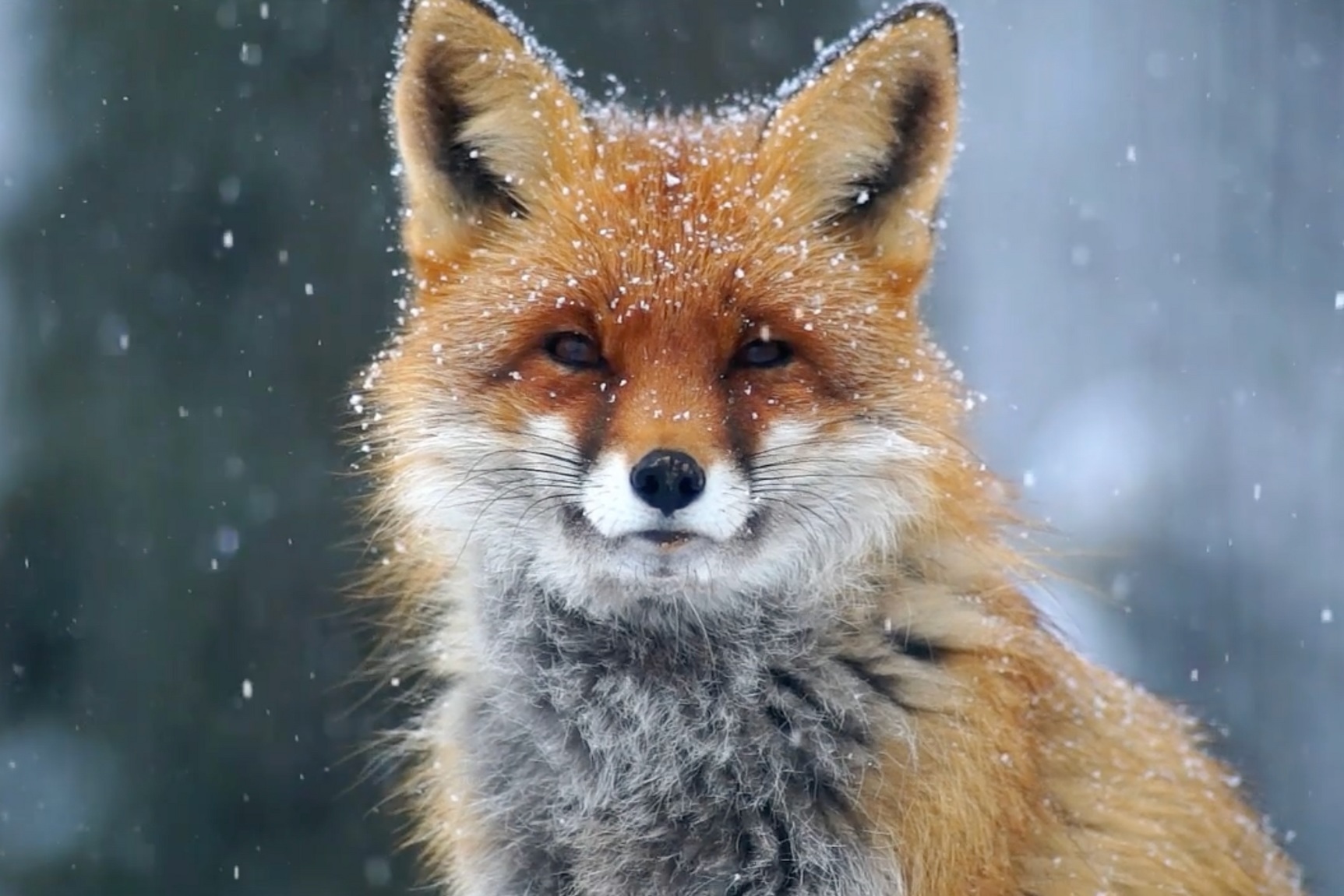
January in the Forest
How magical it is to be starting a new year, with the axis of the earth tilting the northern hemisphere gradually back towards the sun. Although the coldest days of the winter are probably yet to come, the darkest days are past. What is there to see in the forest now? The deciduous trees are bare and a long view may reward you with the sighting of a group of Fallow Deer. At this time of the year the deer group in separate herds of males and females with their fawns. The autumn abundance of acorns and beech mast is over and they will graze on grass and any other palatable greenery, even nibbling young holly leaves. They have moulted their spotted summer coats and replaced them by a camouflage of thick, dark brown fur. Little Muntjac Deer are widespread through the forest and becoming increasingly numerous. Although they are difficult to spot they announce their presence with a far-carrying, persistent bark, and leave their small droppings and tiny footprints. Security cameras sometimes identify them as the guilty wreckers of shrubs in local gardens.
Another large mammal, the Red Fox, is one of the top predators of the forest but its food includes large numbers of worms and beetles as well as the predictable birds and small mammals. They are also frequent visitors to fruit orchards and are well-known to enjoy a good rummage in a dustbin. Their hunting skills are put to the test in snowy weather but they can hear the squeaks and rustlings of mice and voles as they move through their tunnel networks and can pounce with deadly aim. Many people will be familiar with the foxy smell which marks their territory boundaries, but I was surprised to learn that they also have scent glands on their feet which help them to follow their trails in the dark. At this time of the year their courtship can be a really noisy affair: the dog foxes barking and the vixens contributing spine-tingling screams! The photo is courtesy of Countryfile.
The hoot of the Tawny Owl is another sound of the winter nights and by day the fields may be noisy with flocks of visiting Fieldfares and Redwings. At the end of the month you can help to monitor the health of our bird populations by joining the RSPB’s Big Garden Birdwatch between 23rd and 25th January.
2025
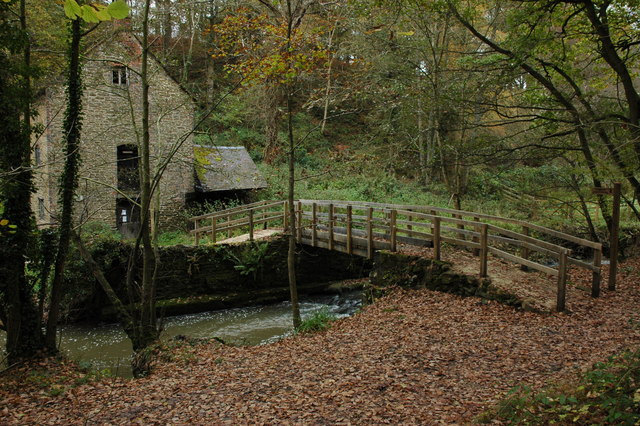
December in the Forest
Living here in Bewdley we certainly know about the variability of rainfall and its effect on the River Severn and its tributaries. Coming home from central Bewdley to Uncllys Farm I cross two small streams: Bell Brook and Forest Lodge Stream. I’m very aware of this on my bicycle (even with an electric motor to help me) as I have to negotiate two very steep little valleys cut into the Carboniferous clay and rock over thousands of years. Both feed into Dowles Brook, which divides the Wyre Forest into a southern and northern half. I stood on the bridge at Knowles Mill recently admiring the clear water of the stream but things aren’t as good as they look. Closer inspection would have shown up a lack of plant and animal life. So what’s going on? Water quality in this area is monitored by anglers and volunteers from Bewdley’s Communities Against River Pollution (CARP) and their results throw a spotlight on the generally poor state of our waterways. Dowles Brook runs through the forest, a large part of which is a National Nature Reserve, so you would think that it would be pristine, but higher sections are bordered by arable land and small settlements. Careless land management can allow artificial fertilisers and silt-laden run off to get into the brook, while older houses and caravan sites may not have standards of sewage treatment to stop pollution getting into the water. At any rate the evidence is there, with water samples showing peaks in the levels of phosphates at least twice in the last few years - four or five times that considered ‘safe’. The Environment Agency appears to be limited in its ability to take action so it must be up to us! Maybe then I’ll have the joy of watching a Dipper catching its prey in the brook once again. (The photo of the Dowles by Knowles Mill is courtesy of Philip Halling).
Several people have asked me how the Wyre Forest’s Beavers are getting on. They don’t appear to have bred this year so there are still 2 adults and 3 or 4 growing youngsters from the year before (only 3 have been seen together at any one time, so we’re not certain). However they have been very busy - they have built a big dam and some side channels to the stream and seem to be quite contented. The trail cameras show that they are joined by plenty of other wildlife in their new watery world, including Otters, Stoats, Goshawk, Kingfishers and even the threatened native White-clawed Crayfish. Nature is absolutely capable of recovering once humans allow it to!
Wishing you a very happy Christmas!
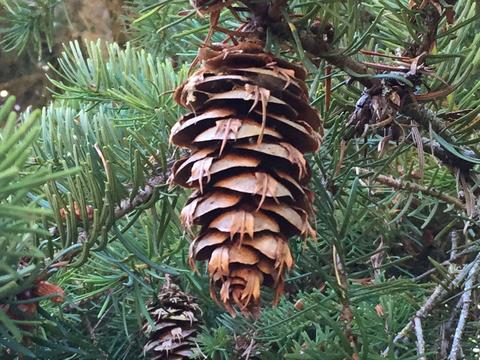
November in the Forest
This time of year is ideal for collecting natural treasures from our forays outside. The conkers have been and gone, most of the diverse forest fungi have been reduced to black slime but the last of the autumn leaves are still on the trees or underfoot, crisp and dry. I can’t resist them, and take them home to press under heavy books between sheets of absorbent paper.
Evergreen trees begin to take prominence in the forest now. I generally have a preference for ‘the natives’ but the conifers introduced by the Forestry Commission when they purchased tracts of forest in the 1920s have their place too. The New Parks area of the Wyre is the well-known hub of visitor facilities and has plantations of Douglas Fir, European Larch, Corsican Pine, Scots Pine and Hemlock. All of these are cone bearers, cones being the seed-bearing structures of the tree. Their various shapes and sizes are a key constituent for Christmas wreaths and table decorations but even if you don’t intend to make any of those, take time to look at them – they are wonders of practical design! The seeds are tightly-enclosed in cold, wet weather but fall out (or get eaten) when the woody scales open in the dry. There is a charming story attached to the cones of the Douglas Fir which, incidentally, helps me to identify the tree. It is attributed to the First Nations of the Pacific Northwest of America and varies slightly in its re-telling, but here goes!
‘A long time ago there was a great forest fire. The wild creatures ran to escape the flames but the mice were unable to run fast enough and asked the trees of the forest for help. The maple and red cedar were unable to help but the Douglas Fir told the mice to climb its tall, fire-resistant trunks and hide in its fir cones until the danger was past. The mice hid between the scales with only their back feet and tails sticking out, and if you look at a Douglas Fir cone you can still see them today!’
The large numbers of ladybirds trying to get into our house in recent weeks remind me that many creatures are going into hibernation now. The one which most readily springs to mind is the hedgehog, so familiar but so beleaguered now. Please do remember to check your bonfire piles on firework night for sleeping hogs or, better still, only build your fire just before you light it. Personally I always start a bonfire on clear ground and add material to it, so there’s no danger of cooking a spiny friend.
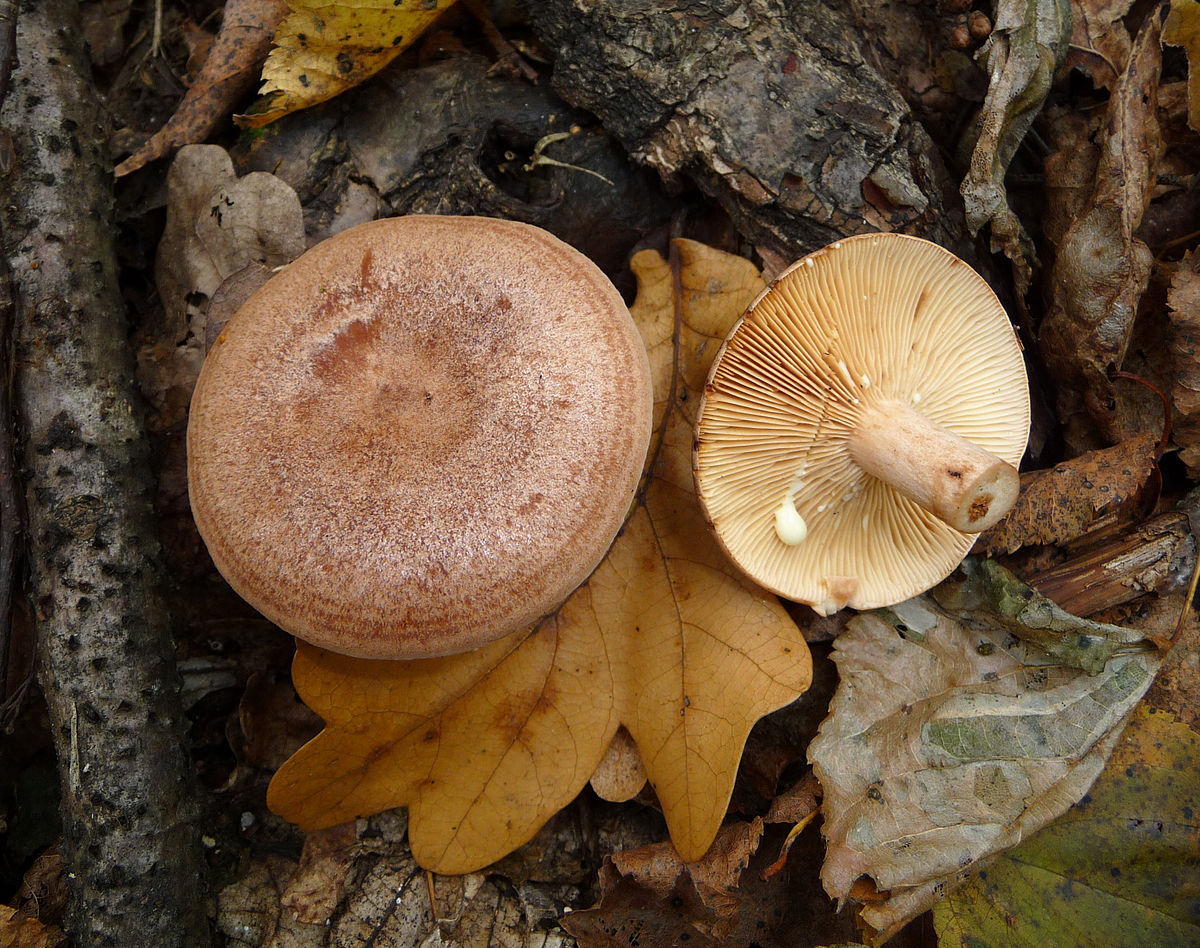
October in the Forest
This could be a very good year for mushrooms and toadstools if we have sufficient rain! A period of heavy rain after dry weather usually stimulates the growth of the variously-shaped and coloured fruiting bodies which we see on the forest floor and out in the meadows. The greater part of the organism consists of a network of fungal threads called hyphae growing through the soil, dead wood and leaves (and often visible if you turn over a rotting log or clump of dead leaves).
Now that I’ve touched on fungal nomenclature I can reveal that the network is called mycelium and that a specialist in the study of fungi is a mycologist. Mycologists have recently made some astounding discoveries about fungi and their importance to the ecology of many other species. The most startling is that by far the largest living organism in the world is an example of the fungus Armillaria solidipes (a species of honey fungus) which extends for about 4 square miles in the Malheur National Forest of Oregon. DNA checks have proved that this is all one organism and it is estimated to be from 2000 to 8000 years old. Unfortunately it is a killer of coniferous trees, travelling through the soil by means of strong black ‘bootstraps’ by which it infects other trees’ own root systems. I have found these bootstraps in parts of my garden and lost a very attractive crab apple tree to honey fungus. I have only myself to blame for introducing it via picturesque logs and stumps.
Fortunately the relationships between trees and fungi are usually more benign and beneficial. Fungi cannot photosynthesise, absorbing nutrients and water directly from their surroundings and most notably from dead matter. However, many have evolved to form a close association with trees where they benefit from the sugars produced by the tree and the trade-off for the tree is a more effective system for gathering minerals from the soil and filtering out heavy metals. This co-operation of the fungal mycelium with tree roots results in an extensive ‘root’ system which can link one tree with another over large areas.
Particular fungi may be fairly specific in their choice of host tree. The Oak Milkcap, one of about 50 species of milkcap found in the Wyre Forest, is shown in the photo: the ‘milk’ which gives it its name oozing from the damaged gills. It is, I believe, exclusively associated with oak trees, whereas, for instance, the Fiery Milkcap grows under Hazel, Fly Agaric under birch and Slippery Jack under Scots Pine.
Local gourmets may be rather sad to learn that edible truffles cannot grow in the Wyre Forest’s acidic soils, so plans to train up the dog or pig as a truffle-hunter would get us nowhere. I won’t get into the tricky subject of whether or not different fungi are edible: after an allergic reaction a few years ago after eating a Common Puffball I prefer to steer clear of them all.
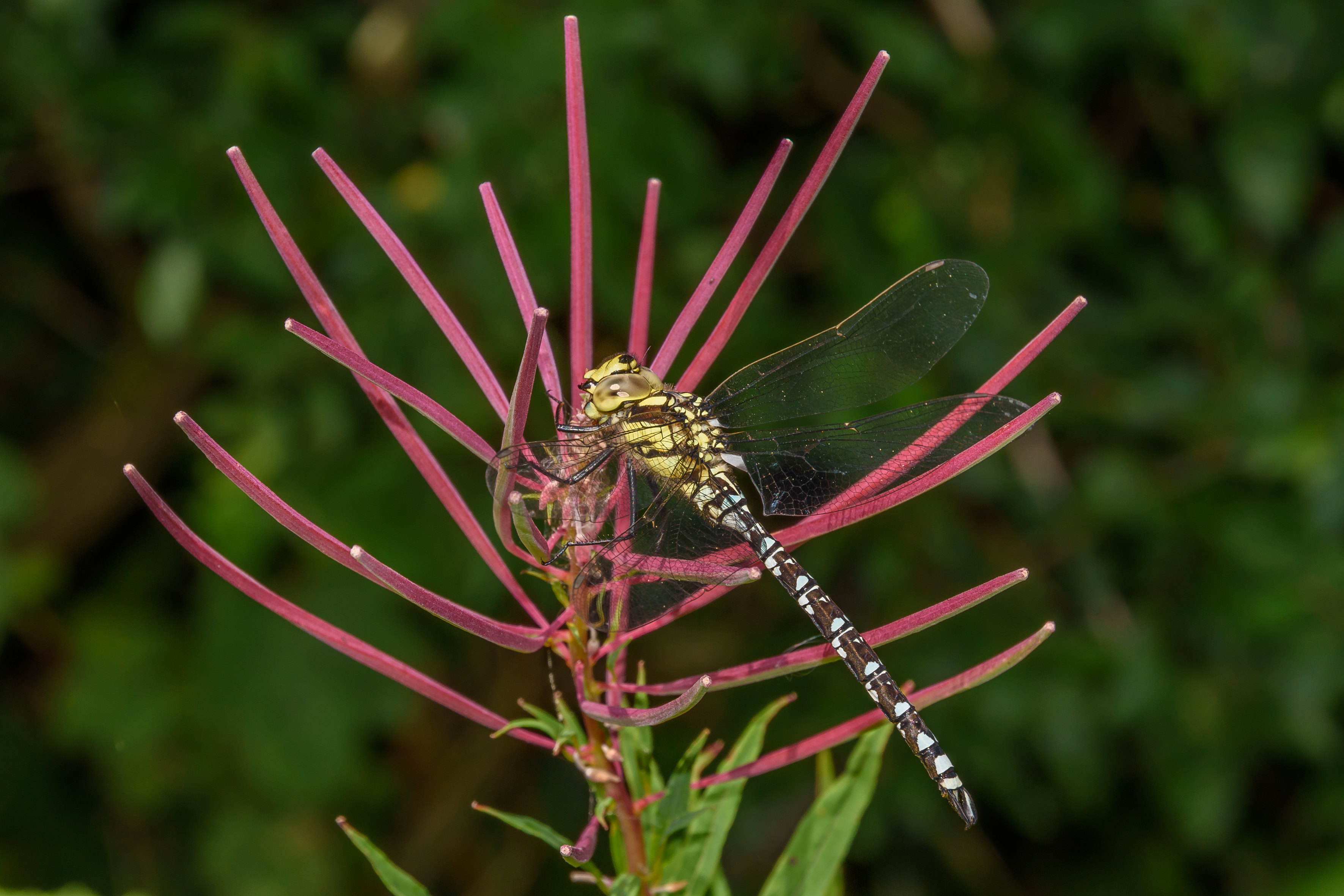
September in the Forest
During our sunny summer I have enjoyed watching the dragonflies darting over the garden pond, which fared better than most of the forest ponds due to our efforts to top it up.
There are two species that visit to hunt smaller flying prey and court their mates. The Broad-bodied Libellula is the most frequent: the male with a broad blue abdomen, the female brown. I see the males more often, or maybe I should say ‘male’ as there will only be one in residence at one time and it will make sure it sees off any competitors. (I learnt this year that the French word for dragonfly is libellule). I accommodate the male dragonfly by offering a couple of twigs as perches at the edge of the pond – from these it can make its occasional sallies across the water. The female is brown and therefore less conspicuous to predators but her arrival will bring the male immediately to join her in flight. During mating (usually on a handy lily leaf) the male grasps the female with his tail just behind her head, and they will often fly off joined in that way while the female dips her tail in the water to lay her eggs on plants.
The larger and faster Southern Hawker dragonfly (as shown in the photo by Nigel Stone) is often a slightly later arrival but one which one can’t fail to notice. It charges up and down the pond with wings going full tilt, and if another male or another species is around there will be an aerial altercation. If no female appears it will leave to try its luck at another woodland pool. One got itself trapped in my greenhouse last month and took a good deal of effort with a butterfly net to capture and release it!
The nymphs that soon hatch from their eggs are initially quite tiny but they have a reputation as one of the fiercest hunters in the aquatic environment. They start with microscopic prey such as water fleas (Daphnia) and Cyclops and work their way up, stalking the unfortunate creatures then spearing them with a modified lower lip that shoots out from under their heads. After two or more years of this underwater tyranny they are ready to metamorphose into an adult: the nymph climbs the stem of an aquatic plant and once in the air the adult emerges through the split skin of the thorax. It then stays nearby for several hours while its wings extend and harden, enabling it to fly away leaving the empty skin of the nymph still clinging to the plant. Now is the time to do a bit of pond management: removing fallen leaves and excess aquatic plant growth.
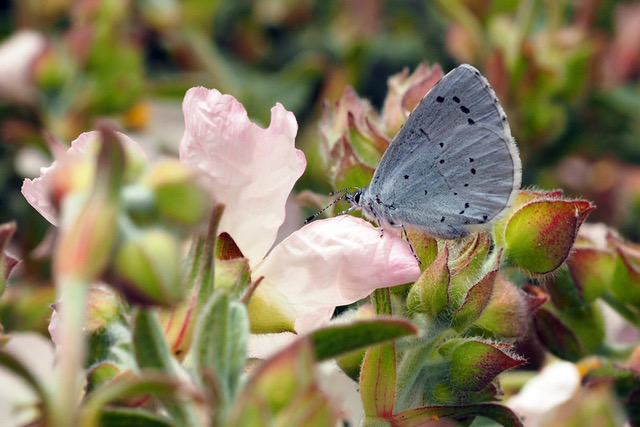
August in the Forest
I’m not sure what August will look like: the prolonged heat and drought in the spring and early summer having pushed seeding and fruiting forward to such an extent. If there has been sufficient rain in late July the plants and trees will hold on to their leaves and even produce a new flush of growth but otherwise autumn may come early! The green hazelnuts have already been stripped from their trees by grey squirrels and hungry blackbirds have helped themselves to the red rowan berries.
The shallower ponds that volunteers visited looking for frogspawn in February and March dried out months ago, putting an end to any tadpoles which hadn’t completed their metamorphosis into tiny frogs. And those tiny frogs may not have found enough damp places in the forest or insects to eat to survive the hot weather. However, it is quite normal for some ponds to be seasonal and dry up in the summer and in fact this habitat favours some species such as newts which can survive in mud (or walk away!) while their fishy predators die.
Wild plants and creatures have evolved to take advantage of the conditions that usually prevail, and extreme variations in climate are very challenging, to say the least. As in winter, dormancy provides a way of surviving these times: for invertebrates as eggs or pupae and in shrubs and trees by losing their leaves. Slugs and worms will go deeper with other small soil-dwellers to find moisture, and those that feed on them will have to dig deep to reach them. Some species of wildlife can adapt by changing their food. In dry periods when grass becomes scarce deer and rabbits may eat brambles and other tough shrubs or even strip the bark from trees.
For butterflies, the sunshine of May, June and July was a great improvement on the cold, wet weather of last year which saw their numbers decline (‘A terrible year’ according to Butterfly Conservation’s Dr Richard Fox), but they need plants to produce nectar for adults and foliage for caterpillars, and the drought posed a new threat. The data provided by this year’s Big Butterfly Count, which runs from 18th July to 10th August, will help to show whether butterflies have been able to ‘bounce back’. There’s still time to spend 15 minutes in your garden, or anywhere else you like, counting the butterflies that you see. Visit Butterfly Conservation’s website to get a tick list and help with identification (including a free identification app!). Thanks to Mick Farmer for his photo of a Holly Blue.
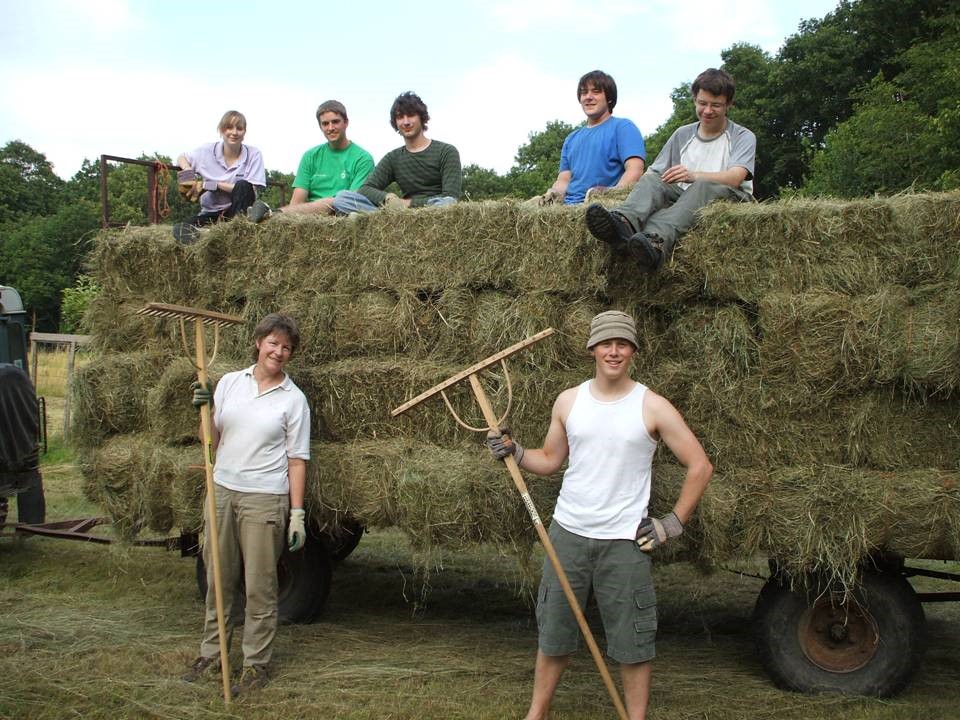
July in the Forest
Ever since we moved to Uncllys Farm, July has been the month dominated by haymaking. If you have grazing animals you need to solve the problem of an abundance of grass in the summer and nothing much in the winter. Somehow that over-production has to be conserved to provide winter feed, either in the form of hay, silage or something in-between called haylage.
This was just the excuse my husband needed to get a tractor and various big bits of machinery to pull behind it, and so began our initiation into haymaking.
The decision on when to cut depends on several factors, none of which are under our control. Firstly, the grass should be at a maximum point of nutritive value: preferably after flowering but not having dropped its seed. Secondly, the weather must be dry for enough days after the cut for the grass to be completely dried, baled and brought under cover. Then we have an extra complication brought with our Countryside Stewardship scheme, which states that a wildflower meadow should not be cut before the flowers have set their seed.
So the forecast is inspected and looks promising enough for the tractor and mower to progress around the fields with the sweet-smelling grass piling up behind it. When the top is dry (a day or so later) the grass is turned with a ‘tedder’ and will probably need another turn before it is dry all the way through and can be rowed-up. Then it’s the turn of the baler: a troublesome and demanding piece of equipment which clanks and shuffles the hay into neat rectangular bales tied with baler twine. (We were always careful to follow the advice of the previous owner, “Whatever you do, don’t get the knotters wet!”, but the baler generally stopped working several times each year and required a good deal of tinkering.) As the baler makes its way round the field a team of helpers rakes stray hay into its path and loads the bales on to a flat-bed trailer towed by the Landrover. When the trailer can’t safely take any more it is driven to the barn, where more helpers pile the bales on a growing stack. It’s all very hard work but when ‘All is safely gathered in’ there’s a feeling of great relief and joy, celebrated with a prayer of thanks, fish and chips and beer!
This is history now, and though our efforts have encouraged a diverse and growing collection of flowers, including Pignut, Cowslip, Red and White Clover, Sheep’s Sorrel, Bird’s Foot Trefoil, Black Medick and Yellow Rattle, maybe you won’t be surprised to learn that nowadays the whole operation is completed by a contractor with a large tractor who can produce big, round bales of wrapped haylage in a couple of days.
- I’m interested to know how Swifts are faring in the Bewdley area. If you know of a nest/nests please can you let me know via the Bewdley Bridge? Thanks.
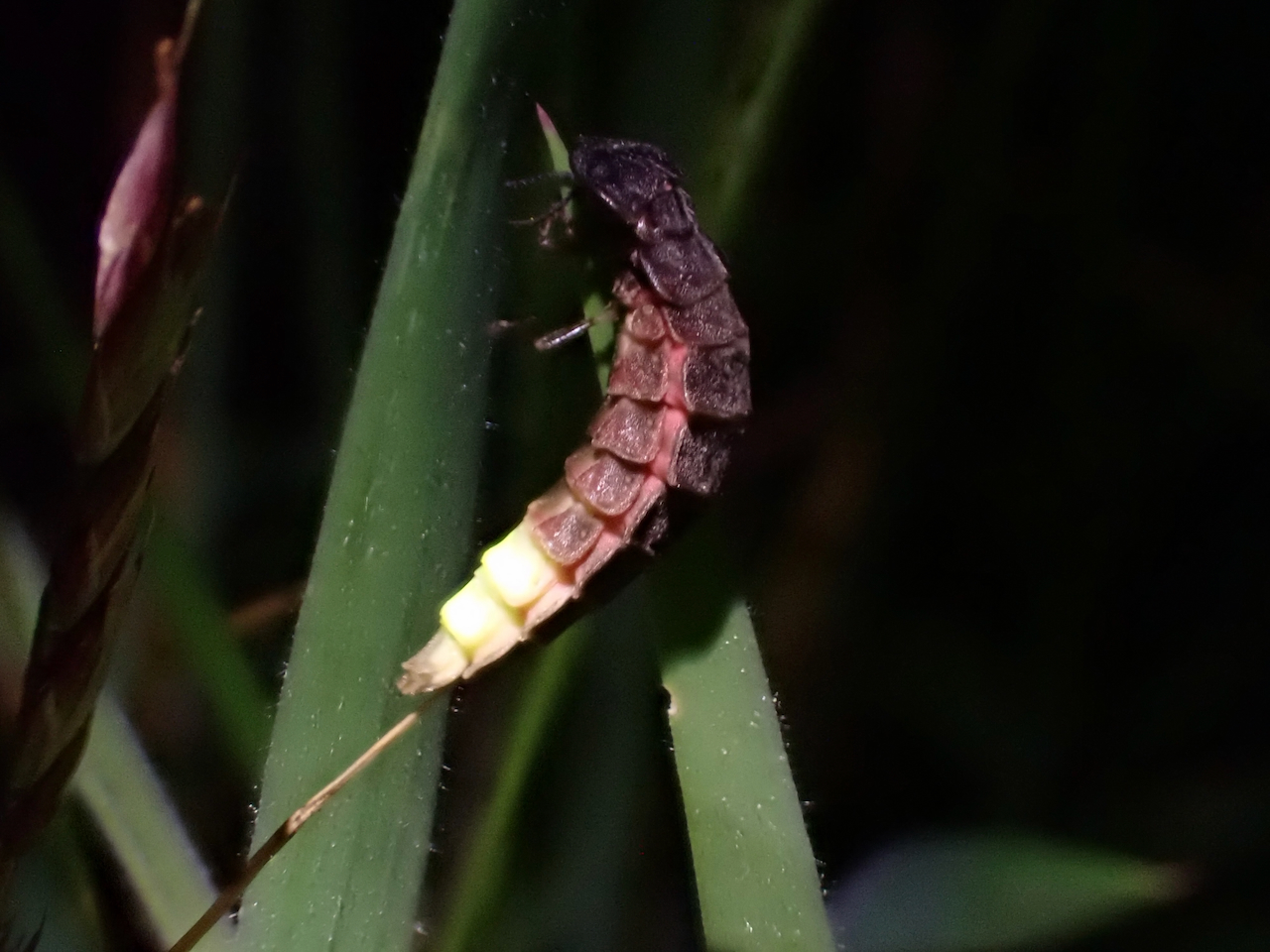
June in the Forest
I like to give attention to the smaller, somewhat less cuddly animals of the forest, and this could be the year that gives me my first sighting of the fascinating Common Glow-worm, Lampyris noctiluca. It isn’t a worm but a member of the beetle family but glow it does. So what am I looking for? The larvae are black with 13 segments, growing to about 4cm long and may be in fairly long grass, leaf litter or shrubs in hedgerows or woodland edges, and often in damp valleys or on railway embankments. They hatch from tiny, spherical eggs in summer then spend the next two years feeding (with a couple of spells of hibernation), eventually pupating under the cover of a log. Both sexes of larva are able to produce a faint glow from two spots on the tail but no-one has been able to find out why. They are active mainly, but not exclusively, at night.
And what are they feeding on all this time? Slugs and snails! They locate their prey by scent and close in on it (sometimes riding on the back of a snail’s shell) ready to deliver as many poisonous bites as are necessary to paralyse the creature and turn its body into a fluid so that it can ingest it. I almost feel sorry for the unfortunate molluscs.
It is when the adults emerge from the pupa that the differences between the sexes become obvious. The larger females are flightless but very good at producing light from an organ consisting of two bands on the sixth and seventh segments and a couple of spots on the eighth. An enzyme called luciferase catalyses a reaction between the molecule luciferin and oxygen, releasing energy almost exclusively as light. The female will climb a little way up a plant stem or find some other good vantage point and start to glow at dusk with the purpose of attracting a mate. She has no digestive system but lives off the reserves she accumulated as a larva, so she needs to find a mate as soon as possible. Artificial lights don’t seem to affect the female’s ability to glow but are very disruptive to the male’s ability to find her. Norman Hickin, in ‘The natural history of an English Forest’, mentions that the lit windows of his house at Furnace Mill attracted 13 males on a summer night in 1968 but I doubt if there would be so many these days.
So it’s time to head off on a night walk to search out a sight as rare as the Aurora borealis and just as wonderful. My thanks to Rosemary Winnall for the photo of the female Glow-worm and for the loan of the amazingly-informative booklet, ‘The Glow-worm’ by John Tyler
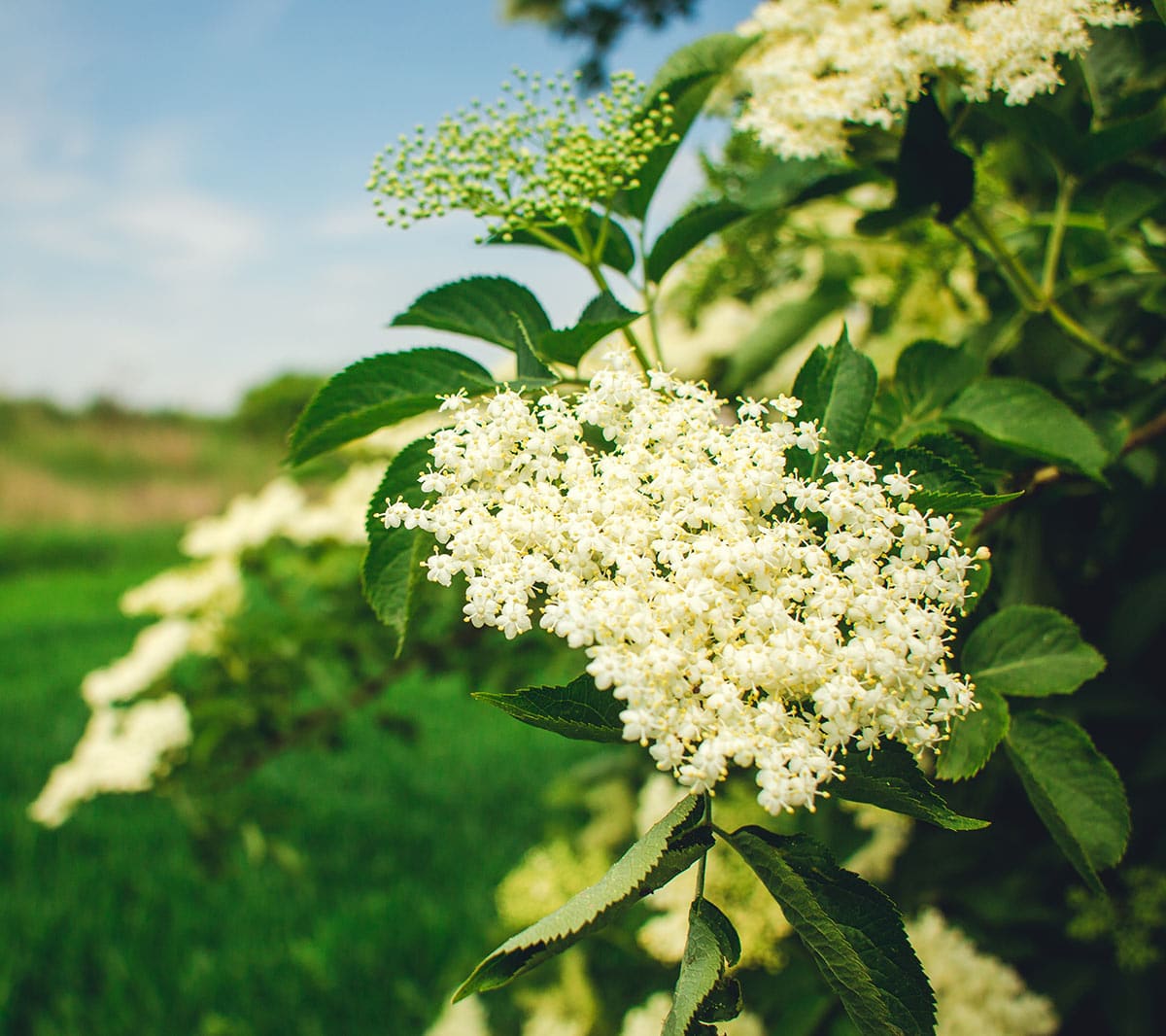
May in the Forest
Our piece of the forest is white with blossom at the moment. Blackthorn has been followed with Damson, and now cherries, both wild and cultivated, carry on the theme. In the hedgerows and woodland edges the Hawthorn blossom (known as ‘May’ of course) decorates its branches of bright new leaves, but I want to draw attention to a humbler tree that is scenting the air and adding its frothy white flower heads to the picture. The Elder, Sambucus nigra, sets itself anywhere and grows so freely that it’s generally regarded as a weed but it should be valued for many reasons. Its very vigour and success as a coloniser is helpful in areas which are bare and need restoration, such as spoil heaps and railway embankments. The foliage has an unpleasant smell and in former times branches were placed in cattle byres and the harnesses of horses to ward off flies, the animals sometimes seeking out the bushes themselves for the same reason. The stems develop a corky pith which is easy to remove, lending them to use as pea-shooters and whistles. (I must see how my 8-year old grandson gets on with this project when he comes to stay! I remember that the whistles don’t always perform at first and sometimes need some patient re-modelling to achieve a satisfactory sound.) Strangely, the wood itself is very hard and the trunk or stump can be used for wood-turning.
Since we are in May, let’s concentrate on the blossoms. The big umbels of flowers attract many pollinating insects but human opinion is divided on whether they smell sweet as honey or somewhat musty. They feature in many country recipes such as elderflower fritters, where the heads are kept whole and dipped by the stalk into a light batter, then fried and sprinkled with sugar. More well-know are elderflower champagne and cordial but the latter is a more reliable beverage to make. Pick 20 heads of blossom on a dry, sunny morning when their pollen content and scent will be greatest. Give them a little shake (not too much or you’ll lose the pollen) to dislodge most of the insects. Slowly dissolve 1 kilogram of sugar in 1 litre of water then boil it for a minute or two to make a syrup. Zest and slice 2 unwaxed lemons and place in a large non-metallic container. You can add 40 grams of citric acid as a natural preservative too. Pour the syrup over the lemons and carefully add the flower heads. Cover with a clean cloth and leave overnight to steep. Next day strain the liquid carefully then pour into sterilised bottles. The cordial can be kept for up to 6 weeks in a cool, dark place or frozen for longer. Add a little to Gooseberry pie or simply dilute it and enjoy a taste of early summer!
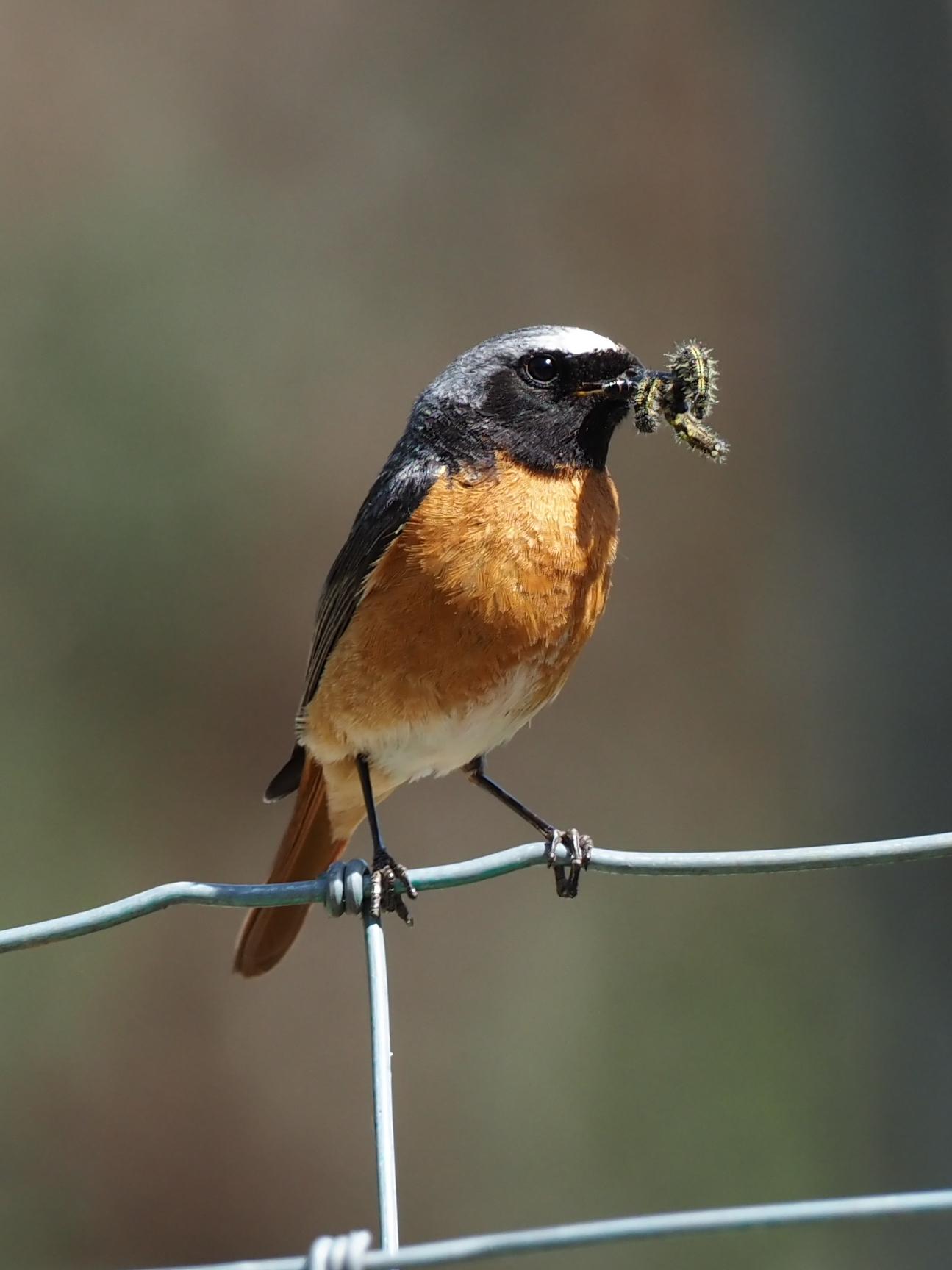
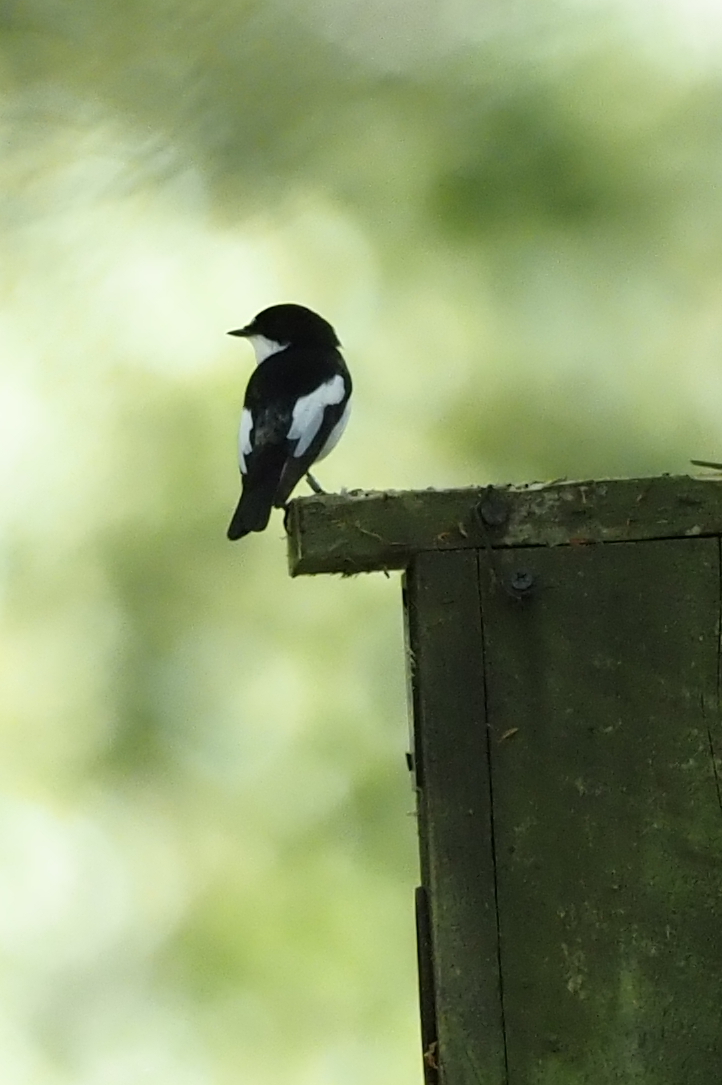
April in the Forest
I’m writing this in March, and was surprised to open the curtains to a dusting of snow this morning. Of course, cold weather isn’t unusual in spring and I have often been anxious about the pollination and setting of fruit on the apples and cherries in the orchards.
We can have hot days too, and this month should see the arrival of the birds that visit to breed in the summer. We hope to see our newly cleaned and renovated bird boxes being occupied, and not all by Blue Tits! Over the years we’ve been delighted to have a number of pairs of Redstarts nesting in our own and neighbours’ farms. We look out for their investigation of nest boxes near the orchards and their appearance on top of fence posts, waiting to dart off to catch insects on the wing. Often our first clue to their presence is hearing a contact call: a short ascending whistle. Next month they will be very busy feeding their nestlings and we hope for the successful appearance of the fledglings. Last year a favourite nest box, which doesn’t look as if it would attract the parents, sitting as it does high on a solitary post facing south at the bottom of the vegetable garden, was taken instead by a pair of Pied Flycatchers (the Redstarts were gazumped!). An entry in my diary for May notes, ‘Pied Wagtail babies in the garden, being attended by parents. Redstarts shouting at me when I went to net the redcurrants’. (Thanks to Mick Farmer for the photos of the male Redstart with the caterpillar and the male Pied Flycatcher on the nest box.)
We can’t assume that we’ll see the same this year. Birds which migrate are subject to the difficulties of feeding and coping with bad weather on the way, and when they get here will they find enough insects in our over-tidy and over-sprayed landscape? I’ll be listening for the call of the Cuckoo to let me know whether or not there is hope that we’ll still be able to enjoy the traditional sights and sounds of spring in the years to come.
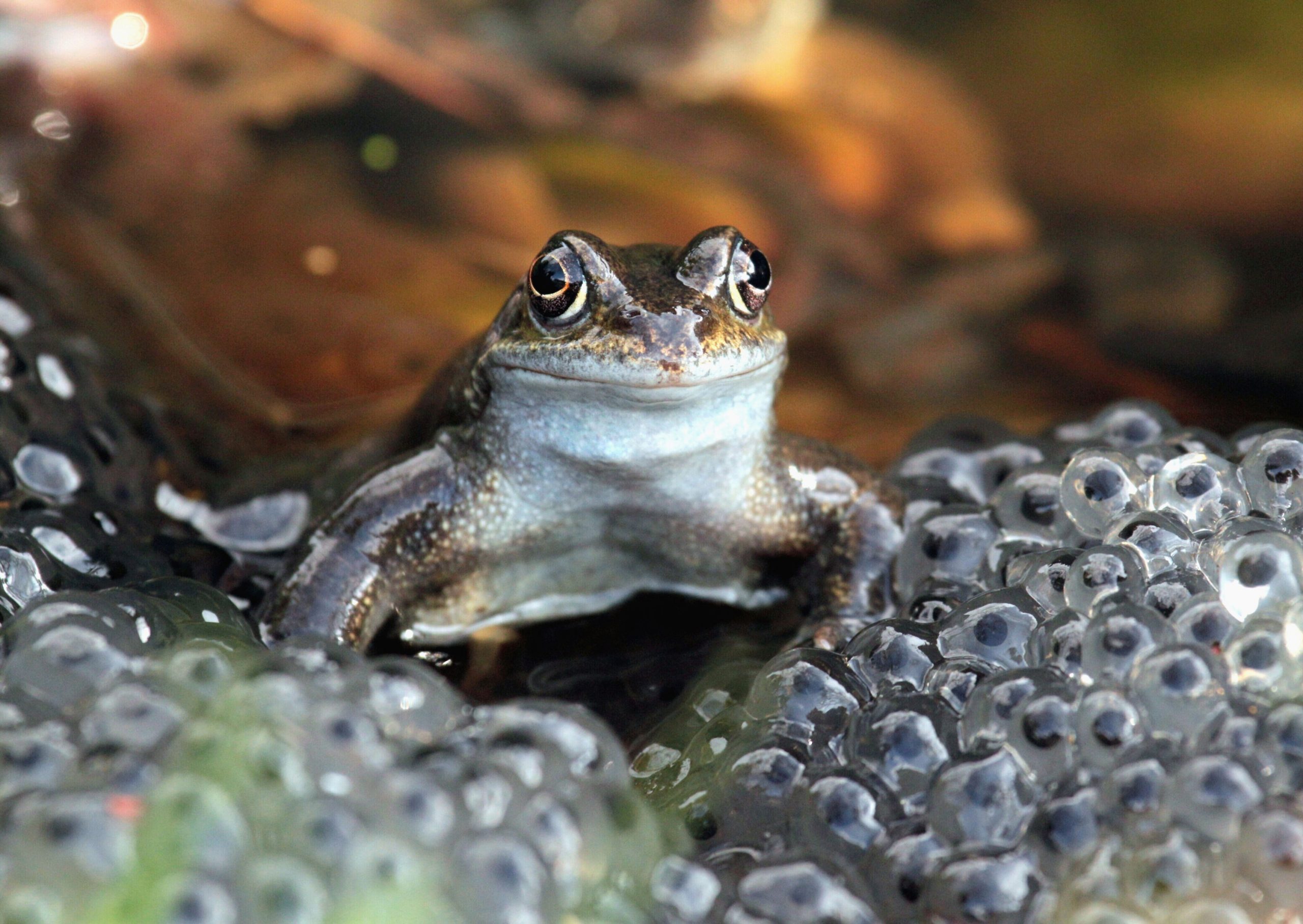
March in the Forest
This month I’ll be doing quite a bit of counting. In early March we’ll still be counting clumps of frogspawn in the many pools of the forest. It’s a survey that’s been going on for over 40 years and the results cast light on the status of the common frog in our area over that time, as each female produces a single clump of spawn. Although we look for spawning to start in early spring, the timing is affected by temperature and a cold snap will cause activity to stop and start again. Shallow water warms up more quickly than deep water, which explains the rather desperate appearance of clumps in shallow ruts and ditches. What if the weather is too dry? The frogs will be forced to spawn in whatever water is available (as amphibians they must lay their eggs and the tadpoles must develop in water) but that shallow rut may dry out before the early stages of the frog’s lifecycle are complete. The flora and fauna in a water body must also contribute to its attractiveness as a breeding place, but not in a way that is easy to understand. I assume frogs must be able to ‘taste’ these differences in the water.
Without human interference a pond will evolve from a fairly sterile hollow through stages of colonisation by plants and animals, eventually silting up and drying out as larger shrubs and trees establish themselves. One small pond that I have visited annually since 2023 has only just been colonised by water plants, and I have no idea how frog tadpoles (up to 65 clumps of them) have managed to survive in it before now. Or maybe they didn’t! I’ve heard it said that frogs always return to breed in the place where they were spawned, but I’ve also read that they can migrate one or two kilometres from a pond and we know that new ponds carefully created within that radius can become new breeding areas. Making a wildlife pond is always a valuable addition to your garden, and there are many books and articles available to help you. If you are interested in joining in with the frogspawn survey there’s still time: email info@wyreclt.org.uk or ring 01299 488083.
I’ll also be counting something larger this month, as 8th and 15th are the dates of the annual deer census. The results in recent years show a steady increase in numbers, with more and more Muntjac and Roe Deer joining our more common Fallow Deer. Dawn on those two Saturdays will see me walking quietly through Seckley Wood, binoculars at the ready and clipboard in hand. In spite of trials with drones in 2023 and 2024 the human version of the census will be needed for many years to come.
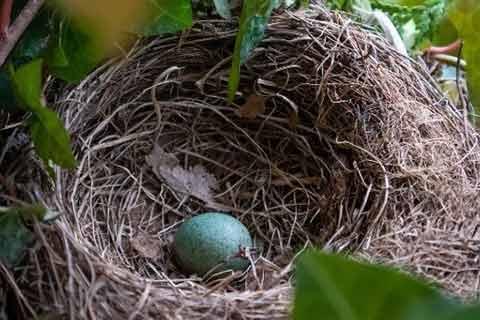
February in the Forest
At this time of the year we all get a little tired of short days and grey skies. It just takes a little observation, however, to see that signs of spring are plentiful.
I have already heard the Great Spotted Woodpecker drumming in that special way that means, ‘This is my bit of the forest and I’m looking for a mate!’ and every morning the dawn chorus is growing, with new singers joining as the month progresses. Get outside at around 7.30am and you may hear Great Tits, Song Thrushes and Wrens joining in with the Robins which have serenaded us during the winter. This is a good time to learn to identify some of the songs, as you have a chance to become familiar with the small number of species singing.
Many birds will be starting to build nests this month. Nests are protected by law as well as the birds themselves, and we should be careful not to disturb them, especially not to cut down or trim any trees or shrubs where birds are building. Bird species have different requirements regarding the location and type of nest they make. Robins choose well-hidden spots and are highly original: we had nests built three years running in a cardboard box containing a woodworking saw in an outhouse. Their nests are made of dry leaves, grass, moss, hair and feathers and the eggs are off-white with brown speckles. Blackbirds build nests of twigs reinforced with mud, often near buildings and occasionally on the ground: a strategy risking trouble from garden operations and domestic pets. The Song Thrush nest is a beautiful sight with its smooth mud lining and sky blue eggs (pictured). Male Wrens build several nests of twigs and moss in their territory to attract a mate but will only finish the nest selected for use with a lining of feathers, while Long-tailed Tits make almost spherical balls of soft moss, lichen, feathers and spider silk.
Many birds will make use of nestboxes and the week following St Valentine’s Day, ie 14th to 21st February, has been designated National Nestbox Week. It’s a good time to check on old nestboxes, cleaning out old nest material which may contain parasites (or even dead nestlings) and repairing damage. Predators such as squirrels and Great Spotted Woodpeckers are known to gnaw or peck their way into boxes to take eggs or young, so a metal reinforcement around the entry hole is a good idea. Most of our boxes on the farm are occupied by Blue Tits: the female making the nest of moss, wool, hair and feathers then laying up to 14 eggs which she incubates while her mate feeds her.
Meanwhile keep feeding your birds and with luck your space will provide a ‘des res’ for a little family which will delight you through the spring and summer.
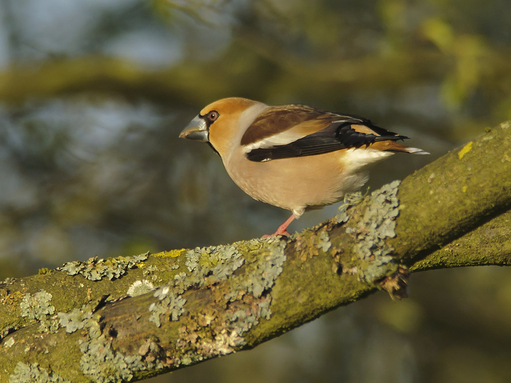
January in the Forest
One of the compensations of winter’s dark, cold days is the arrival of birds from even colder regions. These winter visitors include Fieldfares, Redwings, Bramblings and additional Blackbirds, Redpolls and Siskins from Scandinavian and continental European locations. Fieldfares are strong, upright birds with the mottled chest of the thrush family (which is what they are), moving around in flocks of tens or even hundreds. Redwings are smaller but have a cream stripe above the eye and an orangey-red underwing patch. Both species like to feed on berries and orchard fruit, so we can expect them in the forest, its surrounding orchards and in your gardens.
Another bird that you may see feeding on berries at this time of the year is the Hawfinch: a chunky, big-headed bird with a heavy bill, which it uses to get to the kernels of hard seeds and stone fruit, from which it gets its usual name and one of its Yorkshire names, Cherry Finch. We are more or less at the westernmost edge of their range and it used to be thought that they, too, arrived in winter. The truth was that they are very shy and don’t reveal the location of their nests, so that it was not until 1833 that one was found. It’s unusual not to see them at some point in the winter taking advantage of the food available in Bewdley’s Jubilee Gardens, thereby attracting that other visitor, the Twitcher.
This brings us on nicely to the RSPB’s Big Garden Birdwatch which will be happening this month from 23 to 26 January. You can sign up via their website now (www.rspb.org.uk/birdwatch) and will receive ticklists of the birds they want you to record with helpful colour pictures for identification. Then you choose when and where you will watch and count the birds visiting in a one hour period and finally let the RSPB know the highest number of each species you see at any one time. 610,000 people took part in last year’s survey. As the RSPB’s website says, ‘House Sparrows took the top spot, but counts of these chirpy birds are down by 60% compared to the first Birdwatch in 1979. In fact, we’ve lost 38 million birds from UK skies in the last 60 years. With birds facing so many challenges, it’s more important than ever to get involved in the Birdwatch. Every bird you do – or don’t – count will give us a valuable insight into how garden birds are faring.’
2024
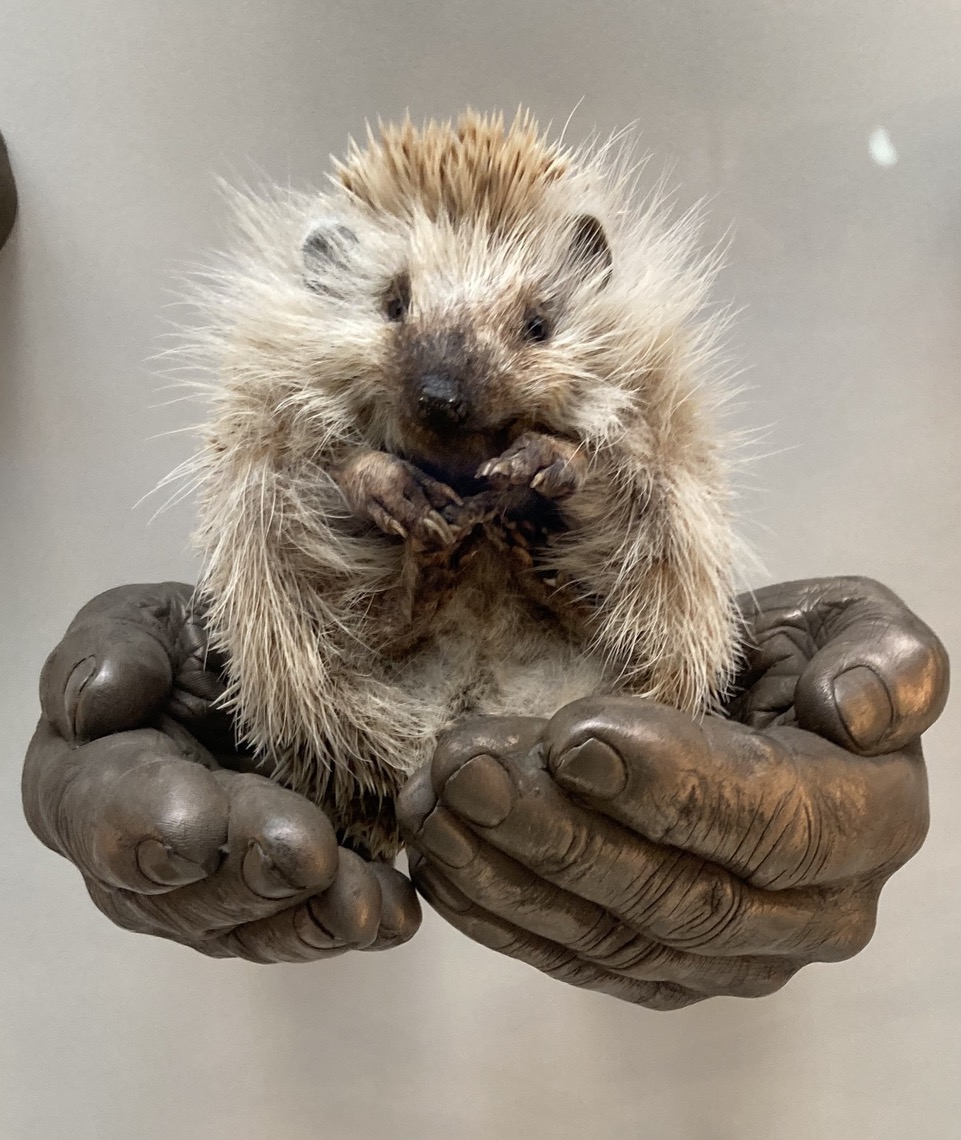
December in the Forest
This rather arresting image is part of a display in the Oxford Natural History Museum, a favourite destination of ours when we’re with our young grandson. The caption under it reads,
‘The UK has lost around half of its biodiversity since the Industrial Revolution to become one of the most nature-depleted countries in the world. A main cause is habitat loss, with over two thirds of land used for agriculture, industry, roads and buildings. Hedgehogs may be a casualty. Although the hedgehog population appears stable on mainland Europe, they are declining steeply in the UK for reasons that are not yet clear.’
A sad state of affairs for a much-loved and formerly familiar wild creature, and for the rest of our wildlife. Healthy hedgehogs should be hibernating by now in piles of twigs and leaves: a gap under a shed or shrub would be a favourite place. If you see any up and about at this time of year they will probably need help – perhaps a dish of cat food will make the difference to their survival.
If we love the natural world we’ll look after it. Here are some suggestions for getting back in touch with nature this season:
- Go on a collecting walk in the forest. Children love to collect things. Take a basket and look for cones, seed heads, twigs, evergreen leaves, berries and feathers to make your own Christmas wreath or table decoration. (Only take fallen material, and only if you have the landowner’s permission).
- Upload an ID app. There are plenty of free apps to help you identify birdsong, plants, butterflies etc. They add to our enjoyment of a winter walk (though you won’t see many butterflies!)
- Get to know the night sky. On a clear night get away from light pollution, wrap up warmly and get comfy on a deckchair or recliner and be amazed! There are planets, constellations, galaxies and satellites up there. The internet and apps will help with identifying what you’re looking at, and can even tell you when to look out for the Aurora Borealis.
- Make someone a wildlife-friendly present. A packet of seeds for some nectar-rich flowers (perhaps seeds from your own garden), a home-made bird feeder or bug hotel (more uses for those cones and twigs!),
- Plant a tree. This is the best time of year for planting trees and shrubs. Choose a native or at least something that will provide flowers or berries for wild creatures to feed on.
- Develop your artistic side. Photography, drawing and painting are all creative ways to encourage you to look carefully at your subject, so choose something natural.
- Join a conservation volunteer group. This way you’ll make friends, do some good for the countryside and maybe get fitter too!
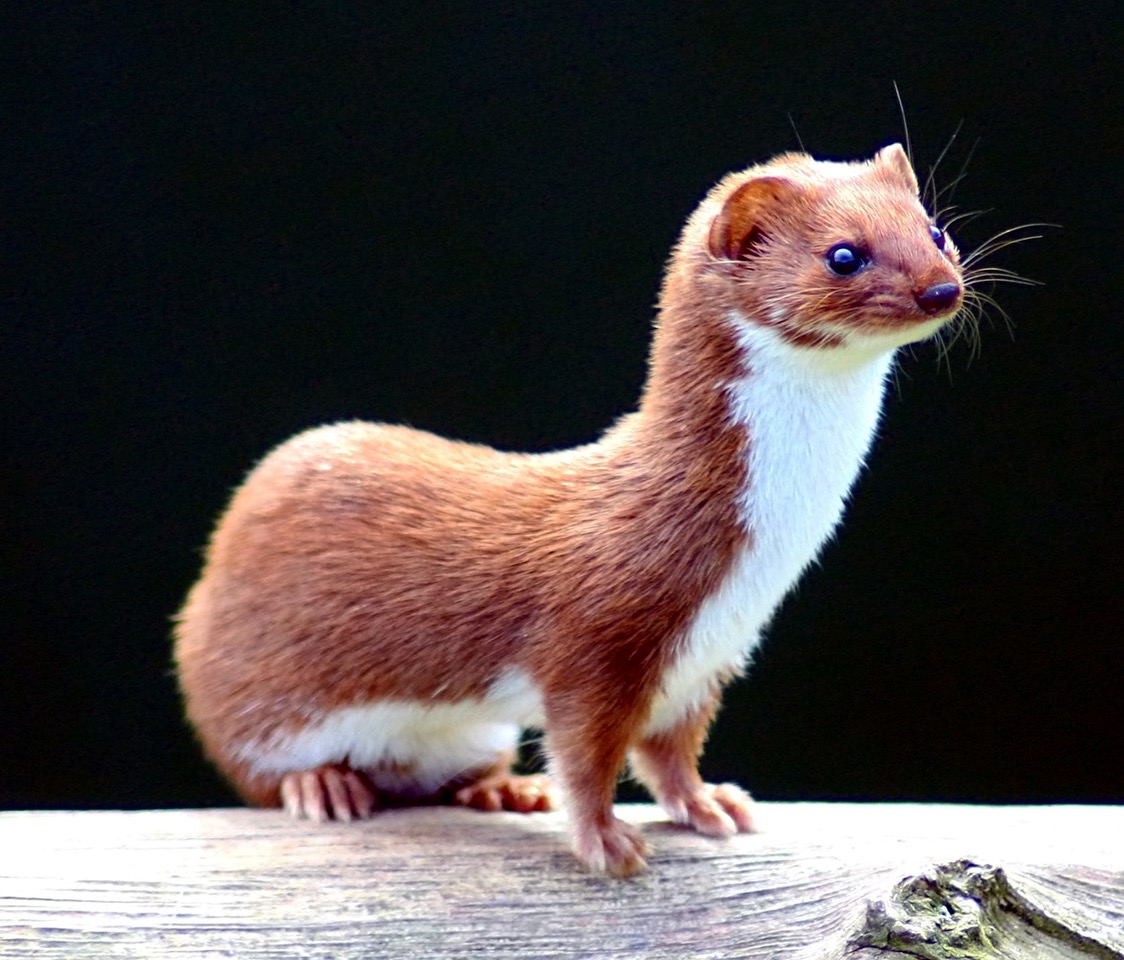
November in the Forest
The acorns and beech nuts have fallen, birds have eaten the rowan berries and the last blackberries have shrivelled on the bramble bushes. The colour is gradually draining out of the forest but the wild service trees still stand out in the forest like orange flames and holly berries glow among the spiky green leaves.
Male and female fallow deer have gone their separate ways after the rut and most mammals are now making themselves ready for the winter. Badgers will renew the bedding in their underground setts and moles will line their chambers with dry grass and moss, in plentiful times adding a store of worms, decapitated and tied in a knot! (See Fauna Britannica by Stefan Buczacki). Other creatures also make stores of food. Perhaps you may come across a cache of cherry stones belonging to a wood mouse or find acorns buried by a squirrel or jay. For some their food is available all winter and they have to stay active to get it.
One such is the weasel, which follows the paths and tunnels of mice, voles, shrews and to hunt them down. The weasel is the smallest of Britain’s mustelids: the family they share with stoats, polecats, martens and badgers. The Latin generic name – Mustela - comes from ‘mus’ (mouse) and ‘telum’ (javelin), ie a long, thin and fast mouse! An adult is 6 to 8.5 inches long, the males being larger than females. It is a law of physics that a large hot body will retain its heat longer than a small hot body and, being so small, weasels have to eat one third of their body weight every 24 hours to replenish their energy. In a year when their rodent prey have bred successfully they too will flourish. (A bank vole can have four or five litters a year and the young become sexually mature in four to five weeks. I don’t know how well they’ve done this year but I would have thought that anything trying to rear young whether in a nest above ground or a burrow below would have run the risk of being washed out). Weasel mothers have four or five kits in spring but when food is abundant they may have a second litter in July or August.
At this time of year young weasels will be leaving their parents to strike off on their own and you may be lucky enough to catch a glimpse of these quick little creatures crossing a road or path just ahead of you. Such an encounter would have been thought definitely unlucky in other times and in some other cultures. It’s a pity that these fierce but attractive little animals have such a bad reputation, from the ruthless criminals in ‘The Wind in the Willows’ to the term ‘weasely words’ meaning vague, equivocal or just downright misleading!
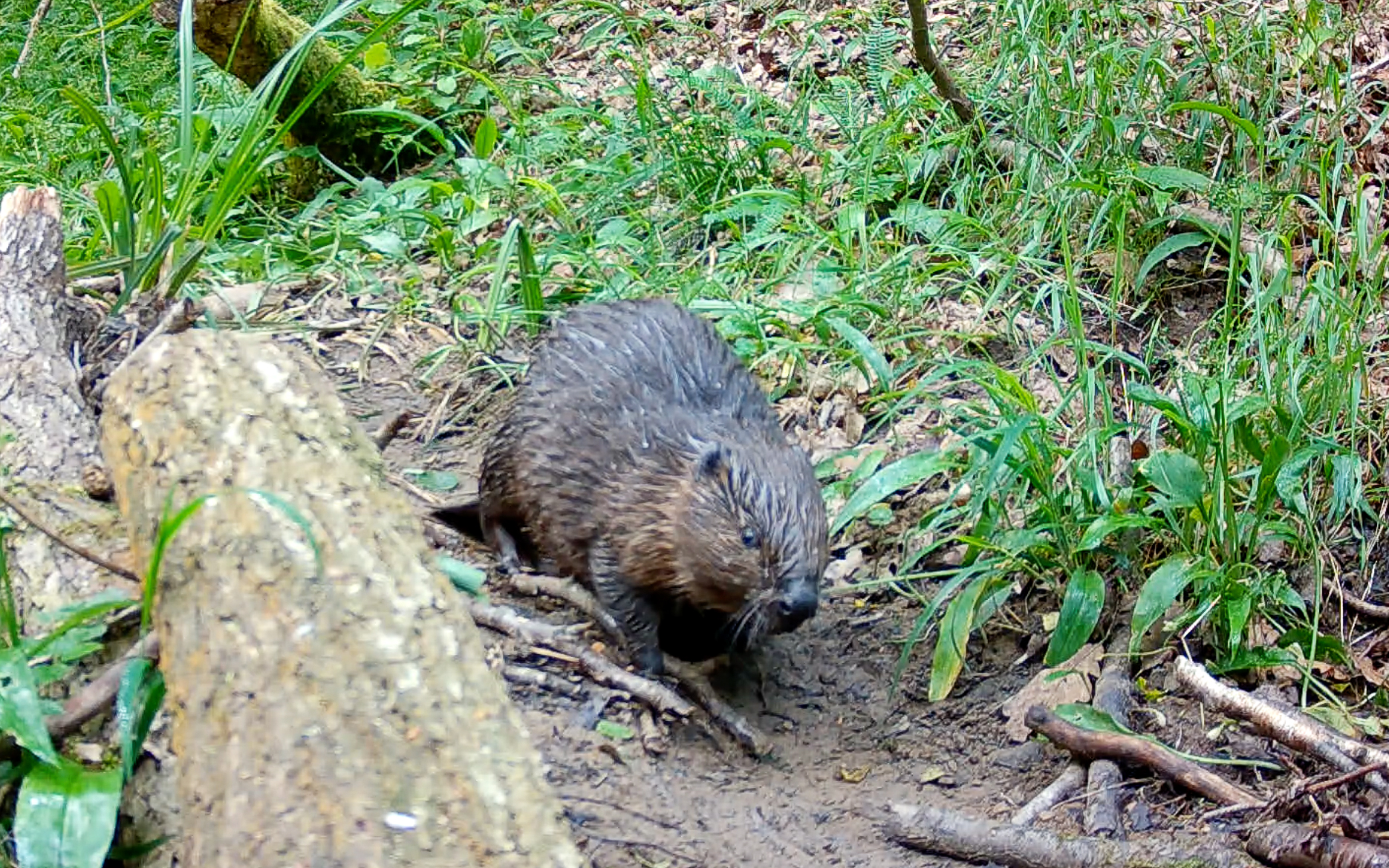
October in the Forest
The weather has been very variable this year (I could be less polite) and river levels have been going up and down regularly as a result. Like the creatures that live in the tidal zone of the coast, our freshwater wildlife has to cope with these changes. In dry periods they may become dormant in muddy pools, biding their time, or thy may be able to survive being swept downstream in floods. We humans find these extremes challenging too: Bewdley’s flood defences are progressing well and will soon protect properties on the east side of the Severn from the frequent and frightening surges which threaten them and their occupants. For a while.
If we are to have more, and heavier, rain we need to find ways of reducing the severity of the peak flows in the streams and rivers. Fortunately we can look for help to an animal that we drove to extinction in Britain several centuries ago: the beaver. By felling trees and creating dams they slowly change the habitat and slow down the flow of water through the landscape. Since April the Wyre Forest has had its own re-introduced beaver family living on a tributary of the Dowles Brook, and I made some enquiries about their progress. Before the animals came into residence Forestry England and Natural England (who jointly manage the part of the forest in public ownership) had made a temporary lodge for them in the bank of the release pool, but the two adults and four one-year-old kits started their own improvements straight away. As well as re-shaping their new home they started to cut down hazel, willow and other scrubby growth, partly to eat and also to build several small, new dams. Soon they started to concentrate on one dam and seem to be making new lodges nearby. In the last month they have felled one of the larger trees in the enclosure too.
“The new dam is holding a good 60 to 70 centimetres of water above the original stream bed”, says Stewart Carter of Forestry England, “and trail cameras have picked up images of buzzards, woodpeckers, dippers, wagtails, kingfishers, mandarin ducks, tawny owls, otters, mice and stoats all taking advantage of the change in habitat.” It looks like a ‘win, win’ situation for everyone!
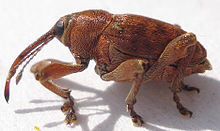
September in the Forest
This month I want to feature some of the smaller creatures that live amongst the oaks of the Wyre Forest: the invertebrates that can easily go unnoticed as we stomp along, busy with our own large-scale plans.
One such is the little Oak Bush-cricket. One turned up at home, unfortunately dead. It had flown into an open window attracted by the light but hadn’t been able to find its way out again. They live high in the tree canopy, so it’s not surprising that we don’t usually notice them, and they feed on plant material and also small, soft-bodied invertebrates such as aphids. They are an attractive,brilliant lime green colour with a yellow-orange dorsal stripe, and their long antennae mark them as crickets rather than grasshoppers. The female has a long, upward curving ovipositor, with which she will lay her eggs round about now in tree bark. The young (nymphs) will hatch next June.
Right now I’m preparing for a visit from a local Headway group, whose members have survived strokes or head injuries. Their trips to the farm are good fun but also have an educational element, bringing them into contact with the landscape and wildlife of Wyre. Their visits earlier in the year didn’t provide the right weather for a ‘bug hunt’ so I’m hoping that some sunshine will encourage them to venture into the hay field and that some interesting invertebrates will show up too! We’ll be sweep-netting in the long grass and also shaking low tree branches to see what falls off. In the past we’ve had a good ‘bag’ of spiders, flies, plant bugs, shield bugs and weevils from the latter. The weevils are a group of beetles with a long beak or rostrum on their heads to allow them to bore into their food (in this case, acorns) and in the female it is longer so that she can drill right inside the acorn to lay her egg, or eggs. The larvae eat the acorn and bore a way out once it has dropped to the ground in the autumn.
I’ll be very pleased to find weevils on our ‘safari’. Wyre has at least 130 different species, and although I’m not good at identifying them I think they’re cute and I’ll be happy that they are still part of our forest ecosystem.
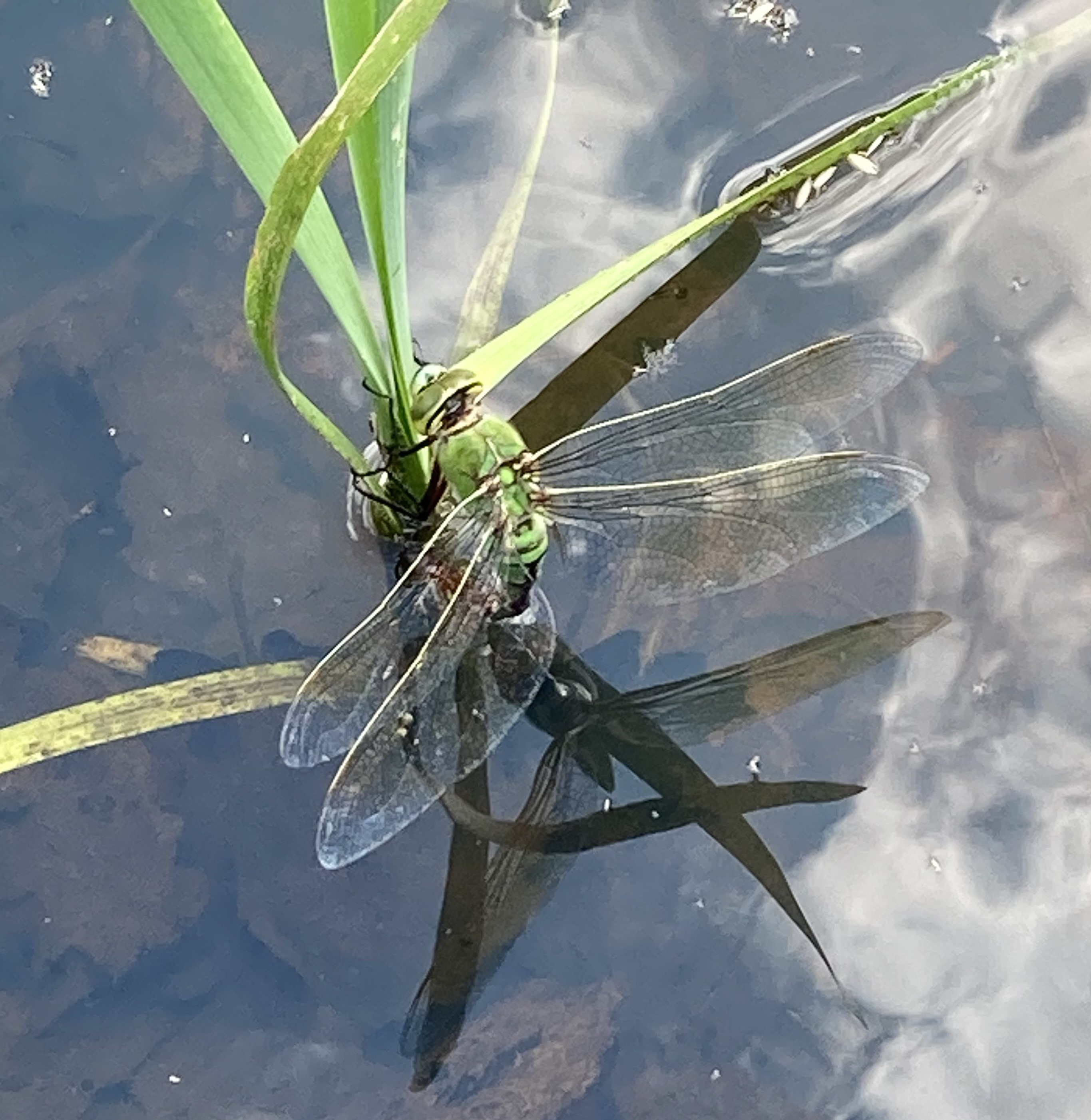
August in the Forest
In April this year Kent Wildlife Trust announced the results of their 2023 insect survey, based on the numbers of dead insects found on car registration plates by volunteers after 26,500 journeys nationwide. I don’t think you’ll be surprised to know that there had been a decline in numbers (especially if you’re the one who cleans the car!) but the scale of it is shocking – an 89% fall in the last 20 years. We simply can’t manage without insects. Sir David Attenborough has said, “If we and the rest of the back-boned animals were to disappear overnight, the rest of the world would get on pretty well. But if the invertebrates were to disappear, the world’s ecosystems would collapse.” If I’ve noticed the decline, living as I do in the middle of a National Nature Reserve, then we’re in trouble. I was cheered by the sight of a Marbled White butterfly recently after noting the complete absence of any but the Meadow Brown this summer.
Haphazard weather can be disastrous for invertebrates, but there’s no doubt that the way land is managed is a serious threat too. Nature-friendly practices account for a very small proportion of the landscape, with intensive farming practices such as habitat removal, indiscriminate pesticide use and monoculture of crops turning most of our country into a wildlife desert. How heartening it is then to hear about the success stories brought about by Worcestershire County Council’s partnership with Worcestershire Wildlife Trust to run Natural Networks, which works with landowners and provides match funding for work on their land that helps nature. From 2018 to 2023 conservation advice has been offered covering more than 2630 hectares of land right across Worcestershire, and as a result projects are under way in 130 hectares. Examples of the work include 27,700+ trees and shrubs and 4,400+ metres of hedges planted, and 50+ ponds and wetlands created.
An independent evaluation of the first five years of the project concluded that for every £1 spent, £4.20 was gained in public benefits like clean air, better water quality and improved nature-based recreation opportunities for local people, and the project has been extended into 2025.
Another initiative is Severn Treescapes, joining up woodlands from the River Wye to the Wyre Forest. A neighbouring smallholding have just transformed a field into a young mixed deciduous woodland, complete with sunny rides, a new pond and flowery grassland. Why make a new woodland next to the oak forest? Because the aim is to go ‘bigger, better and more joined-up’.
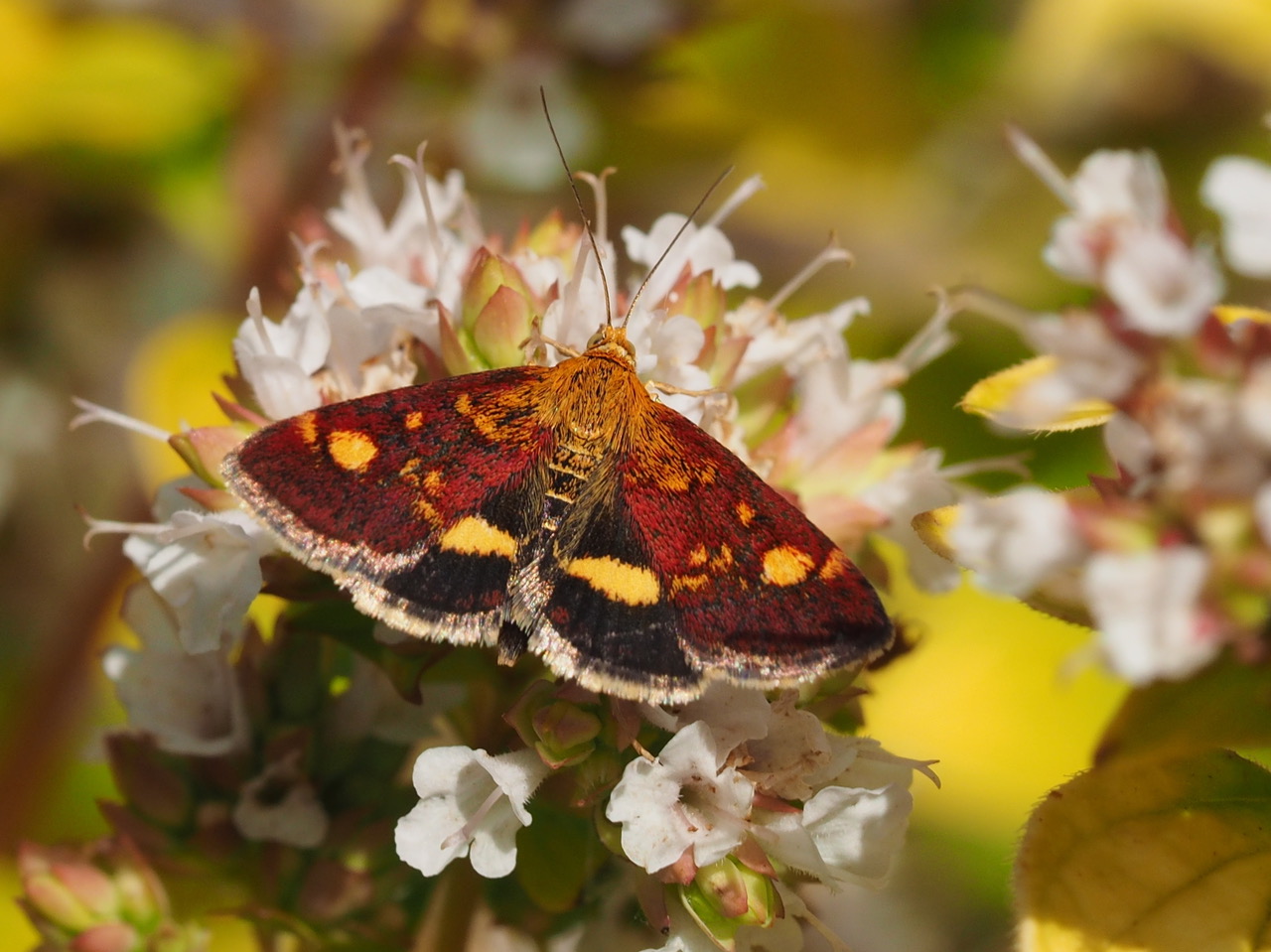
July in the Forest
I thought I knew about moths. They fly at night, are attracted to lights, are eaten by bats and some of them eat my carpets and jumpers. Then I heard about their importance in the biosphere: as part of many millions of food chains and playing their part in pollinating flowers and food crops.
Then something else happened. I found out that there were over 2500 species of moth in the British Isles and when I saw pictures of them, I was amazed to see that they weren’t all dull brown, as I had imagined. In fact many are extremely beautiful: the big Elephant Hawk-moth, delicate Maidens Blush and glowing Common Emerald to name but three! I can see how the urge to collect could set in!
We have friends (members of the Wyre Forest Study Group) who visit the farm occasionally to trap and monitor night-flying moths. They choose a warm, still evening and set up a very bright light over each trap. The moths are attracted to the light but then hide away in the egg boxes placed as refuges until the trappers identify and release them at the end of the session. Their records are sent to the Worcestershire Biological Records Centre and add to the data from the Wyre Forest amassed by keen entomologists since the mid nineteenth century. This is a very important habitat for moths, with 1112 species being found in the Wyre Forest and another 75 nearby. Although numbers have suffered here, as in so much of the UK, there is some optimism that recent changes in woodland management (particularly the reduction in dark conifer plantations and opening up of rides, glades and coppice plots in the deciduous sections) will benefit many moth species.
Anyone can take part in the National Moth Recording Scheme. Many moths fly during the day rather than at night, and you may see them while you’re relaxing in the garden: in fact Butterfly Conservation’s website says that an ordinary suburban garden is likely to host over 100 species! Identification is relatively easy for most species, especially with one of those snazzy smartphone apps (made for those of us with poor eyesight and poor powers of retention of information). Go to https://butterfly-conservation.org/moths to find out more.
Many thanks to Mick Farmer for the photo of the tiny but beautiful Mint Moth (genus Pyrausta) which visited his Bewdley garden.
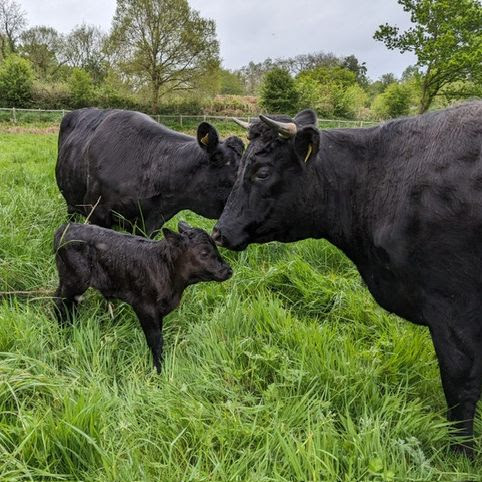
June in the Forest
This is a wonderful time of year in the natural world. It’s all go – we have a Pied Flycatcher’s nest in a bird box at the back of the farm’s vegetable garden (more like the wildflower patch at the moment), the House Martins are investigating the farmhouse eaves and each evening we have bats doing circuits of the house and outbuildings. Crevices in the walls are full of nesting Sparrows, Blue Tits and Mason Bees. I feel that I have to say, ‘Excuse me’, just moving about the place, interrupting as I do the important business of feeding and breeding.
The meadows are a delight. The Cowslips and Lady’s Smock have given way to buttercups, Red Clover, Pignut, Yellow Rattle, Knapweed and meadow grasses such as Sweet Vernal Grass. Year by year we try to increase their diversity by reducing the fertility of the soil. The odd bit of cow, sheep or deer dung is fine but artificial fertiliser or slurry-spreading would encourage grassland bullies such as Ryegrass, Docks, thistles and Nettles. Yellow Rattle is often mentioned as being a highly-desirable constituent of wildflower meadows because it is a hemi-parasite of grasses, reducing their vigour by taking some of the sugars they produce. Grazing is an important part of the plan too. Spring grazing is followed by haymaking then the remaining grass is eaten off by cattle or sheep. Twenty years ago we started the herd of Dexter cattle at Uncllys by buying a cow (Amani, pregnant with Percy) and calf, Gwillan, from Stuart Norgrove at Haye Farm. Breeding and further purchases took the herd to over fifty, and then in 2010 they were bought by the Wyre Community Land Trust (WCLT) who continue the job of grazing many small meadows in this area.
Many local people have been partners in this conservation effort, volunteering with work such as checking the cattle, moving them to new pastures or home for TB tests, fencing meadows and putting in water supplies. Open Farm Sunday on 9th June is an opportunity for all ages to visit the headquarters of the WCLT at St George’s Farm, Tanners Hill, Bewdley, DY12 2LS (signed from The Hop Pole) from 11am to 4pm. They will meet the small herd of Dexter cattle and there will be guided walks around the woodland, orchard, meadow and woodyard to explain what the Land Trust does. There will also be a children’s activity and green woodworking for adults, local producers including Wildjac with their array of botanically-inspired spirits, and Peter the Bee with native wildflower plants. Apple juice and wood products will be on sale and you can buy light refreshments or bring your own picnic.
For more information contact Liz: 07905188856, liz@wyreclt.org.uk
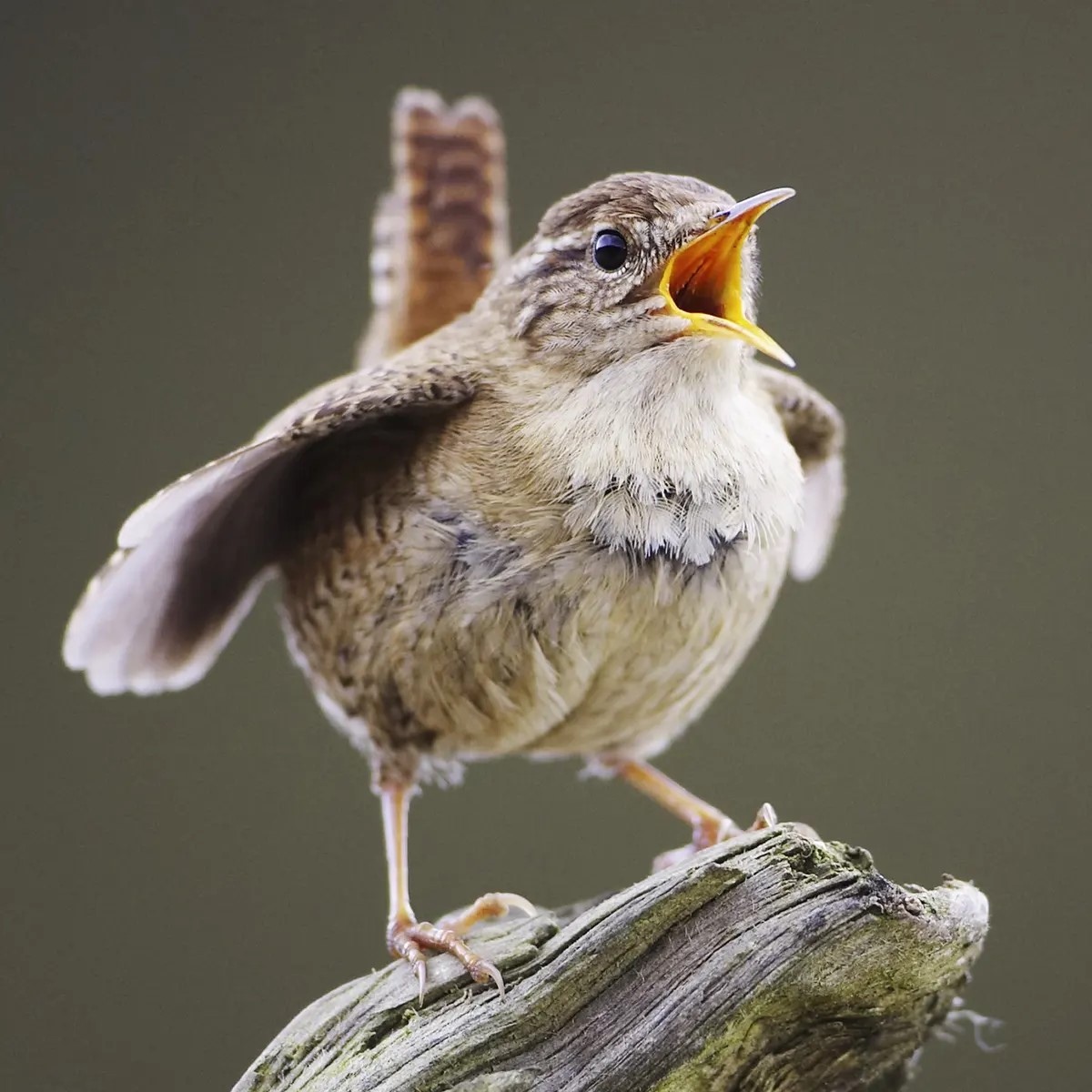
May in the Forest
This is the best month for dawn chorus walks, when you can hear a symphony of song from many different kinds of birds in woods, parks and gardens. On the May Day holiday (6th May this year) the sun will rise at 5.26 am – wait until the end of the month and it will be nearly half an hour earlier.
It is generally the male who sings, driven by the imperatives of the breeding season: to announce their territory, deter rival males, attract and keep a mate. The songs can be very complex and evidence suggests that birds will sing a basic song peculiar to their own species but listen to, and learn from, others of their kind and practice to produce a more sophisticated version with various embellishments. This can result in a ‘local dialect’ of song. I’m doing well if I can identify a handful of bird songs. One of my favourites, which I’d noticed and listened to long before I knew the singer, is that of the Wren. This tiny bird packs a punch with its loud song of repeated notes and rapid trills: an amazing sound to come from a miniscule body.
House Martins are newly arrived and will set to making their nests of mud under the eaves of houses and barns. Should the weather have turned dry, you can help them greatly by putting out trays of mud in a location safe from predators.
For many birds the breeding season is already well-advanced. You may come across a baby bird looking helpless and wonder how you can help, and indeed whether you should try. The advice of those who know, e.g. Songbird Survival, is that nestlings (with no or few feathers) can be returned to the nest but fledgelings (which have feathers and are ready to leave the nest) are best left alone as a parent bird is probably feeding them. Also:
- Keep any intervention to a minimum
- Keep surrounding areas free of potential predators, particularly cats - keep your cat indoors where possible during this vulnerable season for baby birds
- If you do need to handle a bird, wear gloves and maintain minimum contact to minimise stress for the bird
- Don’t try to feed and look after baby birds yourself – this needs specialist experience of a wildlife rehabilitator. Our nearest is Cuan Wildlife Rescue at Much Wenlock.
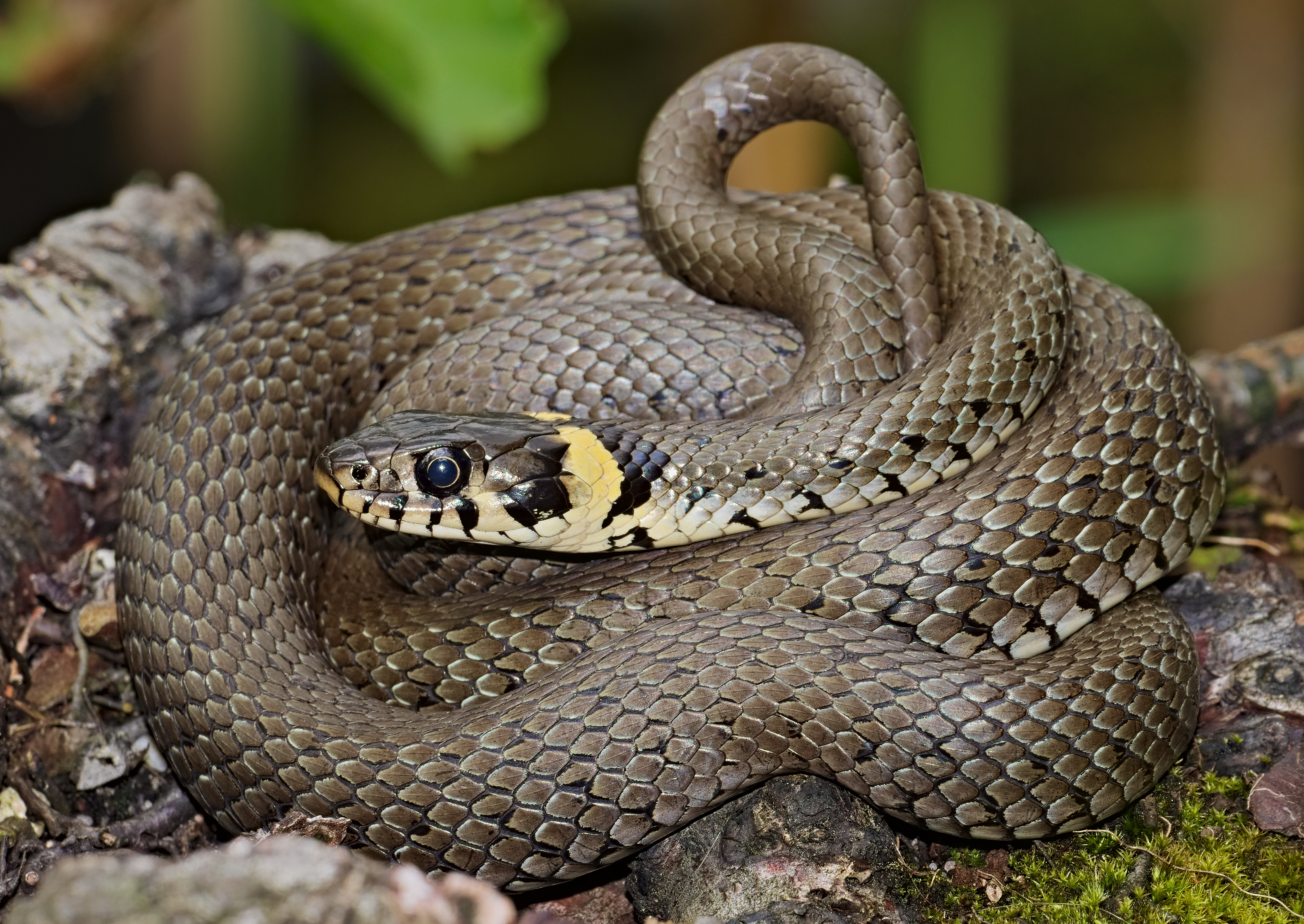
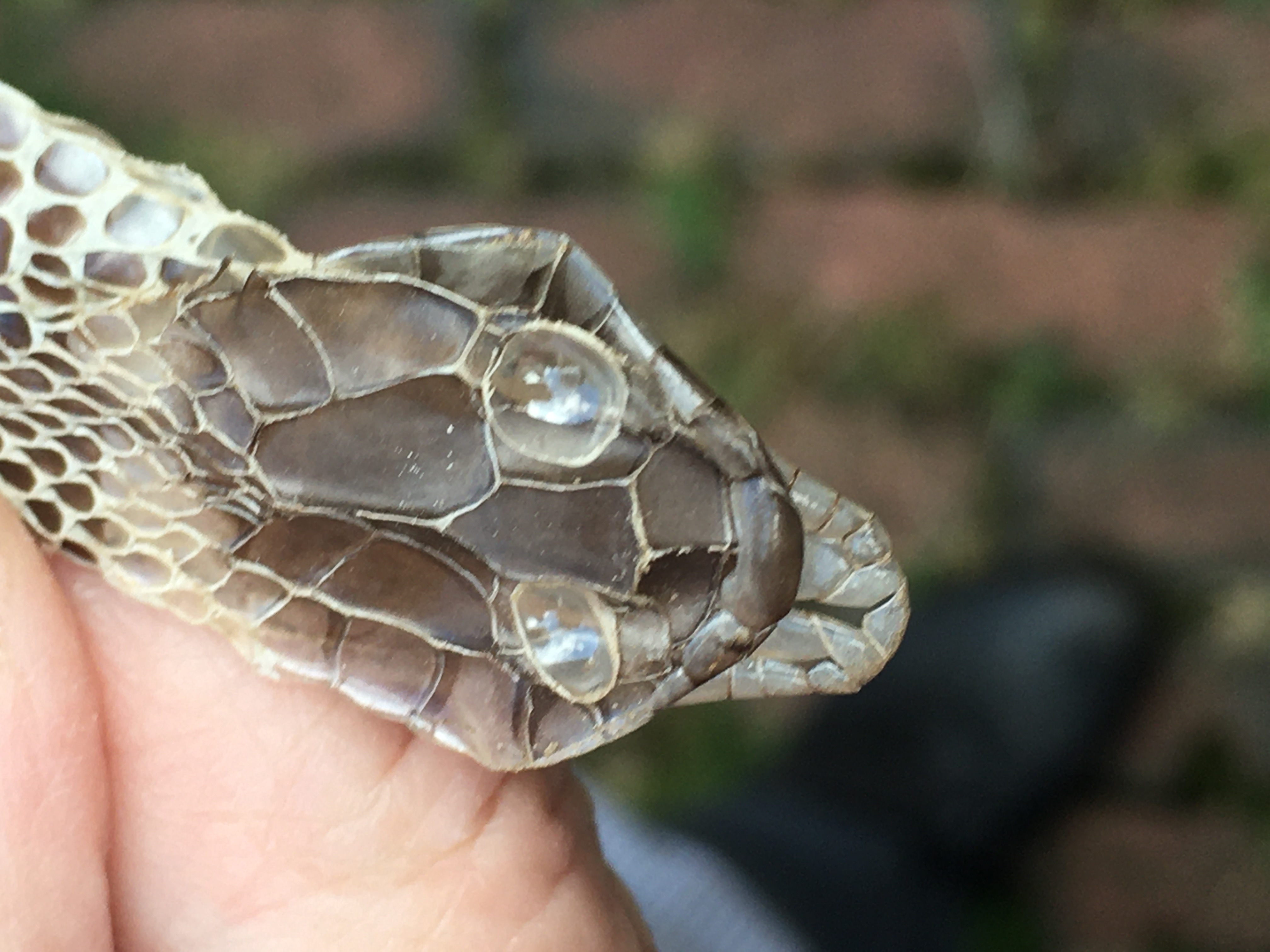
April in the Forest
We all love a bit of sunshine and our reptiles (lizards, slow worms and snakes) love it even more. They don’t have a mammal’s ability to regulate their body temperatures so they need to move to a place of greater or lesser warmth to keep their metabolism at an optimum temperature. A big stone or patch of dry bracken can provide a nice, warm spot in the sun but exposes them to the watchful eyes of predators such as buzzards. You may have been lucky to find them under tarpaulins or in piles of composting plant material, but deliberately providing basking places gives you a much greater chance of seeing them and gives these declining species of wildlife some much-needed help.
We used to see slow worms very occasionally when we first came to the farm but it was generally when our chickens, which were then very free-ranging, caught one and fought each other for the privilege of eating the poor creature. Now we have several pieces of corrugated iron (also known as ‘wriggly tin’ but made of steel in any case!) placed around the farm and lift them from time to time during the summer to see what we can see! These ‘refugia’ can also be made out of roofing felt or Onduline and need to be placed beside long vegetation which will allow the creatures to move safely to and fro. There are certainly many more reptilian visitors than we would have known about otherwise, and they are often joined under the tin sheets by black ants and voles, both of which like to make nests in the warm, dry conditions. Our best count so far was on a warm August day last year when we had a total of 11 grass snakes and 15 slow worms under 5 of the tins. I chose this subject for the April article because this is usually the earliest month when we can expect to see any reptiles, although we have already seen a small slow worm in March this year. In September we often find several grass snake skins either under the tins, by rocks or in the wood pile: anywhere where the snake can take cover while using a rough edge to help slough off the old skin which it has grown out of. The photos show a grass snake and the creepy-looking head end of a shed skin. This one was 96cm long and was probably from a female.
Incidentally, grass snakes do not have a venomous bite and so are completely harmless. They have learnt to keep away from people and will take cover as soon as they feel the vibrations of approaching steps, so if you see one you can feel very honoured!

March in the Forest
March is something of a changeover month. Winter visitors such as Redwings and Fieldfares will be on their way back north but the summer visitors should be arriving and we may see Sand Martins by the river or hear Chiffchaffs making their onomatopoeic calls. Many of our year-round residents are already laying eggs in their nests and others may already be feeding nestlings.
Tawny Owls and Ravens are examples of these early breeders. The Raven (pictured) is a frequent visitor to the farm but I have yet to see one at close quarters or even at ground level. They most commonly announce their presence high above the tree canopy as they fly over, repeating a throaty, rasping ‘Cronk’, and often tumbling in acrobatic displays to each other. They pair for life, which can be up to fifteen years. They are completely black like their relatives the crows and rooks, but are much bigger, bigger even than buzzards. Their size, long wings (giving a wingspan of 1.3 metres) and diamond-shaped tail help to identify them at a distance but if you could see them close up they would also be distinguished by a heavy beak and bristling throat feathers.
Literature and older text books associate Ravens with the cliffs and mountains of the north and west, and although they have extended their range eastwards over most of Britain, their presence, and especially their calls, evoke a sense of wildness and loneliness. These are not the only emotions they inspire: over many hundreds of years they have often been feared or hated. They feed on carrion (as well as small living prey) and can be relied upon to turn up when an animal dies, starting their feast by pecking out the creature’s eyes. There is evidence that they sometimes kill lambs and even adult sheep, so it’s not surprising that many farmers hate them and gamekeepers persecute them. They are also associated with battlefields and feature in superstitions and folk tales as harbingers of death. The other side of the coin is that they are highly intelligent: good at mimicry, feats of memory and problem-solving. They can make fascinating and amusing pets and the famous Ravens that guard the Tower of London are tame, cared for by a Yeoman warder known as the Ravenmaster. In case you didn’t know, the Tower and England itself will fall if they ever leave. But was King Arthur turned into a Raven, and will he return to save his kingdom when disaster threatens?
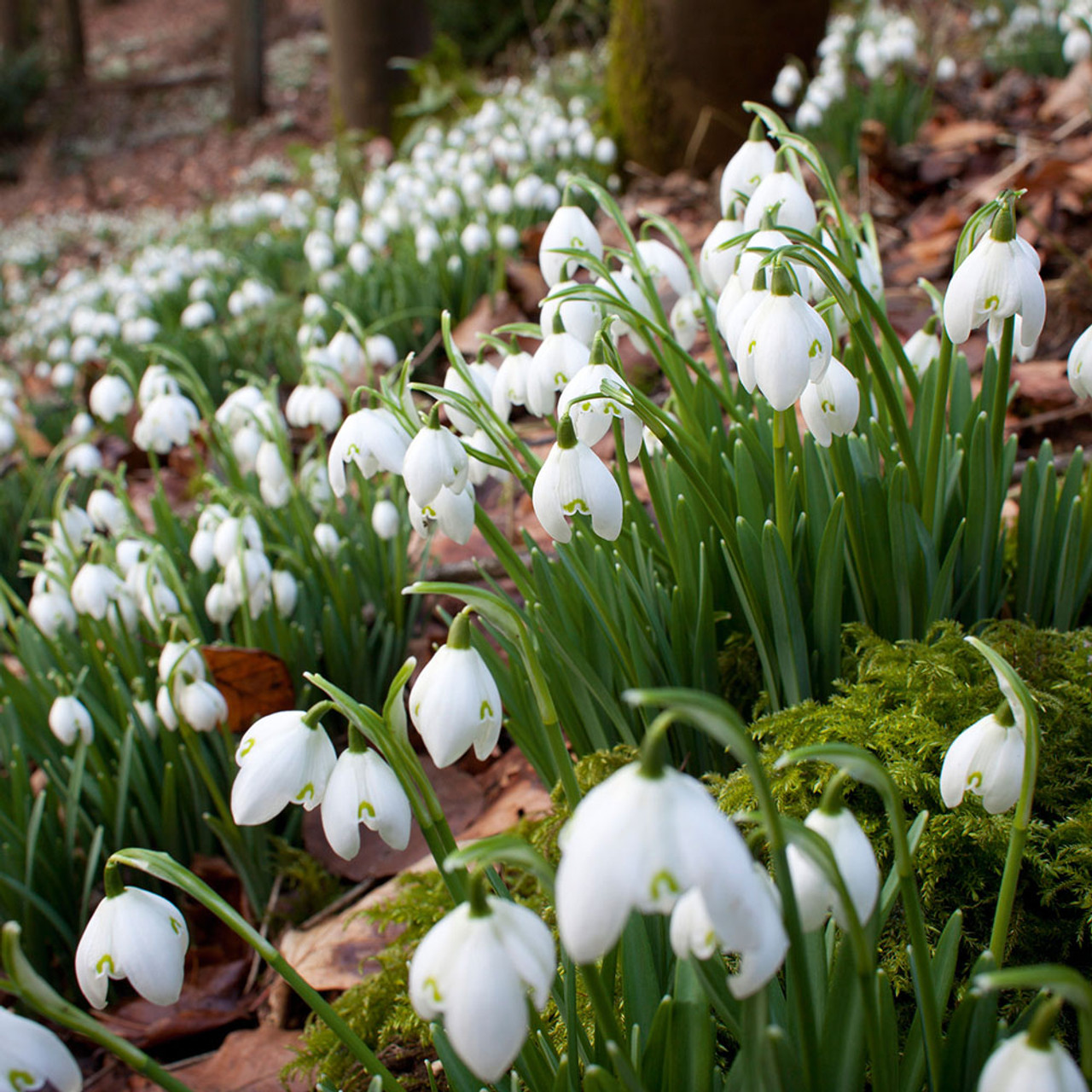

February in the Forest
February means snowdrops, hazel catkins and frogspawn, usually in that order. I
think I write about them every year, mainly because I get very excited about
each sign of spring. The common snowdrop, Galanthus nivalis, is probably not*
a native of the British Isles but has naturalised itself very happily in woods,
hedge banks, parks and gardens: wherever the soil is damp.
(* My older books such as Roger Phillips’ ‘Wild Flowers of Great Britain’ and
Richard Mabey’s ‘Flora Britannica’ differ, coming down on the side of the
snowdrop probably being a native.)
Anyone who has gardened around them will know their little white bulbs, which
proliferate and hang on to life in the most unpromising situations. This is their
means of spreading, benefiting from being washed along streams during floods
for instance, rather than relying on pollination of the flowers and the dispersal
of seeds, pollinators being few and far between at this time of year. The
Woodland Trust website says: ‘Traditionally, snowdrops were used to treat
headaches and as a painkiller. In modern medicine a compound in the bulb has
been used to develop a dementia treatment’. It would be unwise to self-medicate
with this remedy as the bulbs are poisonous.
They can make a spectacular show this month, earning one of their old names,
‘February fairmaids’. Another, ‘Snow piercer’ is a translation of their French
name and refers to the strong leaf tips which can push their way through snow.
This is a very useful adaptation as they can be seen flowering in January and
even December in some years. ‘Candlemas bells’ refers to their association with
the feast of Candlemas on 2nd February (the feast of the Purification of the
Virgin Mary after the birth of Jesus). Snowdrops were planted around churches,
abbeys, priories etc. and bunches were brought in as decorations for the feast
day. Even where these ecclesiastical buildings have gone the flowers persist
among the ruins. The site of Dowles Church by the River Severn in Bewdley is
just one of the many places where their pure, white beauty can be enjoyed.
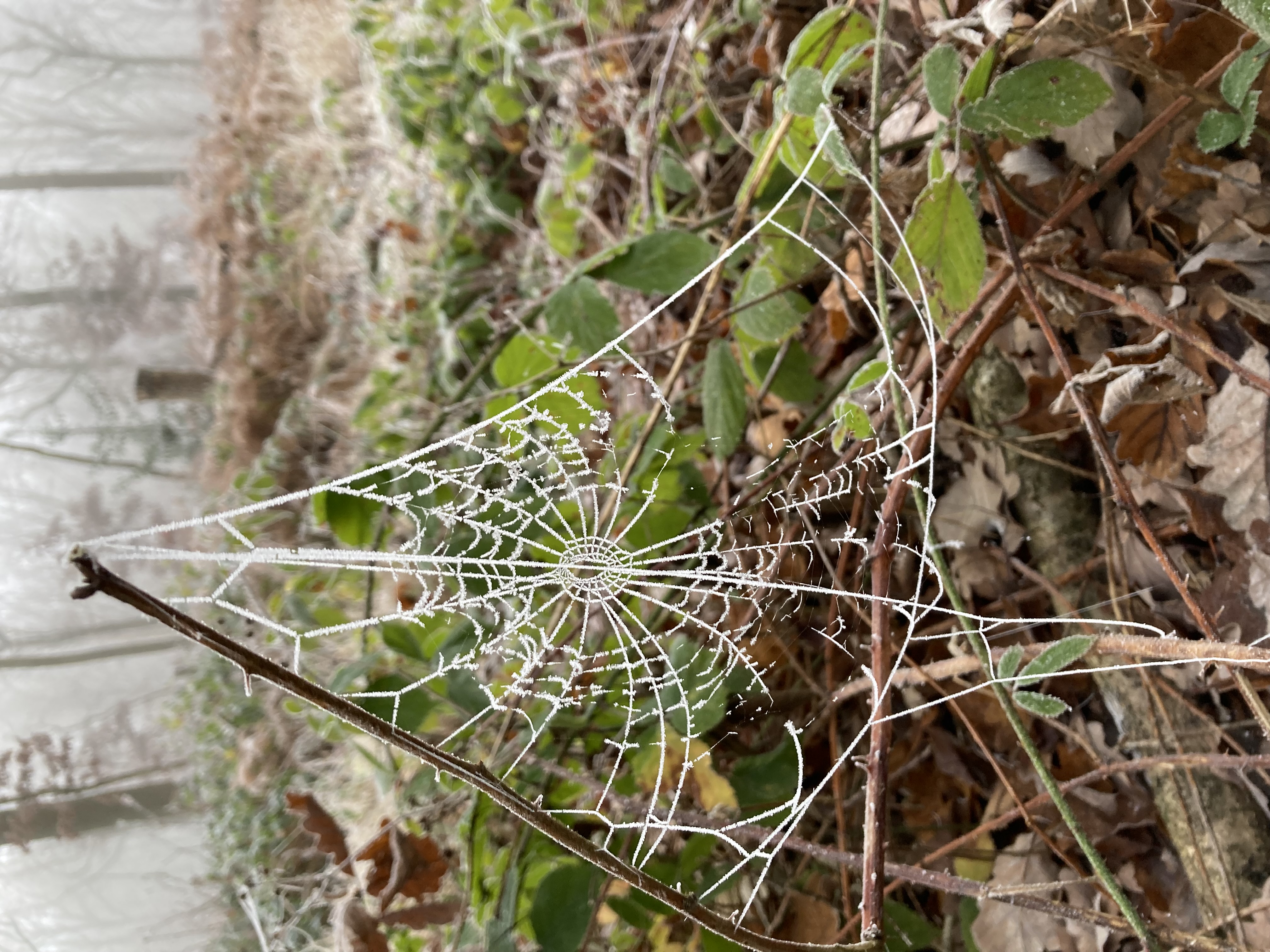
January in the Forest
The start of the year offers a chance to pause, reflect and make positive
decisions. As the County Council has recently published the Worcestershire
State of Nature Report 2023, I thought I would look at some of its main points,
both good and bad.
‘The crisis facing our native habitats and species is a serious one, driven by
threats such as habitat loss and fragmentation, pollution, invasive non-native
species and climate change’, says the introduction. Fortunately the Wyre Forest
itself is designated as a National Nature Reserve (managed by Natural England
and Forestry England) covering 1455 hectares, with another 60 hectares of
adjoining woods also sympathetically managed. Here the aim is to restore the
semi-natural ancient woodland by reducing conifers and creating a mosaic of
forest, orchard, grass and heathland habitats. Elsewhere in the countryside
woods have succumbed to loss and fragmentation, neglect, soil compaction
from machinery, fly-tipping, pollution from adjoining land and other pressures.
Even in the NNR there are the threats of fire, flood, drought and storms, new
tree diseases, and disturbance to wildlife from excessive recreational pressure
(the latter, though, having eased off to some extent from the frantic days of
lockdown!).
On the other hand we can be cheered by the success stories. Our forest is one of
the most studied in the country, with the Wyre Forest Study Group,
Worcestershire Wildlife Trust, Butterfly Conservation, the British Trust for
Ornithology and others adding to the picture. This information feeds into the
decisions about the way the forest is managed, and as a result we have
initiatives such as creating wide rides for butterflies (including the Pearl-
bordered Fritillary) and mixed-aged/mixed-species forest plots to support
woodland birds. The wildlife of wet areas, meadows and heaths within the
forest are also being helped by sympathetic management, often with the
involvement of conservation volunteer groups. They in themselves are one of
the ‘good news’ stories: volunteers from the Wyre Community Land Trust
helped to plant 25 new orchards and restore 14 more in the locality, preserving a
beautiful landscape feature and a rich habitat for wildlife.
What will you do for nature this year? You can volunteer your time to monitor
wildlife or remove invasive Himalayan Balsam, for instance. Closer to home,
plant some pollen-rich wild flowers or make a garden pond. If you see something
nasty on your walks such as pollution or fly-tipping, report it:
pollution to the Environment Agency on their helpline: 0800 80 70 60 and fly-
tipping to Wyre Forest District Council or Shropshire Council (depending
where the incident is) via their websites. Most of all, I hope we’ll all be able to
get out there, enjoying the natural world, looking and learning.
2023
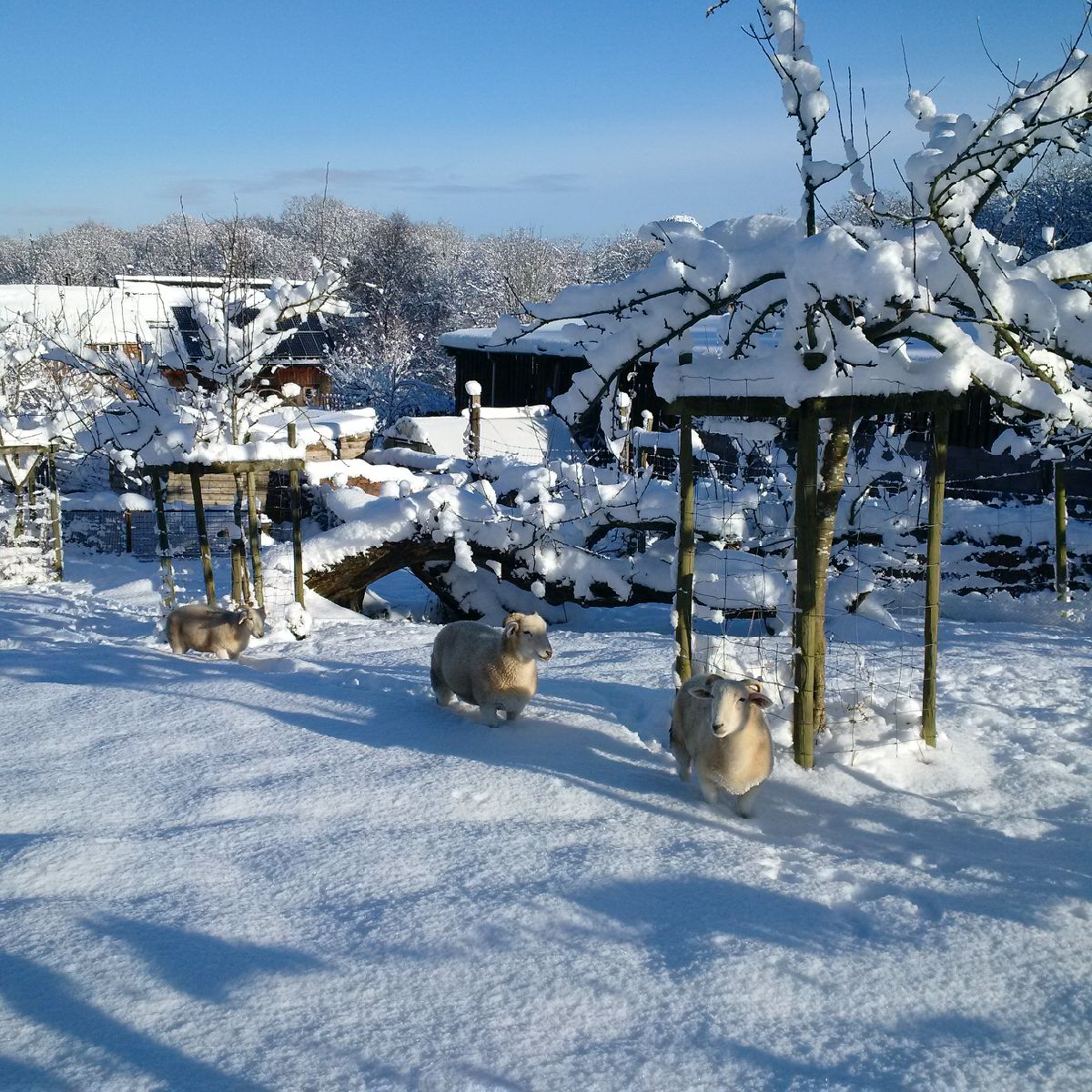
December in the Forest
I’ll be honest, I’ve had to go back a few years for this photo of the sheep at
Uncllys Farm looking rather nonplussed by deep snow in December 2017. But
we did have snow in December 2020 (lasting well into January 2021) and on
December 11th 2022, so there’s a fair chance that you’ll be reading this in snowy
circumstances.
‘The cold wind doth blow, and we shall have snow, and what will the Robin do
then, poor thing?’ goes the old rhyme. Some species migrate to warmer regions
while others stay put and adapt their behaviour. Dormice, bats and Hedgehogs
as well as many reptiles, amphibians and invertebrates have evolved the ability
to shut down their metabolism so that they can hibernate through the harsh
times of winter. Squirrels are well-known hoarders of food: the native reds
hiding acorns and nuts in a ‘larder’ among the leaf litter under a tree; the greys
burying them here and there (in your lawn and flower pots too!). That colourful
and noisy oak wood resident, the Jay, will do the same, and you may also come
across little collections of nuts, cherry or damson stones hidden by mice.
Most of the Fallow Deer grow a darker, thicker coat of fur, without the summer
spots. This makes them harder to see in the winter forest. Like Badger fur, the
hairs are hollow, giving an extra degree of insulation. There are quite a number
of white deer now and, though they stand out like sore thumbs during the rest of
the year, they are well-camouflaged if it snows. Lovely though they are, deer
are not always popular with foresters. Their diet includes tree shoots and bark:
the latter especially in the winter. This is why areas of new planting need to be
protected by high deer fencing and individual trees by tall tree tubes.
Snow brings a special brilliance and muffled quietness to the forest. A walk in a
fresh fall will tell the story of the night before. Which creatures have been
abroad? Who was the Fox following? Will those big, clawed prints lead you to a
Badger’s sett? Is it a dog or a Blackbird that has scuffed among the dry leaves
by the path? I’m already looking forward to it but hope we don’t get too much
of the white stuff.
A very happy Christmas to all.
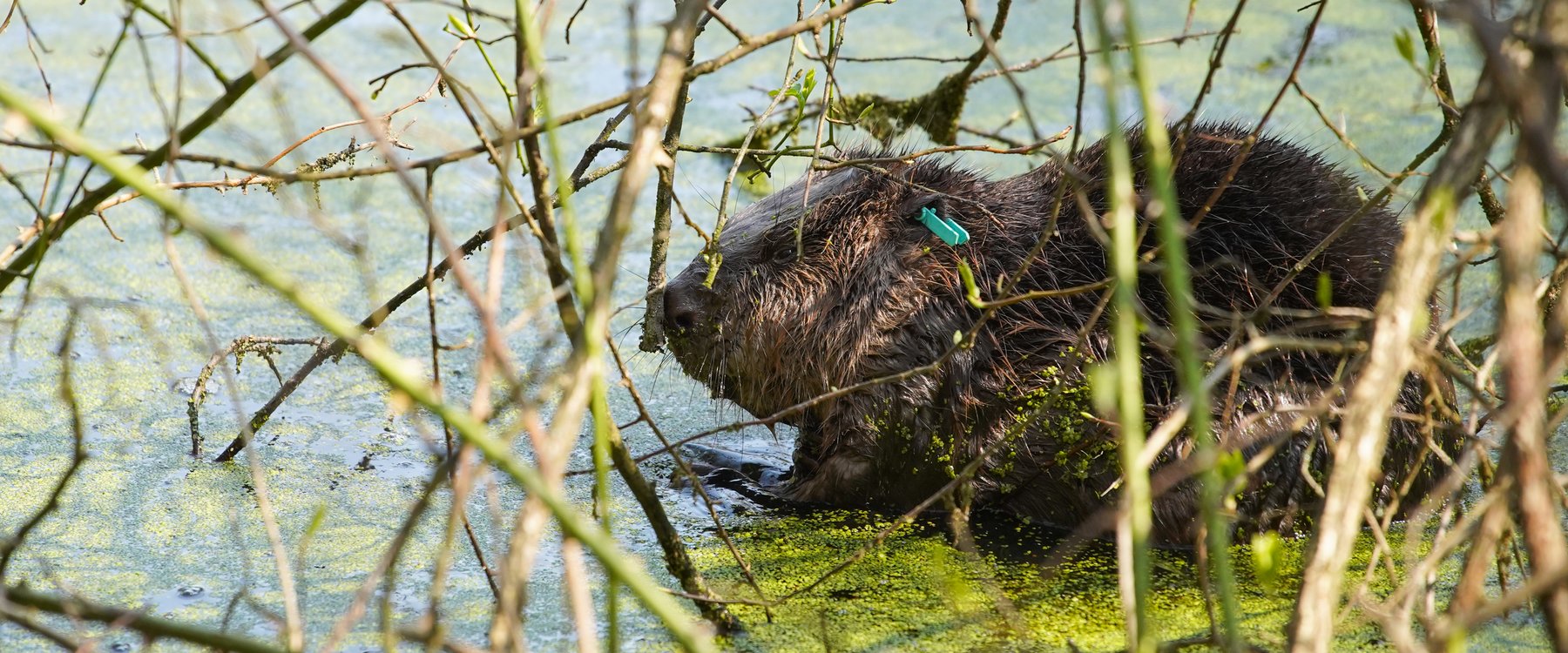
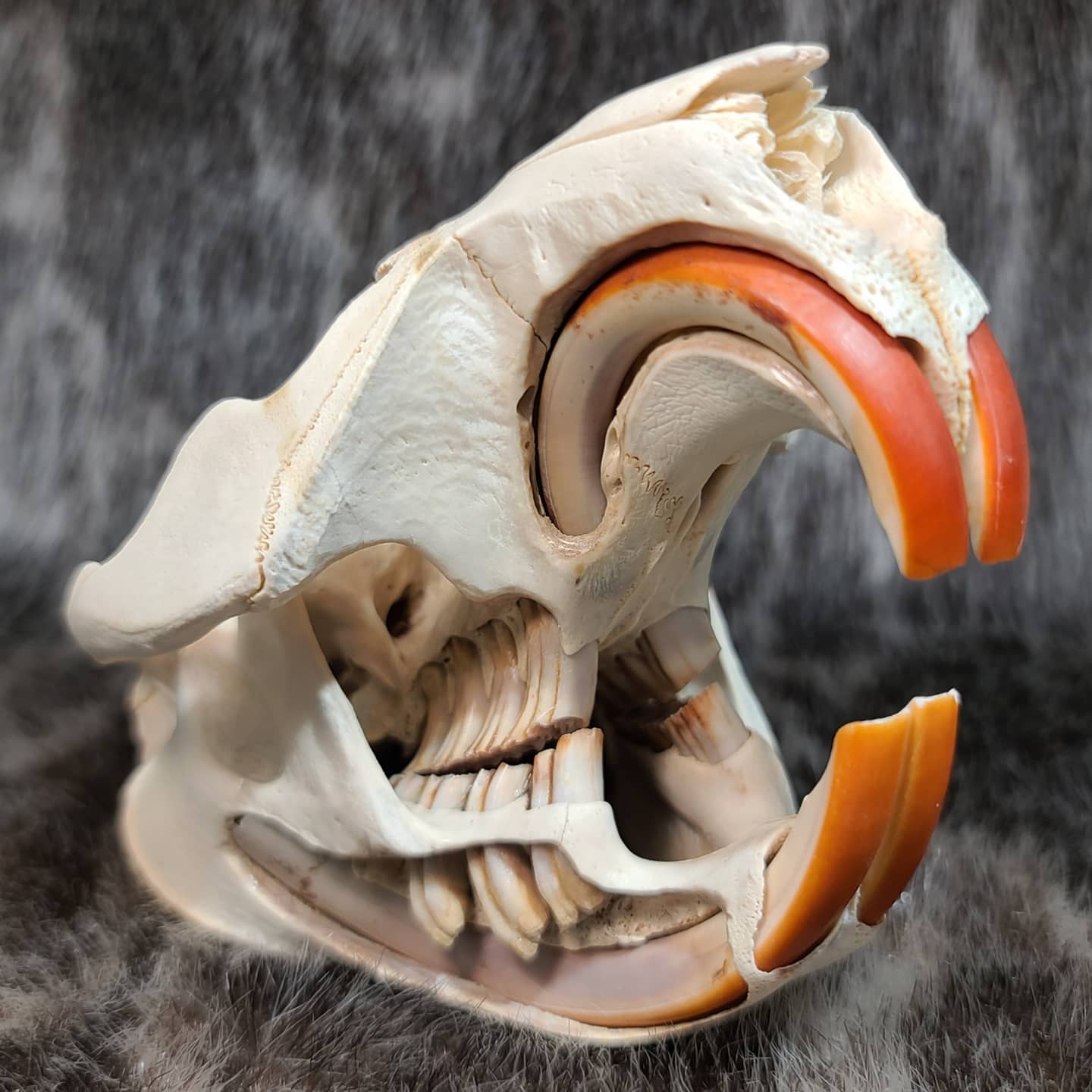
November in the Forest
During most of its history the Wyre Forest was home to a number of large mammals that we
don’t see around anymore, including the ‘Three Bs’: bear, boar and beaver. I wouldn’t be
comfortable sharing the forest with the first two, which had a liking for young lambs and
could do humans serious damage as well, but beavers are herbivores, living on water plants,
bark and leaves. Although they are well known for their ability to fell small trees and can
grow to a metre long from nose to tail and weigh 30kg they have never posed a threat to
people. In fact the reverse is true and they were hunted to extinction in Britain 500 years ago,
mainly for their fur and a product from their scent glands but also for their meat.
Beavers have extremely strong teeth and I’ve included a photo of an American beaver skull,
cut away to show the extent of the long, curved incisors. These have an iron-rich outer
enamel which gives them their orange colour and strength. The trees felled are divided up
into smaller branches and carried to build dams, restricting water flow and creating deep
pools. Lodges are made in the dams using mud as well as branches – a safe place for the
beavers to live and breed. A side-effect of this behaviour is the beneficial impact on the
landscape. An area inhabited by beavers will have watercourses, wet woodland, coppiced
trees, glades and dead wood: a varied jigsaw of habitats for a whole range of species
struggling to survive in our somewhat sterile countryside.
Small numbers of beavers (and we’re talking about the Eurasian Beaver, Castor fiber, here)
now live in several locations in Britain: some as a result of carefully monitored
reintroductions, some of more mysterious origin. I’ve visited Knapdale in Mid-Argyll and
been amazed at the pencil-shaped tree stumps (surely produced by a chain saw?) and the
beavers’ engineering work. It now seems likely that the Wyre Forest will join that list of
release sites next year. An announcement by Forestry England and Natural England said,
‘Plans are in place to introduce two adult beavers into a fenced enclosure in Spring 2024.
This enclosure will be approximately five hectares in size, and will be located along a
tributary close to the Dowles Brook, to the north of the disused railway.’
This development will enrich the largest woodland National Nature Reserve in England (now
over 1455 hectares) and have direct benefit for those of us living nearby, as the beavers’
activity will slow the flow of water heading into Dowles Brook and the Severn in times of
heavy rainfall, reducing the risk of flooding. And all without costing the Environment
Agency a penny!
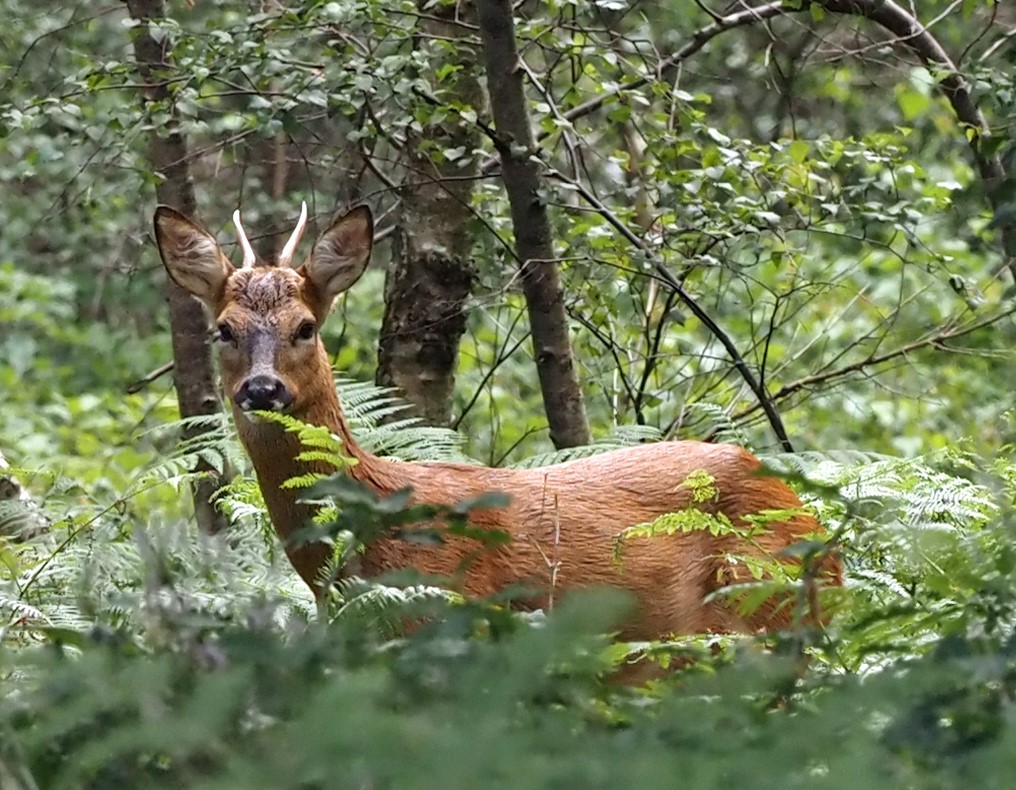
October in the Forest
Most of the deer seen in the Wyre Forest are Fallow Deer. They are a familiar
sight in the quieter parts of the forest and at this time of the year the bucks will
have moved to their rutting grounds where they will contest their right to mate
with a harem of females.
As well as the Fallow Deer there are a growing number of both the exotic
Muntjac and the Roe Deer. Even in 2015 Roe were rarely seen in the forest
(according to ‘The Nature of Wyre’ by the Wyre Forest Study Group) and it
may come as a surprise to hear that they are native to the British Isles, alongside
Red Deer. During 2020’s lockdown we frequently saw one lone individual on
our walks in the Coldharbour Coppice area of the forest and sightings are
gradually becoming more frequent. The buck in Mick Farmer’s photo was seen
in Withybed Wood near Buttonoak and I believe they are often in that area. It is
very probable that they are now breeding in Wyre rather than wandering in from
nearby populations. The 2023 spring census reported sightings of 26 Roe Deer.
However, for the first time a drone survey, using thermal imaging, was also
carried out and it located 48 Roe, fairly well scattered in groups of up to 4
individuals throughout the forest.
As you can see from the photo, the Roe have a chestnut coat without spots, a big
black nose and a white chin. Smaller than the Fallow and larger (and more
elegant) than the Muntjac, the bucks have short antlers which are much less
extravagantly-branched then those of the Fallow, having up to 3 points. At this
time of year they may have shed their antlers, having already mated earlier than
the Fallow in July and August. The mated does then delay the implantation of
the fertilised eggs and give birth, often to twins or even triplets, in May or June.
The kids are spotted with white and must make a very pretty sight.
Deer in general are masters of detection and it is very rare to see them before
they see you. Consequently the pale, buff-coloured rump of the Roe may be
almost all you see of it as it bounds away from you!
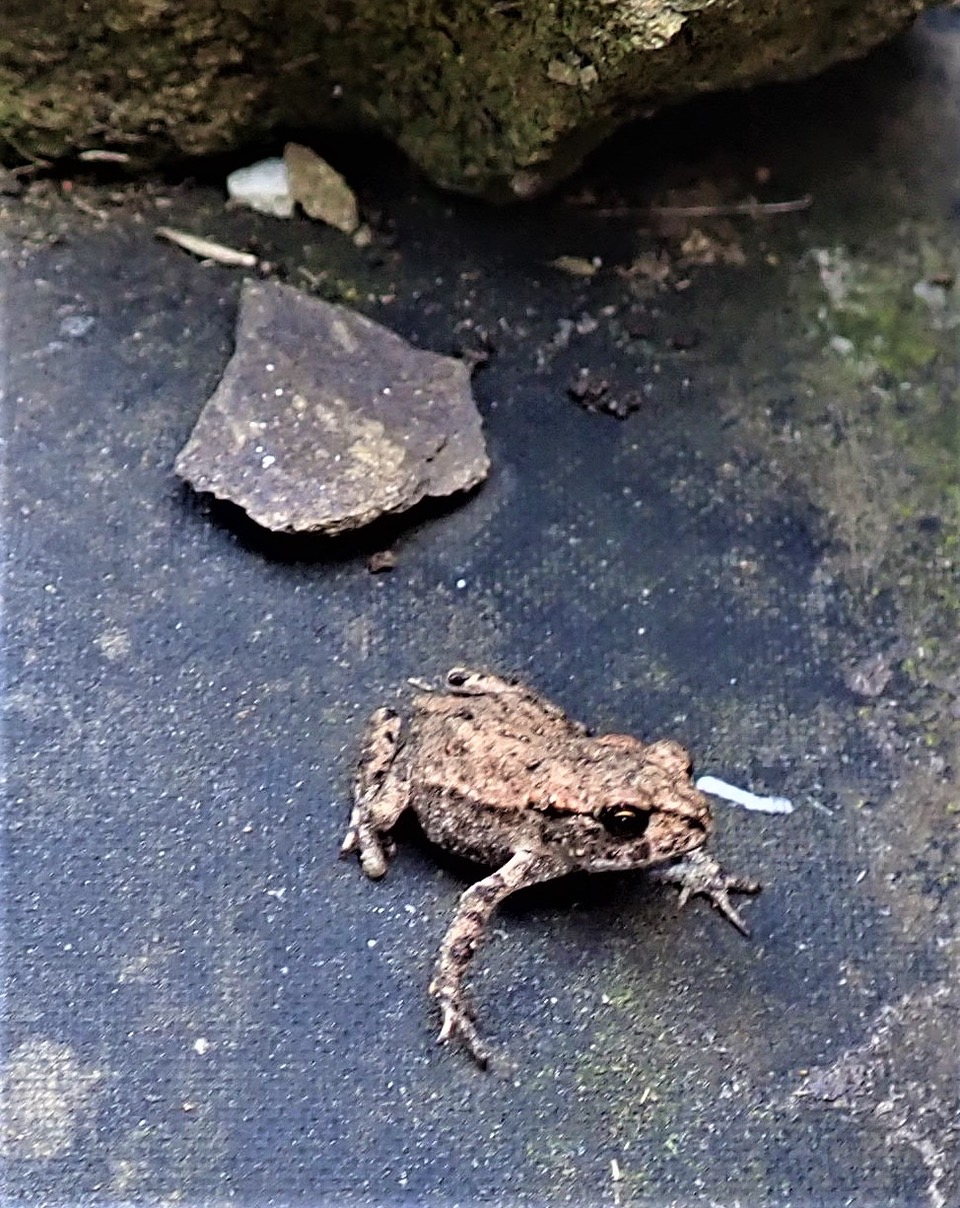
September in the Forest
The Wyre Forest is full of streams and pools. Even though many of the larger pools
are manmade they all provide habitats for freshwater creatures. Some of the most
fascinating are the amphibians: the frogs, toads and newts that need water bodies to
complete their life cycles.
One of the earliest and most exciting signs of spring is the appearance of frogspawn,
usually in February but delayed until March in cold conditions. The frogs are followed
by the toads spawning in April, their strings of eggs wrapped around plants on the
pond edges. The tadpoles of both species tend to disappear after hatching, their
dark brown colour camouflaging them from predators as they nibble algae around
the pond margins. By early summer though, warm days bring the developing toad
tadpoles to the surface in great black drifts and when they have all their little legs
and can use their new lungs to gulp in air they are ready to leave the water. This
spectacular exodus happened in late June this year: a day when it was impossible to
walk on paths near the reservoir without sending great numbers of tiny toads
scuttling for their lives.
Our farm pond missed its usual newt survey this year but usually my friend Val (who
is licensed to handle newts!) sets the box trap on our pond in May and we do the
count the next day. We photograph the belly markings on the Great Crested Newts
to identify individuals, just in case anyone has the time to collate the pictures from
different years to see how long the newts live and how far they venture. Other
researchers have found that they live an average of 7 or 8 years and can easily
travel between ponds (see ‘The Nature of Wyre’ by the Wyre Forest Study Group). I
did my own surveying in May using a torch at night and saw at least 4 Great Crested
Newts and many Palmate and Smooth Newts snoozing in the shallows of the pond.
We have also seen several spindly Palmate tadpoles during pond-dipping sessions.
To bring us up to date, the young of all these species will now be roaming the forest
– the adults too. I have to be very careful moving piles of weeds or soil in the garden
as I usually come across tiny toads such as the one in the photo – a perfect little
replica of its parents but only about 17mm long. This is the time of year to do some
pond maintenance and I shall be scooping out some of the pond weeds which have
grown prodigiously. I’ll leave them a while on the pond edges though so that little
critters can find their way back to safety in the water.
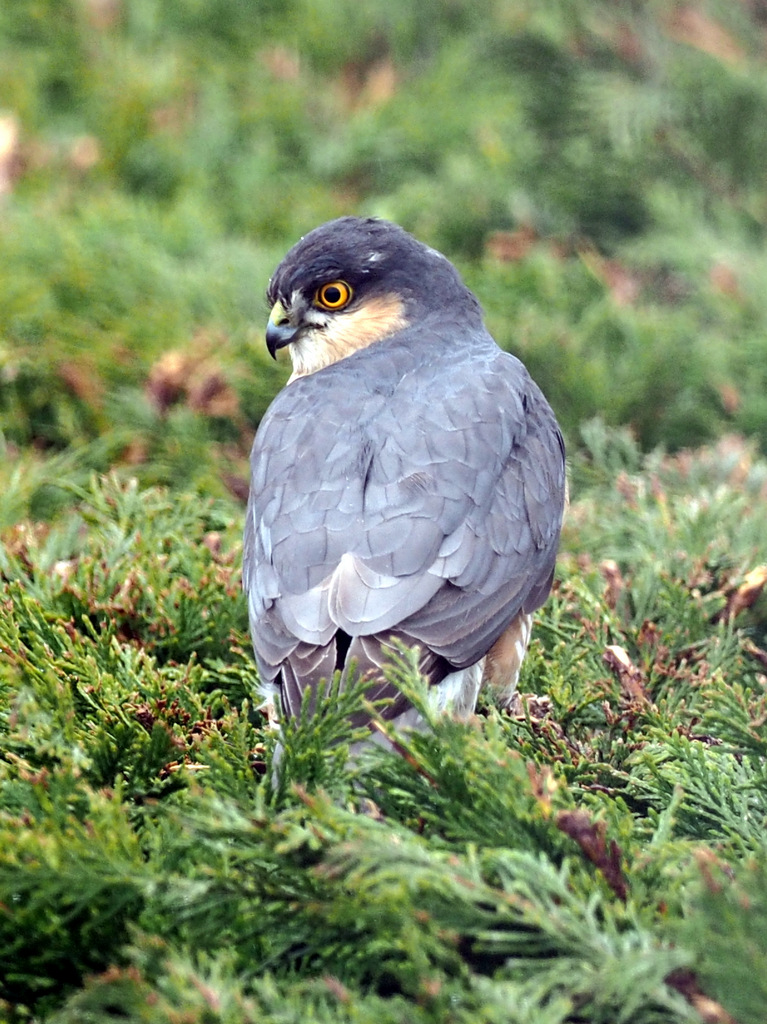
August in the Forest
It’s been a good year for bilberries. Not enough to make a pie, though: I’ve only had that happen once, and those bilberries were from Derbyshire. The plants like acid soils and cope with a shady woodland setting, but only fruit well with enough sunshine. I look forward to the blackberry harvest but that won’t be until September, when I can enjoy some of the crop destined to be consumed by insects, birds and mammals.
At the moment the forest is still looking lush, with enough rain to keep leaves green and encourage flowering. The insects should be having a happier time of it than during last year’s drought and I hope some will be able to recover after a very cold and difficult spring. Consequently there should be a good number of baby birds too, and that will be good news for a number of predators.
One such is the Sparrowhawk. It is the commonest bird of prey in the forest and could possibly be confused with the larger Goshawk, which is also sometimes seen hereabouts, since both birds have striped grey and white plumage on the breast and underparts. The female is considerably larger than the male, which has a more reddish-brown colour to the underparts. Their presence is a happy indication of the recovery of their numbers after the use of organochlorine insecticides such as DDT caused the population to crash in the 1960s and 70s. The discovery that DDT caused fragile egg shells and the death of embryos led to it being banned in 1972 in the USA and in most other countries during subsequent decades.
The Sparrowhawk feeds entirely on birds smaller than itself, which means that the male catches sparrows, finches and tits while the female can go for something larger such as a thrush (or a Greater Spotted Woodpecker as Norman Hickin noted in ‘The Natural History of an English Forest’). They are superb hunters, materialising ‘out of nowhere’ to grab their prey along woodland rides or hedges, or indeed from garden feeders. Like other raptors they pluck their bird prey, leaving a pile of whole feathers under their perch.
The nests are built high in conifers or among growths of ivy on deciduous trees, using twigs of birch and larch, with downy feathers added as the eggs (up to 6 of them) are laid. While the female sits the male feeds her (and, I hope, receives no complaints about the size of the portions!).
Thank you to Mick Farmer for the Sparrowhawk photo.
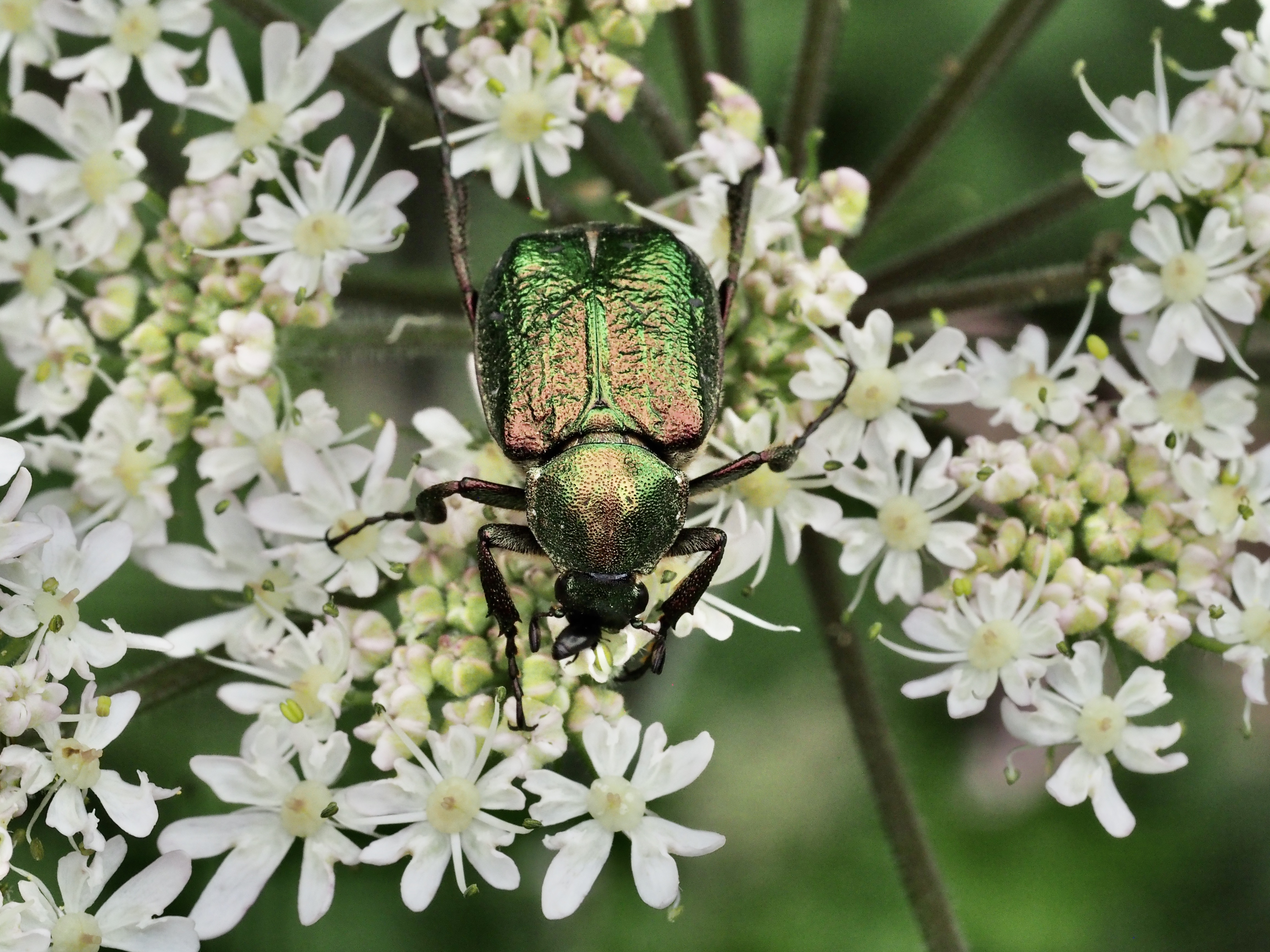
July in the Forest
I’m taking liberties with the title this month, since it’s not about the forest itself but one of the other landscapes that interweave with the woodland to make up the character of the Wyre Forest as a whole.
Orchards used to be planted beside almost every farm and in every garden where there was enough room: people were much more self-sufficient in their food in those days. The Wyre Forest and Teme Valley became famous for cherry production when the Tenbury and Bewdley Railway branch line made it possible for perishable crops of fruit to be taken into Birmingham quickly, that is from 1864 until the line was closed in 1962. The old methods of tending standard trees, scaring off scavenging pigeons and thrushes and hand-picking using ladders became uneconomic thereafter and the majority of orchards were grubbed up (with government grants!) during the 1960s and the remainder of the twentieth century. The names of the cherry varieties grown at Hales Park Farm are remembered in the street names of the housing estate built in its place: Waterloo, Elton, White Heart, Ironsides and (misspelt) Governor Wood. Thus it was that traditional cherry orchards became a rarity which was only recognised as precious this century, thanks in part to research by members of the Wyre Forest Study Group into the wildlife living in the orchard at Bowcastle Farm, Bewdley, in 2004. That study found an astonishing 224 species of invertebrates and fungi dependant on the decaying wood of old fruit trees, the most imposing (and perhaps rarest) of them being the Noble Chafer. The photo by Rosemary Winnall shows one of these big, metallic green beetles feeding on an umbellifer – a rare sighting as the adult is short-lived, hatching in mid-summer from the grubs that spend two or three years eating the rotten wood of old apples, plums and cherries. I have never seen one and have to be content with the tell-tale droppings or ‘frass’ left by the grubs in tree cavities. On the other hand I do have frequent sightings of Redstarts - the cheery little birds that live and breed in our orchards in the summer - and can sometimes hear or catch sight of the Lesser Spotted Woodpecker, another rarity that manages to hold on in the Wyre orchards and oak woods.
The annual Bewdley Cherry Fair will be on 22nd and 23rd July this year. Bewdley Civic Society and Bewdley Museum will be organising various events including a guided walk to some of the remaining cherry orchards.
June’s article mentioned butterflies and the work of the Butterfly Conservation charity to monitor them. There are two opportunities coming up for everyone to contribute to research into butterfly distribution and numbers: the Big Butterfly Count invites you to spend 15 minutes in any location between 14th July and 6th August recording what you see and the Garden Butterfly Survey is a recording project for gardens, community spaces and allotments which can be continued throughout the year.
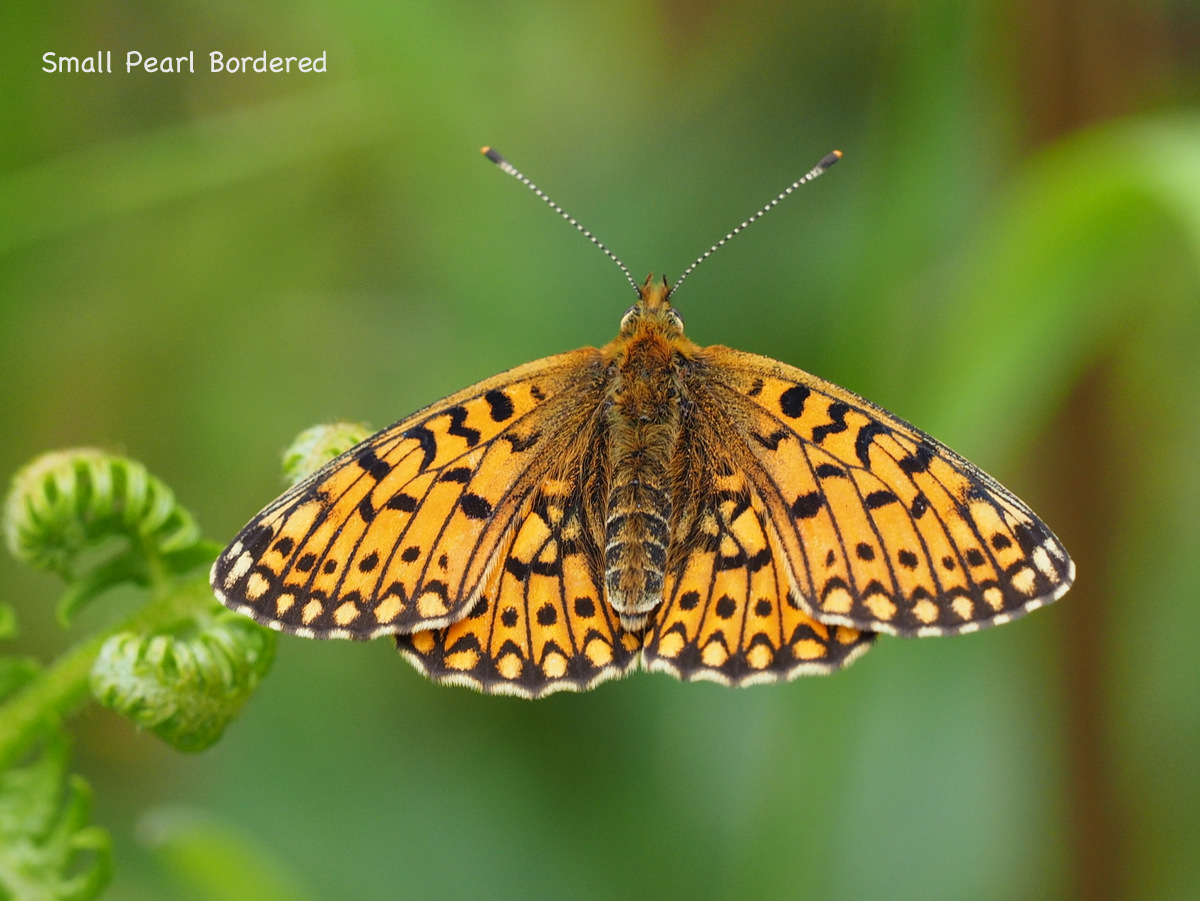
June in the Forest
Last month my neighbour told me she had heard a cuckoo so I hope that by the time you read this there will be several pairs up to their naughty tricks in this part of the forest.
Butterflies are not seen in droves any more, but we can celebrate every one which we do see. Even in a forest National Nature Reserve which has been managed deliberately to provide good habitat for ‘woodland specialist’ butterflies for over a decade they seem to be hanging on precariously. This month I hope to be able to watch a few Small Pearl-bordered Fritillaries, as well as their larger relatives who generally appear on the wing in May. The charity Butterfly Conservation recruits and trains volunteers to count the species they see on regular woodland walks so that there is a record of how well, or badly, each is faring. To quote the BC West Midlands’ group magazine, ‘The purpose of recording butterfly numbers…is to monitor population trends and to feed that information back into habitat management. There’s little point in doing surveys unless the results are used to improve habitats and, conversely, there’s little point in managing habitats unless the effects of the work are measured.’
At the farm we recently hosted a group of naturalists from Sandwell. They spent the day exploring the orchards and meadows but not venturing very far, focused as they were on the minutiae of the mosses in the farmyard, the invertebrates on the apple blossom and dead wood, the tiny fungi among the grasses and the remains of the cattle’s hay. But they didn’t fail to notice the splendour of the day or the joyful singing of the Garden Warbler as they sat to eat their sandwiches in the garden. Thank goodness we are a nation of amateur naturalists and conservation volunteers: people who can record what they see and help to care for it. This month we are hosting a ‘Pollinators Day’ at the farm to learn more about the fascinating creatures which perform such a vital role in the lifecycles of flowers, trees and crops and find out how our gardens can encourage them. I will also be going to a training day at Lower Smite Farm, the headquarters of Worcestershire Wildlife Trust, so that I can identify and record bumblebees in my area. Here are some contacts for any of you who want to find out more about volunteering:
West Midlands Butterfly Conservation: Mike Williams, wmbutterflies@gmail.com also www.gardenbutterflysurvey.org
Worcestershire Wildlife Trust: worcswildlifetrust.co.uk/get-involved
Worcestershire County Council: www.worcestershire.gov.uk/countryside-and-leisure/volunteering-countryside
Wyre Community Land Trust: www.wyreclt.org.uk/join-our-volunteers
Thanks to Mick Farmer for the photo of the Small Pearl-bordered Fritillary
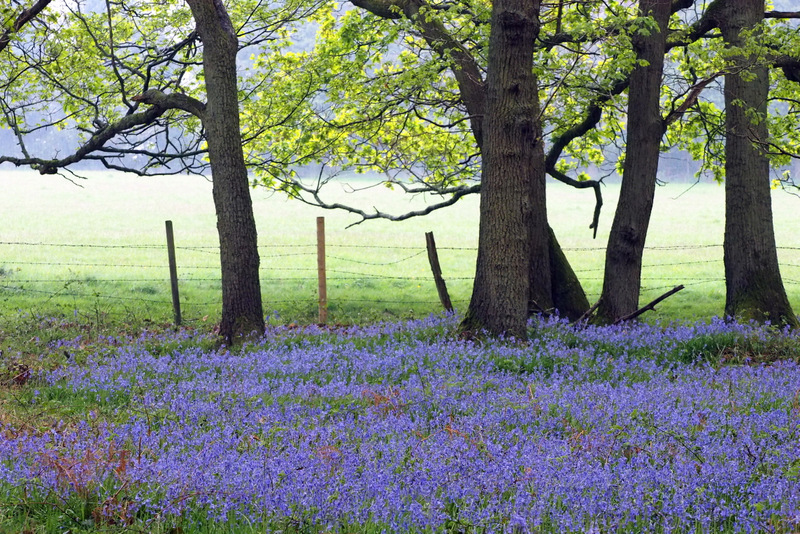
May in the Forest
May is Bluebell time and perhaps you have a favourite place to enjoy this feast of scent and colour? Shrawley Wood ( south of Stourport on the B4196) is locally famous for its spectacular Bluebell display but smaller patches of the flower can also be seen in many parts of the Wyre if they haven’t been swamped by Brambles and Bracken or shaded out by trees. Damp valleys will also have swathes of Wild Garlic (or Ramsons) announcing their presence by their strong scent, echoed by the tall stems of Garlic Mustard which are sought out by Orange Tip butterflies for egg-laying. There should be plenty to see with other butterflies such as Holly Blue, Large White, Green-veined White and Pearl-bordered Fritillary all flying and the Painted Lady arriving from warmer climes later in the month. So too with the migrating birds such as Spotted Flycatchers and Pied Flycatchers.
In the past you would have been able to welcome the return of the Turtle Dove and hear its distinctive gentle, purring call but, like the Nightjar and so many other birds which used to animate the summer forest, this visitor has declined to near-extinction levels. It is quite a small bird: about half the size of a Wood Pigeon. It feeds on seeds, especially chickweed, oilseed rape and cereals and frequents hedges, woodland edges, scrub and areas of conifers managed to maintain an open and varied structure. These habitats have largely disappeared from the wider landscape: this, plus the over-use of pesticides and artificial fertilisers, drainage and pollution of watercourses, is the legacy of the last 8 decades of ‘agricultural progress’ which have deprived so many species of their living.
Fortunately we understand their ecology better now and, where there is sufficient will, the tables can be turned. In ‘Wilding’, Isabella Tree (her real name, I assume) documents the return of many wild species to the Knepp estate in West Sussex and for them the Turtle Dove became a symbol of the recovery of the land. When conventional (and unprofitable) farming ceased in 2002 there were no Turtle Doves but by 2017 there were 17 male territories and hopefully as many breeding pairs. ‘Re-wilding’ is in part letting things go, but recognises the need for large grazing animals to counter the unrestricted growth of vegetation and, in the absence of their predators, for human intervention to keep a check on their numbers. This approach is on-going and experimental but I’m sure it has many lessons for the management of the forest and other land used for food production, recreation and conservation in our crowded island.
Thanks to Mick Farmer for his photo of the Bluebells in Symond’s Stool.

April in the Forest
This month the forest’s birds will be getting into some serious reproduction. All felling operations and hedge trimming should finish by 15th March so that birds don’t come to harm during the nesting season. Weather conditions haven’t been very kind to them in the early spring so it’s to be hoped that there’ll be some warmth and gentle rain this month to encourage growth and food availability.
The Wren is a bird I have a great fondness for. More often than not I see at least one when I walk in the woods darting amongst the brambles, although they live happily in gardens, farmland and heaths as well. They are tiny and secretive and I was surprised when I found out that they are the UK’s commonest breeding bird. The give themselves away by their surprisingly loud song (go on www.rspb.org.uk to hear it) and the distinctive cocked-up tail when you catch sight of it perching. Last month we watched a little group by the house gathering at dusk to roost in a bird box but by now they will be nest building in earnest. Once he has established his territory (using that loud song) the male Wren attracts a mate by building several ball-like ‘show nests’ of twigs and moss, and when a female moves into one they will line the nest and mate. We have found quite a few show nests in our wood piles! I wish them every success – their numbers will have dropped during the cold weather, especially as they have to forage continually to find enough insects and spiders to energise their tiny little bodies.
Meanwhile we’ll hope to see our summer visitors arriving during the month. Swallows, Cuckoos, Redstarts, Wood Warblers, Willow Warblers, Pied Flycatchers and Tree Pipits need good luck to survive the weather and other hazards of the journey from the south, and also need their arrival to coincide with an abundance of caterpillars and other food for their young.
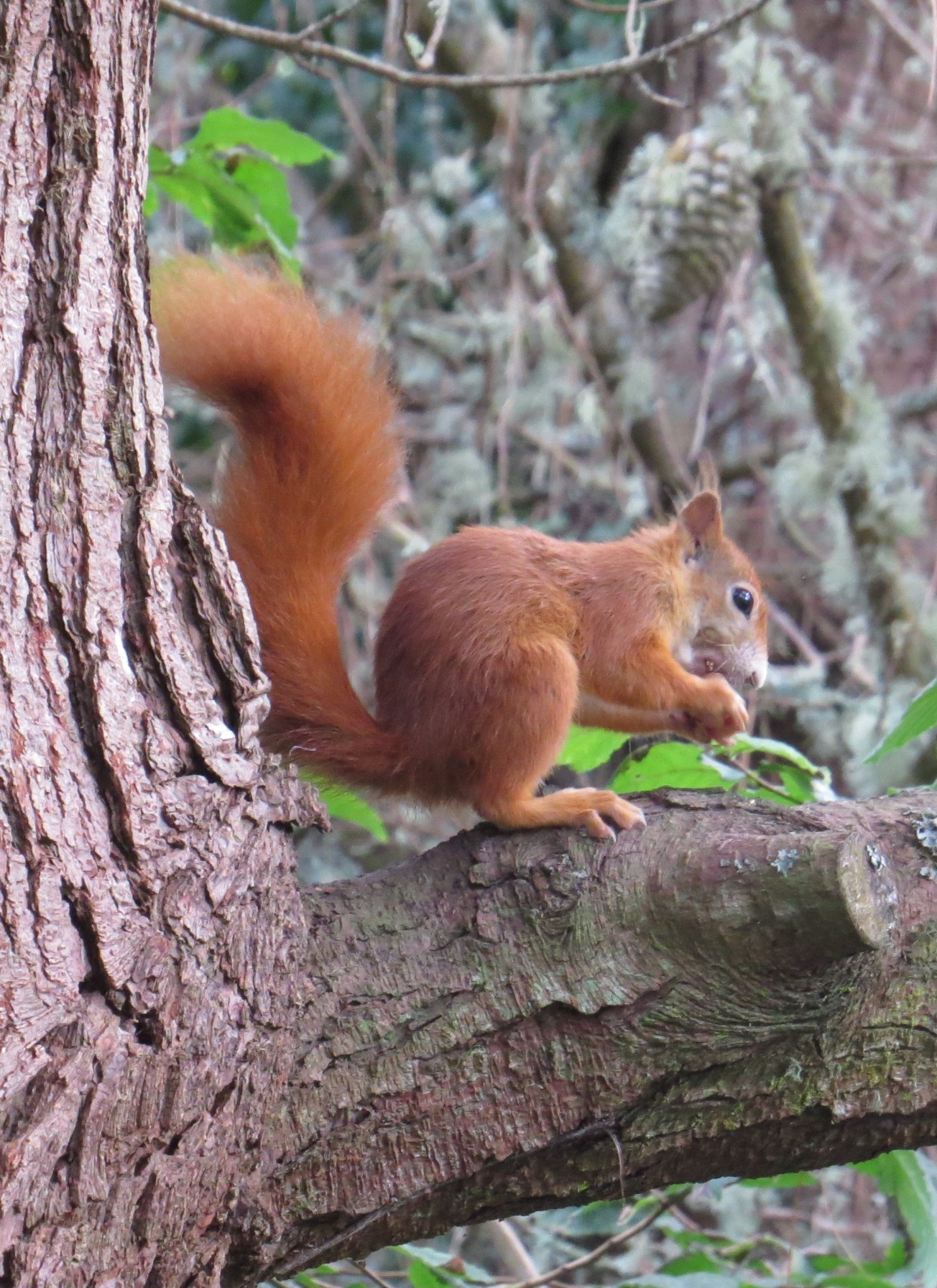
March in the Forest
As I got to know the forest years ago I learnt to see squirrels’ dreys: nests of twigs and leaves high enough in the trees to be out of reach of marauders like me. More recently I’ve learnt to recognise the damage that Grey Squirrels do to trees, especially our Wyre Forest oaks. If you look towards the tops of young trees you can often see that they have been stripped of bark, sometimes so thoroughly that the top has died off. This means that the tree will never produce good timber. Taking this idea further, you realise that the older, well-formed trees around you put on most of their growth before the Grey Squirrels spread across the UK following their introduction from North America in the late1800s.
The native Red Squirrels are slightly smaller and more lightly-built than the Greys. The newcomers compete with them for food: even taking Hazel nuts before they ripen. They breed successfully, often with 2 litters of kits a year, and carry the ‘squirrel pox’ disease which is deadly to the Reds. After nearly 150 years the Reds have retreated to the remoter areas – Cumbria, The Highlands of Scotland, mid-Wales, Anglesey, the Isle of Wight and some other islands such as Brownsea in Poole Harbour.
An interesting response to this situation is to re-introduce Pine Martens. In Ireland where Pine Marten populations are high, they appear to have reduced numbers of Grey Squirrels allowing Red Squirrels to increase. It is thought that they harass the Greys to the extent that their breeding is disrupted. However, over most of the nation woodland owners opt either to do nothing, or trap and shoot the Grey Squirrels but nothing so far seems effective in stopping the relentless domination of the American super race. If nothing is done our native squirrel may become extinct in these islands within 10 years.
Now, however, there is hope in the form of fertility control. On a recent visit to the Wyre Forest Rebecca Isted of the Forestry Commission, who is working on a draft ‘Grey Squirrel Action Plan’, indicated that a chemical contraceptive could soon be cleared for use by landowners. It would be administered through a bait of hazelnut spread in boxes which other species cannot access. (A sad waste of Nutella, if you ask me!)
Thanks to Rosemary Winnal who has allowed me to use her photo of a Red Squirrel, obviously not in the Wyre Forest!
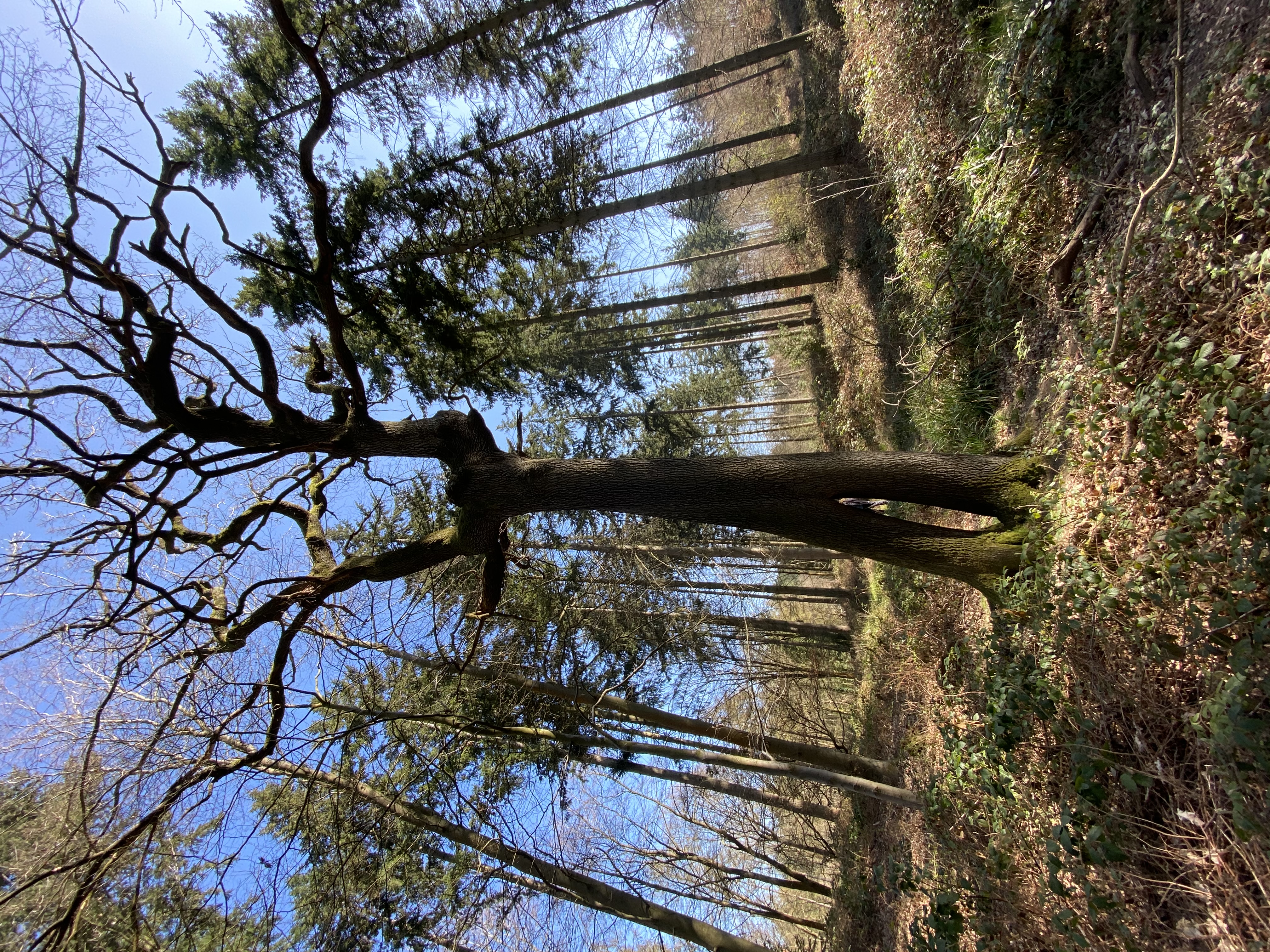
February in the Forest
When I worked at the Wyre Forest Discovery Centre as an environmental educator we had an engaging activity called ‘Meet a tree’. Children or adults would work in pairs: one blindfolded, one leading the way to a tree of their choice which the other had to get to know using their sense of touch. (We took pains to teach safe ways of working although these were sometimes forgotten in the excitement of the moment. Payback time for any shortcomings in the leader’s carefulness or safety awareness came when the roles were reversed!). On being taken back to the start the blindfold was removed and the now sighted participant tried to locate ‘their’ tree. There were many learning points: how vulnerable we feel when we can’t see, the usefulness of our neglected other senses, the tendency of slugs to sit on tree trunks in damp weather, or the unreliability of our best friend! What impressed me most was the individuality of trees – not so much in a plantation but very evident in a woodland of mixed species and ages.
It is in my nature to care about individual trees. I know that forest management demands a more general approach and that trees need to be removed during thinning to help the growth of those remaining and bring light into the woodland environment. Sometimes trees have to be felled for safety reasons or because they have grown in the ‘wrong’ place. These decisions depend on a value judgement but trees are very often treated as an expendable inconvenience. (I’m not talking about the growth of timber here, i.e. the harvesting of a renewable resource in a sustainable way.)
To me, each tree felling is a sadness, whatever the reason. These organisms photosynthesise, using the sun’s energy to build complex sugars out of water and carbon dioxide and releasing oxygen back into the air. They form relationships with fungi in the soil and are eventually returned to the soil by fungi when they die. Their shape encourages rain water to penetrate into the soil rather than adding to surface flood water. They shelter us from hot sun, strong winds, noise and pollution. They provide homes and food for a huge variety of wildlife. And of course they are beautiful.
Some of us will have favourite trees: they may be ancient, or have childhood associations (or both!), they may have unusual shapes or characteristics, or significance as landmarks. I’ll leave you with this photo of a tree which my ex-colleague Mandy Jones encountered in Eymore Wood. Unlike Tolkien’s Ents, described in ‘The Two Towers’, this one stays still, but you can imagine the great strides it would make as it toured the woods, shepherding its flock of young and old trees that define, nourish and shelter all the wildlife of the woodland ecosystem.
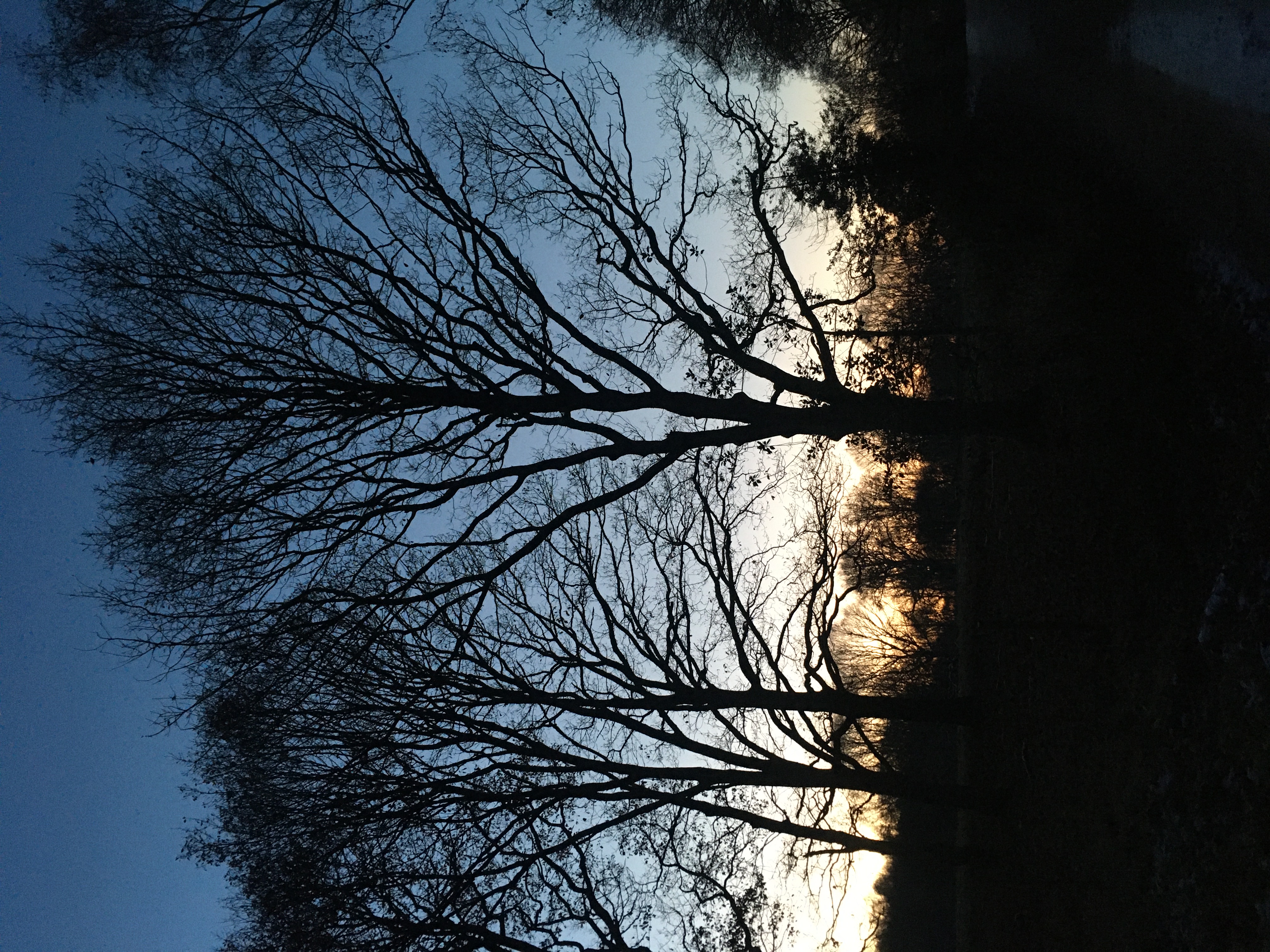
January in the Forest
This is a hard month for all of us, including the forest’s wildlife. Days are very slow to lengthen after the winter solstice: in fact dawn keeps on getting later until the end of December even though the day length is gradually increasing. On January 1st we will be treated to 7.49 hours of daylight! Temperatures can fluctuate greatly, and although the monthly average is 6 degrees, cold snaps will often mean that it is hard for creatures to find enough food to keep up with their energy requirements and water will be locked up as ice. Farmers will be struggling to keep water troughs clear of ice for their stock. Just writing this is making me feel very grateful that I have the shelter of a dry house and at a time in history when it is possible to keep it warm!
Last month I wrote about animals that hibernate but there are various ways in which others can increase their chances of survival. House martins, swifts, swallows, cuckoos, warblers, flycatchers and some other insect-eaters can fly to warmer lands where enough prey are still available. (Other birds needing a different diet arrive here from colder places for the same reason but look for their food along estuaries, beaches or lakes.) Treecreepers, goldcrests and wrens will continue to forage for insects in bark, tree crevices and leaf litter, but blue tits switch their diet to seeds and nuts to get through the winter. Rabbits and deer feed on bark and roots when leaves are scarce. Of course, some of our wildlife has evolved the strategy of hoarding food for later use: squirrels, mice, voles and jays will have stores of nuts or acorns which they may or may not be able to find when needed! All kinds of creatures need to lay down extra fat during the plentiful days of autumn: nuts, seeds and berries all provide a rich source.
Fur and feathers grow thicker and fluffier to provide a warm winter coat, and a hole in the ground or a tree can be made cosier by adding bedding of dry grass, bracken or moss. Nest boxes change their purpose and become roosts for winter nights. Badgers prepare their setts in late autumn by removing the old bedding and taking down new supplies, sometimes helping themselves to straw if they live near enough to a barn. We aren’t the only ones to feel the need to snuggle up when it’s cold outside!
2022
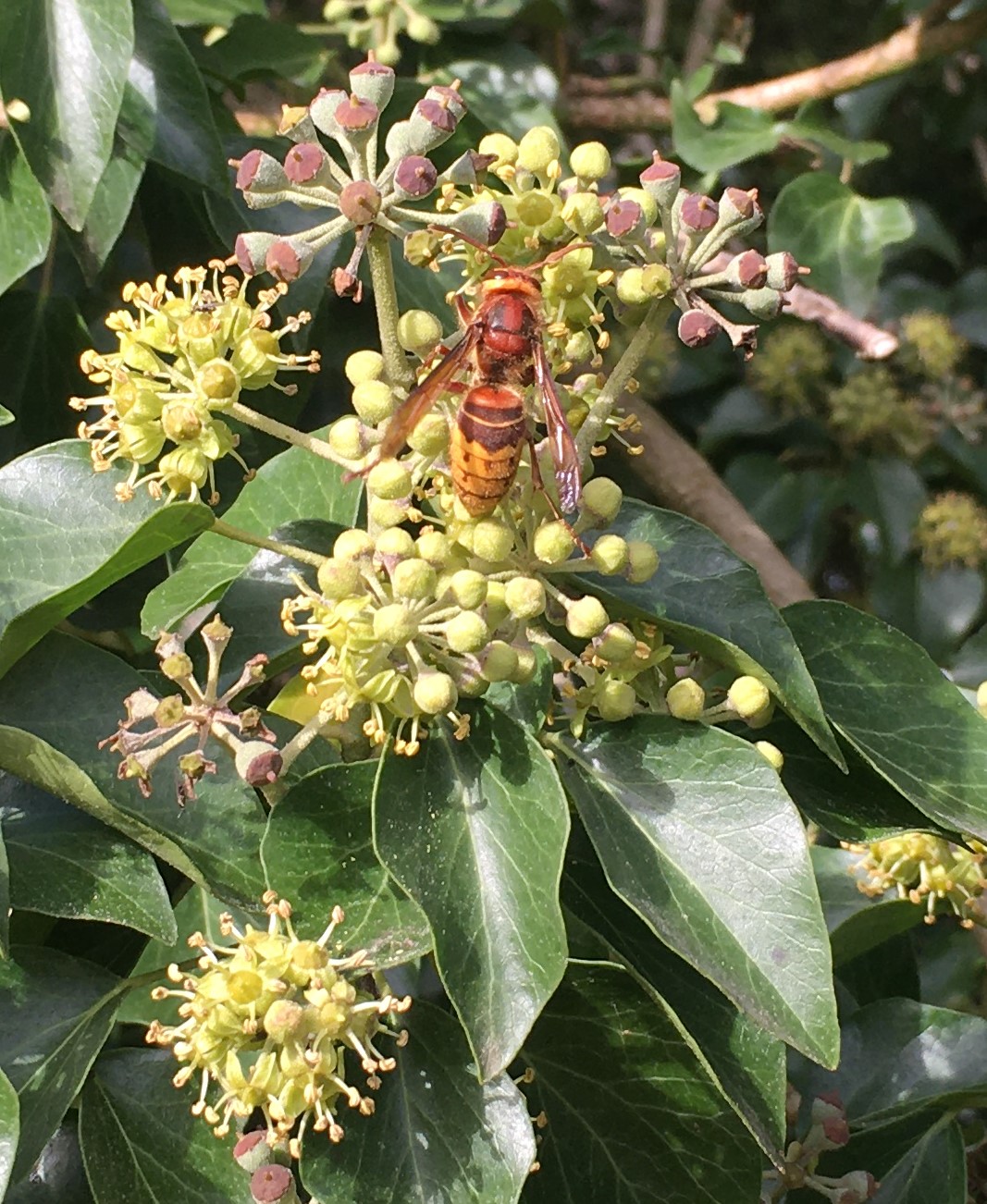
December in the Forest
The continuation of warm weather into autumn has kept flowers flowering and insects buzzing for much longer than normal. This is good news for the birds that stay, or arrive, for the winter although those looking for berries saw them disappear at the usual rate. Ivy is a wonderful source of nectar and pollen during the autumn and early winter, as the Hornet in the photo has discovered. After the flowers the berries provide a feast for Wood Pigeons, Thrushes, Blackbirds and Blackcaps, so it is a very valuable plant for wildlife.
When the frosts come they accelerate the leaf drop from trees and finish off the tender plants, but do they signal the beginning of hibernation? The temperature is certainly a factor in a complicated set of triggers which include day length and food availability. In the UK quite a number of creatures enter a state of hibernation. Cold-blooded creatures including bees, ants, ladybirds, some butterflies (such as the Peacock), frogs, newts, toads and snakes just cannot function in low temperatures anyway but in mammals it is a behavioural and physiological adaptation to survive periods with little food. The metabolic rate drops to less than 5% of normal and, for Hedgehogs, Dormice and bats, the winter is spent in a state similar to a deep sleep. Squirrels, which make winter dreys out of close-knit leafy twigs up in the forks of tree trunks, sleep huddled together there for warmth but wake in milder periods for the purpose of toileting and seeking out a snack from their stores. The same is true of Hedgehogs to a lesser extent, and for them it is riskier as they don’t have stores of food and they may expend more energy than they can make up.
We can help hibernating creatures by providing shelter, whether it be bug hotels, heaps of leaves or piles of woody prunings, and making sure we don’t disturb these during the winter.
I hope you’ll be enjoying the season and, like our wildlife, have plenty of shelter, company and food this Christmas!
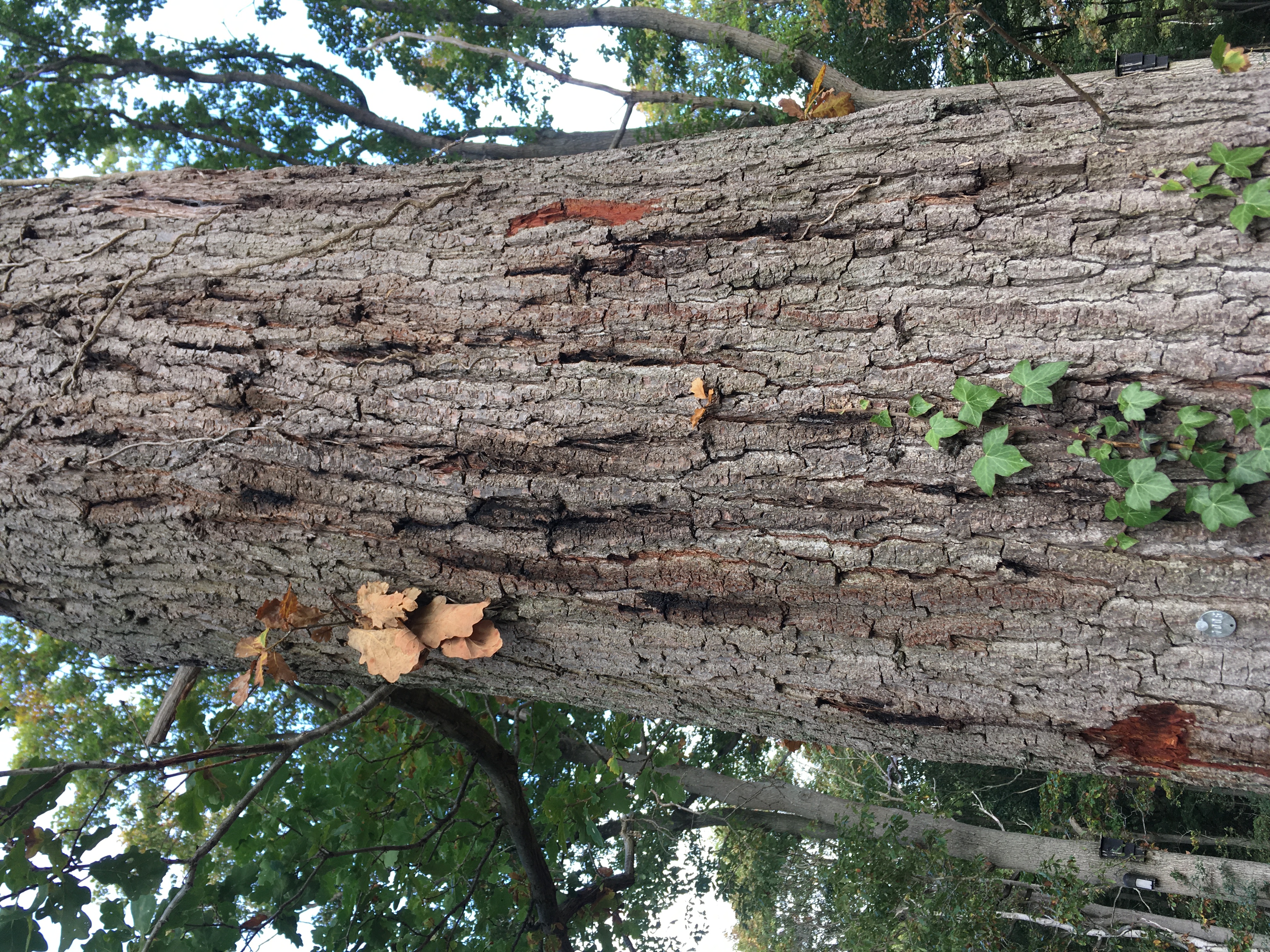
November in the Forest
This year’s acorns are already beginning to sprout. They only need a modest amount of moisture and
some thin forest soil to grow, but many are crushed on the forest tracks or shrivel on rocky outcrops
(‘some fell on stony ground’). Others are taken by Grey Squirrels and eaten at once or buried for
later consumption with their tips nibbled out to prevent germination. The loud Jays are busy burying
too, unwittingly acting as woodland planters in return for a small percentage of acorns retrieved.
The baby oaks will come up thick and fast under those trees which have produced a good crop of
seed but will have to escape the attentions of other hungry nibblers in order to reach maturity. The
Fallow Deer browse seedlings and any branches within reach, and Rabbits may strip off bark in the
hungry months of winter. Not so obvious are the hordes of insects such as moth and fly caterpillars,
weevils, leaf miners and gall wasps which shred and tunnel their way through the foliage but don’t
usually cause a tree to die. Oaks are slow-growing compared to conifers and there is a useful rule of
thumb which says that they put on an inch of girth (measured at breast height) on average for every
year of their lives.
This brings me to my main subject, which is ‘Why are so many oaks in the forest dying?’ You may
have noticed leaves yellowing, branches dying back and whole trees dying in the space of a few
years. Chronic Oak Decline (COD) has probably been around for a century and, like Acute Oak
Decline (AOD), may result in the death of a tree due to a combination of factors. Some trees die four
to six years after the onset of symptoms while others seem to be checked for a few years but then
continue to grow. The acute form (AOD) was first observed about 30 years ago but has been
spreading rapidly in recent years, affecting our native pedunculate and sessile oaks and their hybrids
(which account for most of the Wyre oaks).
As the photo shows, the trunks of affected trees can often show lesions oozing black, resinous liquid.
There are at least 3 species of bacteria present in the fluid and involvement of some sort by the
native Oak jewel beetle, Agrilus biguttatus , whose larvae tunnel galleries under the bark of affected
trees and leave characteristic D-shaped holes in the bark when they exit as adults. Heat, drought,
fungal growth and damage to trunks and roots by woodland operations may all play a part.
What can be done about it? Nobody knows yet, but Sandra Denman of Forest Research (part of the
Forestry Commission) and several academic bodies are working on it and we all hope that our oak
woodland will be safe for generations to come.
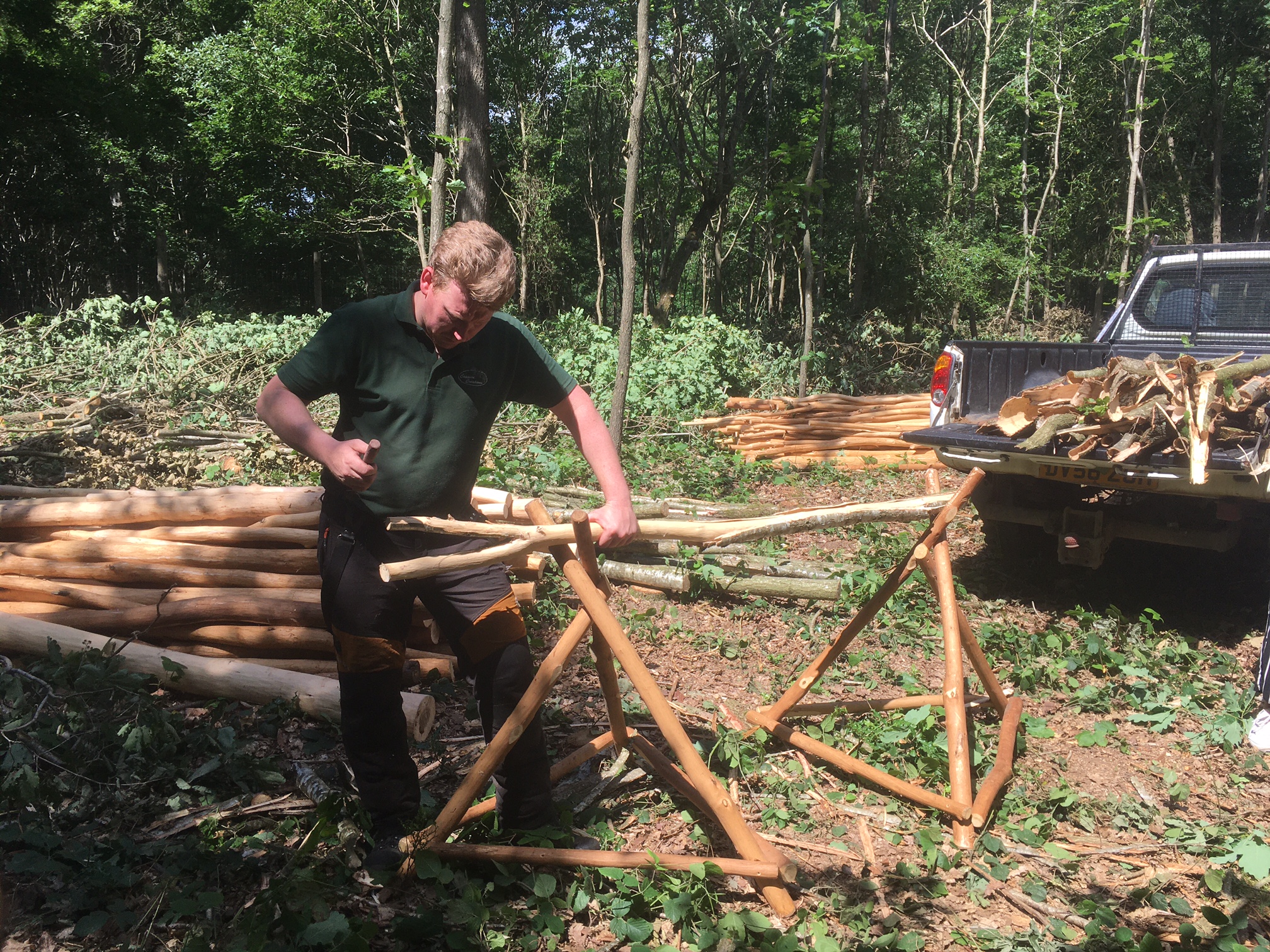
October in the Forest
The Wyre Forest hasn’t always been the peaceful place it is now, with large areas set aside for recreation and wildlife. It was, and still is to a large extent, a resource, providing timber for many different purposes. The ‘waste’ products of this industry weren’t actually wasted if they could be of use: small branches and offcuts were always valued as fuel, birch twigs were bound into besom brooms or stripped and made into whisks.
Medium-sized coppice wood had its own industry, providing the raw material for charcoal production. The oak bark could be removed to supply Bewdley’s riverside tanneries with tannin for processing hides. Bewdley Museum has several photos dating from the 19 th Century of workers (often women) using spoon-shaped metal bark peelers and setting the rounds of bark to dry on racks until they could be transported down Tanners Hill and Bark Hill into the town (search for ‘bark peeling’ on www.revolutionaryplayers.org.uk to see the photos).
While searching the internet you can find ‘Albert Link and bark peeling in the Wyre Forest’ by Rosemary Winnall of the Wyre Forest Study Group. Albert kept the industry going for many years, sending bark down to J and FJ Baker’s tannery at Colyton in Devon for the production of top quality leather. (Bewdley’s last tannery closed in 1928 and Baker’s was the only remaining tannery in the country which still used oak bark, although another may be opening near Bristol). This spring the activity was revived by Paul Jackson of Coppice Creations, working in Ruskin Land. The bark will only come off easily when the sap is rising in the oak trees. A length of oak is supported on trestles and a narrow strip is taken off all the way down using a draw knife . The bark is then cut around the circumference of the limb at intervals of about half a metre and then the peeler is inserted under the bark, sliding it around to loosen it from the sapwood. It can come off surprisingly easily, and you can see and feel the wet of the phloem / xylem system which transports water up to the growing leaves. The photo shows Paul’s son Daniel at work.
Bark peeling is part of a virtuous circle of sustainable production. The stripped boughs are used by Paul to make garden furniture and the oak stumps (technically called ‘coppice stools’) almost immediately start to regrow. The plot will support many kinds of wildlife now it’s been opened up to the sunlight, and a tannery that has been making top-quality leather since 1862 using methods centuries old will be able to thrive.
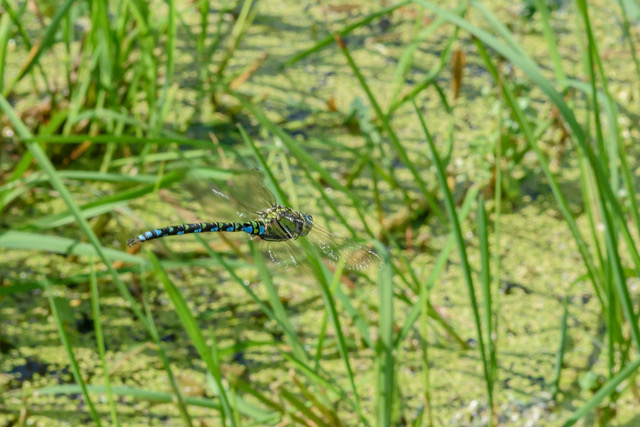
September in the Forest
The pools and streams of the forest are its lifelines. During this summer’s droughts the water in them has dwindled to shockingly low levels and the water table has dropped so far that there has not been enough moisture in the soil to support all of the plant life which depends on it. Some of the little trees planted in recent winters have succumbed and even well-established trees have lost branches or even fallen entirely. Everywhere you can see premature signs of autumn: leaves changing colour and dropping. It has been noticeable too that some plants have stopped flowering early to conserve moisture and that many forest rides have recently been empty of the butterflies which should have been feeding on bramble flowers.
Fortunately the farm pond has hung on, though with a much-reduced level and some very green water! The water boatmen were as numerous and active as ever, hunting their prey from under the air-water interface and hanging upside down to breathe air through their abdomens.
Dragonflies have been frequent visitors. There are two species that visit to hunt smaller flying prey and court their mates. The earliest to appear in the summer is the Broad-bodied libellula: the male with a broad blue abdomen, the female brown. The larger and faster Southern Hawker dragonfly is often a slightly later arrival but one which one can’t fail to notice. The male has a beautiful green and blue body, as you can see in the photo, and will charge up and down the pond with wings going full tilt. If another male or another species is around there will be an aerial altercation. The female’s arrival will bring the male immediately to join her in flight. During mating (usually on a handy lily leaf) the male grasps the female with his tail just behind her head, and they will often fly off joined in that way while the female dips her tail in the water to lay her eggs on water plants.
The season could bring a good crop of mushrooms and toadstools. I say this because a period of heavy rain after dry weather usually stimulates the growth of the variously-shaped and coloured fruiting bodies which we see on the forest floor and out in the meadows. The greater part of the organism consists of a network of fungal threads called hyphae growing through the soil, dead wood and leaves (and often visible if you turn over a rotting log or clump of dead leaves). It remains to be seen whether the prolonged drought has had a detrimental effect on their growth but the fungi, like the rest of the natural world, are remarkably tenacious and will recover quickly if conditions are right.
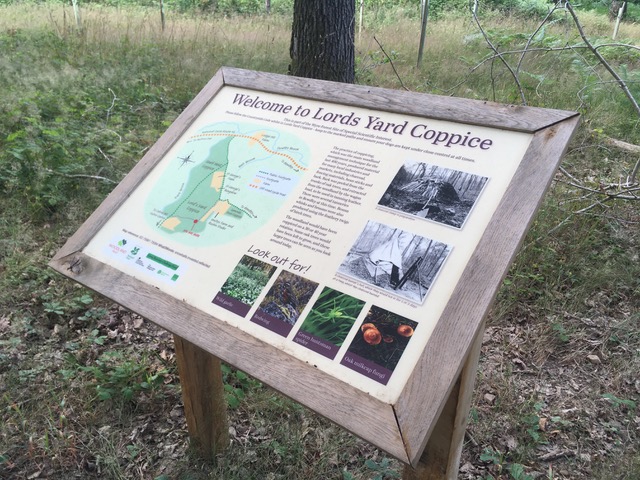
August in the Forest
The school summer holidays were always a happy, carefree time in my childhood. I was content to play in the garden: generally something involving mud, dens and bows and arrows! I would have loved to have some open country on my doorstep instead of miles of suburbia.
This month I expect to see family groups out enjoying the forest on foot and bicycle. The huge increase in visits during the lockdowns of 2020 and 2021 has calmed down but many people have continued to use their newly-discovered local countryside, and it’s very good to see. The public footpaths are there for everyone, while cyclists and horse riders are limited to bridleways. There are a number of concessionary paths too in the forest, where landowners have given limited permission, and there is a general right of access on all land owned by the Forestry Commission and Natural England although it’s preferable to use marked trails for safety and to avoid disturbance to sensitive wildlife. The Guild of St. George’s woods in ‘Ruskin Land’, on the Bewdley side of the forest, are private but crossed by a few public footpaths (but no bridleways) and the use of the major tracks by walkers is accepted. This year six new interpretation boards have been erected at points of interest along the paths to help people to appreciate the history and wildlife of the area. One of these just south of Uncllys Farm is shown in the photo.
Of course these articles have to be written well before the month in question, so I have no idea what the weather will be doing by the time you read this. Will the countryside be recovering from the drought and high temperatures of July? Will water be rationed and the forest streams reduced to a feeble trickle between connecting pools? Or could we even be experiencing flash flooding due to heavy downpours of rain? Both lack of water and too much water cause problems for wild creatures as well as us. Desperate for water, animals can look for unfamiliar sources and eat juicy leaves or fruits normally untouched. The leaves and green apples in our orchards attract deer, wasps, hornets and flies, especially so in dry weather. Pools and garden bird baths become vital not only for birds but for bees and all manner of flying and creeping creatures. (If you put out a dish of water put some pebbles in too to help insects etc. gain access). In flooding conditions stream-dwelling creatures can get washed out of their usual habitats. Silt and stones are carried along and water courses are re-shaped. Flying insects and birds have to shelter from heavy rain and may be unable to feed. Sustained flooding will fill the air spaces in soil and kill plants and soil organisms. I hope that nature will be kind to us and give us moderation this month!
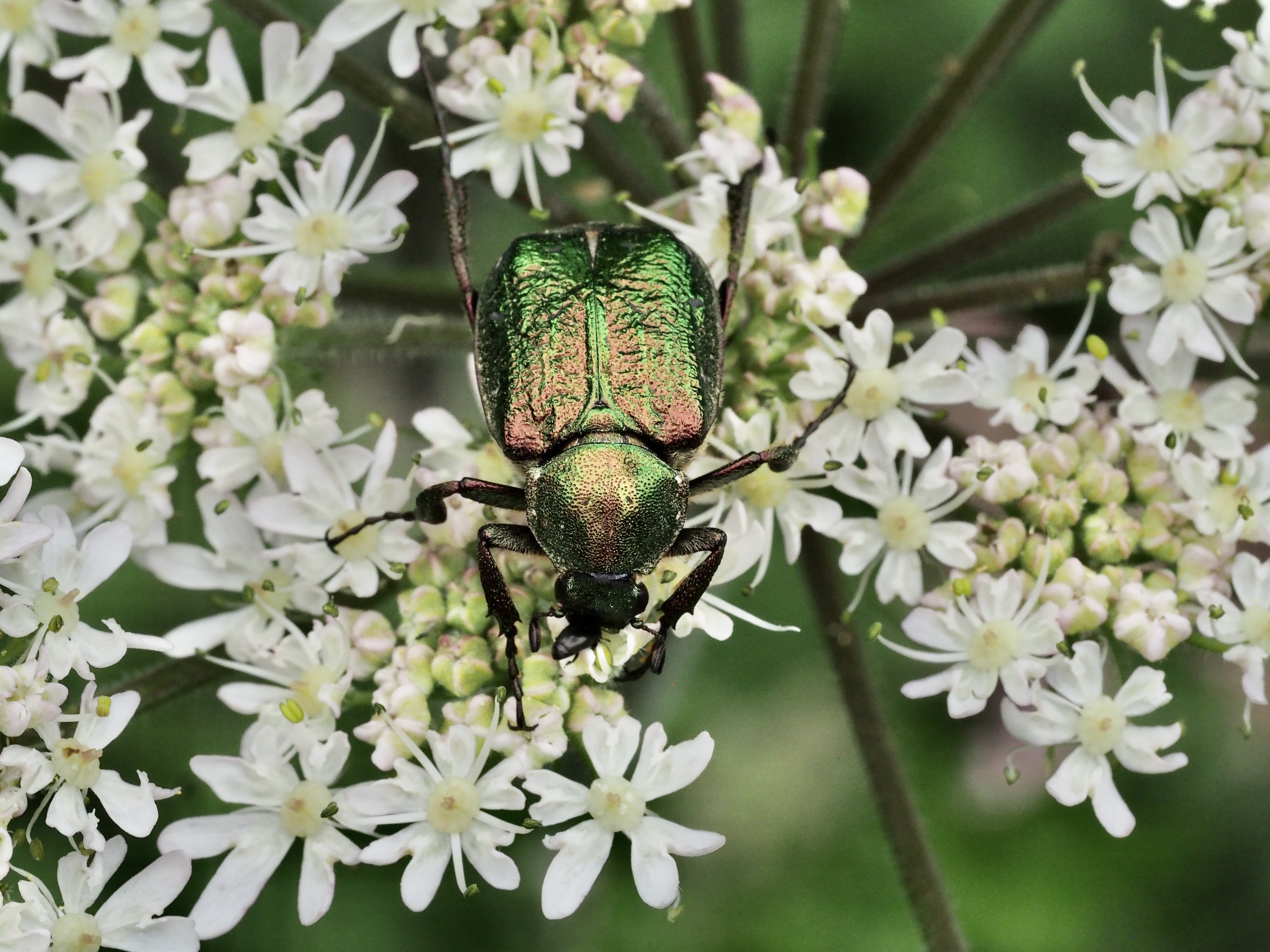
July in the Forest
When we’re halfway through the year it’s good to look back and see how it’s gone so far! I’m pleased to say that nearly all the natural milestones of the year that I look forward to have arrived successfully.
In May I scanned the grassy verges and found the upright sword leaves of the Lilies of the Valley, followed by their secretive but beautifully-fragrant flowers. The Swallows and House Martens arrived, but maybe in smaller numbers, and none of them chose to nest at our farm. Last month, however, we hosted at least two pairs of Redstarts in our nest boxes, we heard Cuckoos (thank goodness for that!) and the Pearl-bordered Fritillaries flew along the forest rides. I’m not sure all is well but I can only hope that the status of our wildlife can be helped back from ‘hanging on’ to ‘on the road back to full health’.
There’s one insect that I’ve never seen around our orchards but I have evidence that it does live here. Classed as ‘rare’ for over a century, the Noble Chafer beetle is a big chap like its distant relative, the Cockchafer or ‘May bug’. It is up to 20mm long and an attractive metallic green (see Rosemary Winnall’s wonderful photo), so you’d think that I might have noticed it, but the reason it’s so seldom seen is not only because it is so rare. Its lifestyle is somewhat peculiar: The female lays her eggs in the mouldering wood of old, decaying fruit trees, where the larvae hatch and feed for two to three years. There they grow, in the almost total darkness of hollow trunks and boughs, leaving behind their droppings or ‘frass’ like little brown crumbs. Discerning naturalists use teaspoons tied to canes to reach into tree cavities and rummage for the tell-tale frass, and I have witnessed this investigation and the evidence it provides! The exciting part of the Noble Chafer’s life comes when the adults emerge in early summer and fly off to feed on umbellifers such as Hogweed and the panicles of Elder or Meadow Sweet. Of course they must also find a mate, and then the lifecycle begins all over again, and the adults die after their four to six weeks of sunshine and love.
The old cherry orchards of the Wyre Forest and its surrounds are becoming fewer and fewer. We’ve kept our original trees, now about 100 years old, as long as possible, prolonging their lives with regenerative pruning. We’ve also replanted old cherry varieties in the gaps but in 18 years we haven’t had a good cherry harvest, being too slow to beat the pigeons and Mistle Thrushes to the fruit. I suppose it’s heartening to know that we’re providing habitat for future generations of Noble Chafer, and maybe they’ll thank us by letting us see them one day!
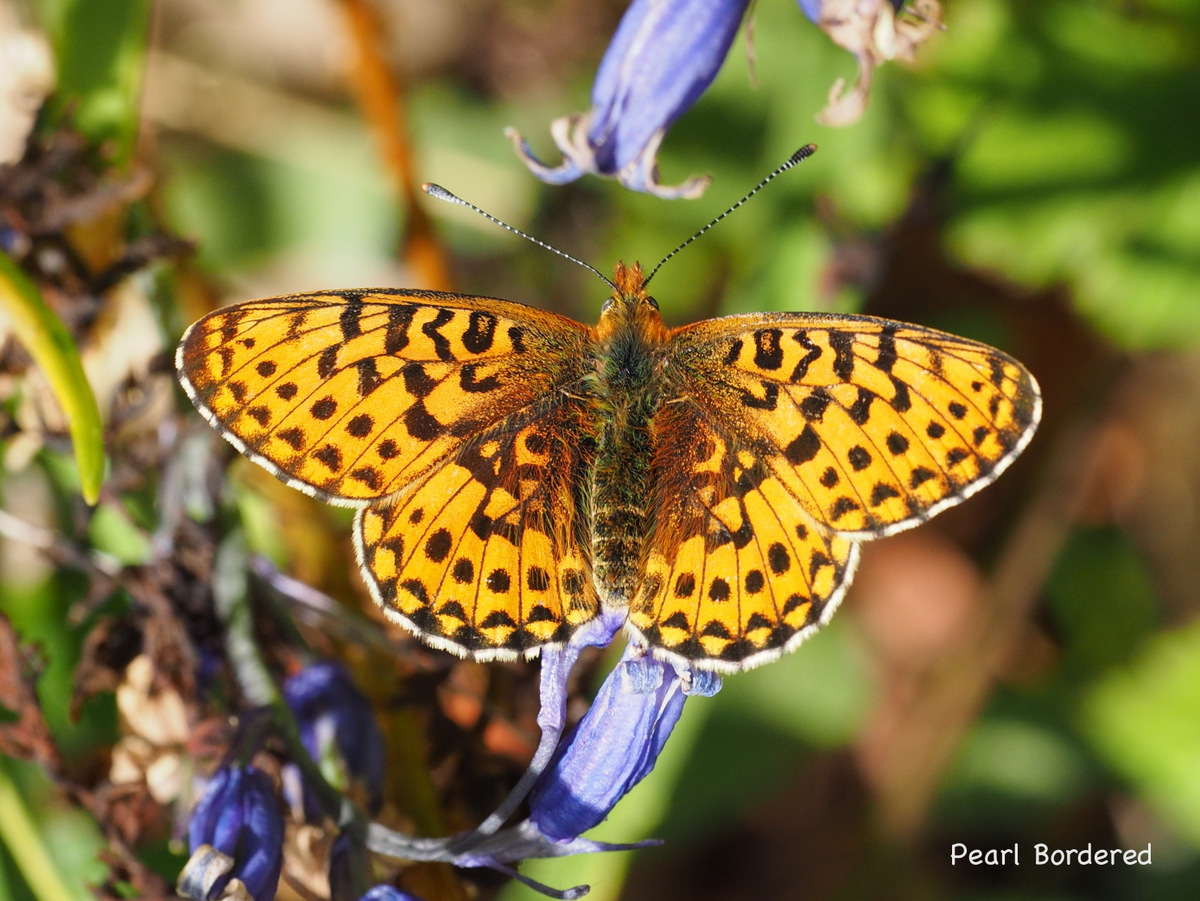
June in the Forest
Seeing butterflies on our walks and in our gardens is one of the delights of early summer though, sadly, not such a frequent experience as it used to be. We are lucky in the forest to see good numbers of Peacocks, Red Admirals, yellow Brimstones and Small Tortoiseshells earlier in the year when warmer weather wakes them from hibernation. They seek out meadows and woodland rides and are also happy in gardens, especially those that are not too tidy and have room for wild flowers and patches of nettles. Other butterflies over-winter as a chrysalis or caterpillar and have to wait for spring to start their food plants into growth.
The forest is a home to such woodland specialists as the Pearl-bordered Fritillary, an orangey-brown butterfly with white ‘pearls’ along the edges of the undersides of both fore and hind wings and a central pearl in the middle of the under hind wing. (Mick Farmer’s photo shows the upper sides of the wings). If you have been out in the right place at the right time you may have already seen them fluttering along the edges of woodland paths, looking for violets on which to lay their eggs. The Small Pearl-bordered Fritillary should appear this month. It is smaller (not surprisingly!) but is hard to identify unless you see it beside its larger relative or it settles with its wings up to let you see the black spot next to the pearl on its under hind wing. Many years of hard work have gone into understanding the habitat requirements of these species and recognising that open areas of coppice and rides, where the butterflies can find shelter, warmth, nectar and places to lay eggs, have allowed them to survive. As a result there are deliberate efforts to recreate these areas, which benefit woodland birds as well.
Even species of butterfly which live deep in the forest are not immune to the destructive effects of factors such as widespread pesticide use in the wider countryside (and gardens as well). Protection of butterflies cannot be achieved by creating ‘island’ nature reserves whose area is too small to allow natural movement and space for genetically-diverse populations. If we care about our wildlife we need to push for an approach to land use which is sustainable, in agriculture, forestry, urban spaces and the 400,000 hectares of gardens in the nation. This is the way we will protect our own future as well.
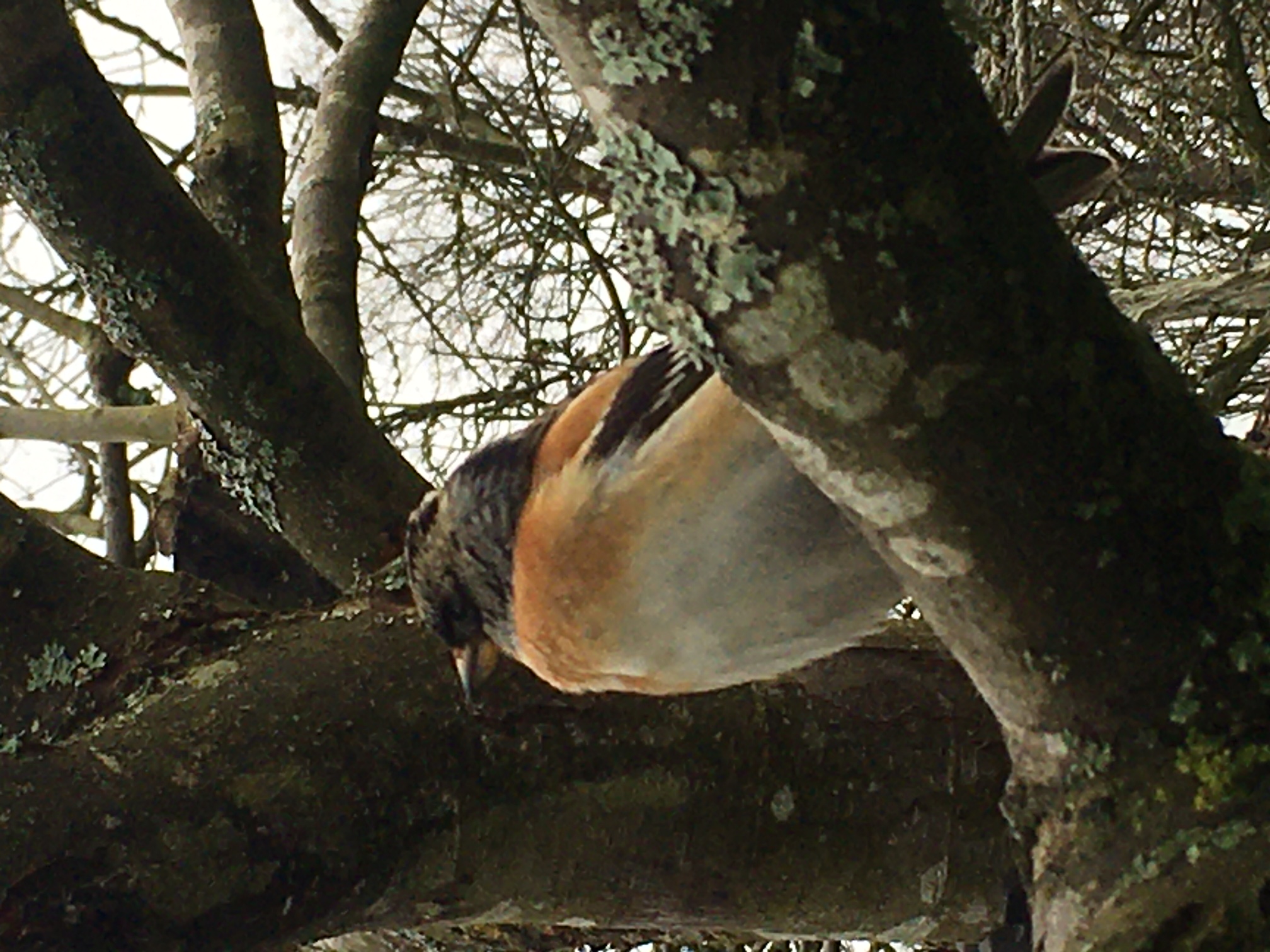
May in the Forest
It’s a bit late in the year to be talking about winter visitors but some of ours don’t seem to want to leave. Last month we saw a small flock of Bramblings under the garden bird feeders on several occasions, clearing up the spillage from the Great and Blue Tits, Great Spotted Woodpeckers and Nuthatches. They like to feed in beech woodlands from September to March or April, but when the beech mast is finished (and the area of beech trees in the Wyre Forest is pretty limited) they visit nearby fields to eat weed seeds and grain. Sometimes they join flocks of Chaffinches, which is very confusing as they look alike. The individual in the photo seemed to have missed her flight home to the breeding grounds of the Scandinavian birch woods, and hung about the farm for a bit longer. Perhaps she was looking for a Place in the Sun.
In the last few weeks we have also had visits from a ‘pair’ of Mandarin Ducks. (I write ‘pair’ because the lady was definitely a Mallard). Mandarins are interesting: although they are native to the far-east they have made themselves at home in the British Isles and large numbers can be seen on the Severn during the winter, particularly near Trimpley Reservoir. They have a diet very similar to the Brambling and, rather surprisingly, can perch in trees and like to nest in large tree holes. We discovered this fact when our only old apple tree at Uncllys was chosen as a nest site in 2008. We watched fascinated as they came and went, building the nest, and wondered how the ducklings would negotiate the ascent of the hollow trunk to reach water. Maybe the mother realised her mistake – at any rate the nest was abandoned.
I’ve been reading ‘Wilding’ by Isabella Tree: the story of the re-wilding of the Knepp Estate in Sussex. One of their earliest success stories was of the Turtle Dove. Threatened with extinction in Britain, the estate saw numbers of singing males rise from one or two in 2001 to 16 by 2017. I had to resort to the RSPB website to find out what a Turtle Dove would sound like, but its throaty, purring call would have been a common sound in the Wyre Forest up until the mid-seventies when numbers here and in the rest of the nation went into a steep decline. They used to be found in tall scrub and young plantations, often nesting in older conifers, and feed in weedy arable fields. Now that grain harvests are followed so quickly by winter crops there is little quantity or time for the birds to feed or raise second broods and they are almost literally squeezed out. (Thanks to ‘The Nature of Wyre’ for this information). What would it take for our forest, the Wyre Forest National Nature Reserve, to see the Turtle Dove return?
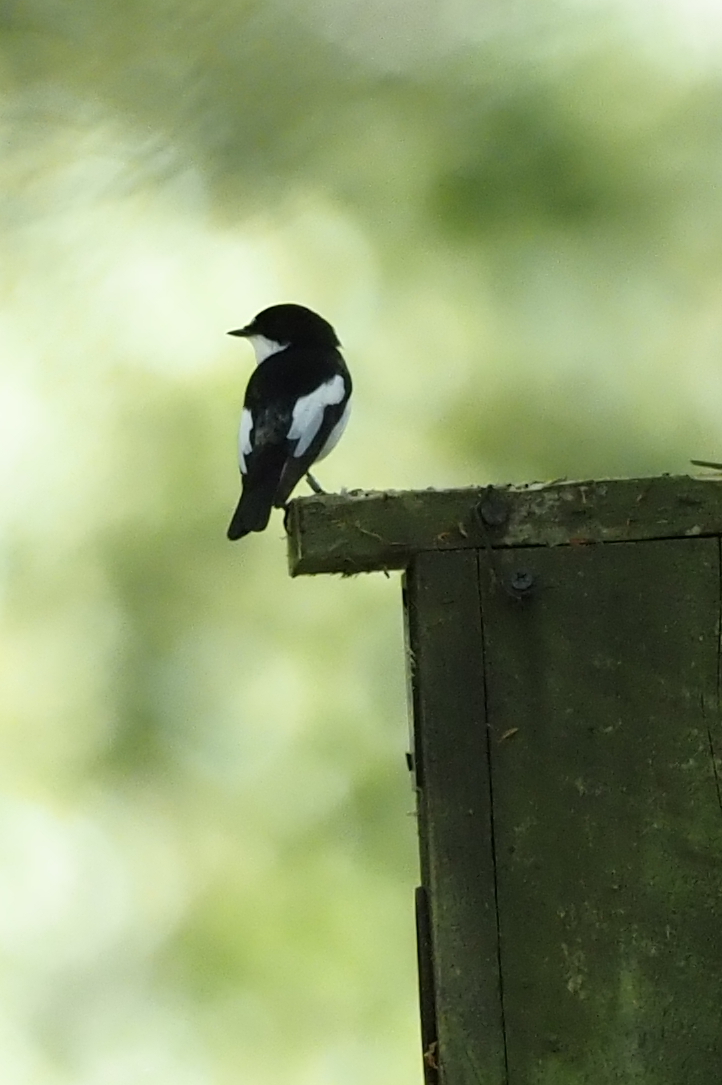
April in the Forest
The cacophony of birdsong on the forest edges announces that spring is here. April sees the arrival of summer migrants such as Swallows, Redstarts, Chiffchaffs and Blackcaps, and we hope to hear the evocative call of the Cuckoo. This seasonal explosion of song is a way of establishing the territories in which breeding pairs will nest and find the food needed to rear their young. The nature of the territory depends on the habitat which that bird needs: some preferring heather and young birch, for instance, while others find food and nesting holes in mature oak trees. The size of the territory depends on the abundance of resources and the pressure of competition from the neighbours. To attract a good number and variety of birds there needs to be a patchwork of different habitats with the range of tree species and ages of growth present in a well-managed woodland. As Wyre has broadleaved and coniferous trees with areas of wetland, heathland, pasture, orchards and gardens all intermingled it offers a relatively attractive home for resident birds and summer visitors. In the past, however, it seems that a structure of woods enclosing more open spaces of heath and scrub provided a habitat for numerous Cuckoos, Nightingales and Nightjars in Wyre (see ‘The Nature of Wyre’ edited by Brett Westwood, Peter Shirley, Rosemary Winnall and Harry Green).
As I have mentioned in these articles before, the national picture for woodland birds is far from encouraging, with an overall reduction in numbers of over 75% since 1970. The Wood Warblers are becoming very scarce in Wyre: they, like the Chiffchaff, nest in low shrubs near the ground and are very susceptible to disturbance. Though the major factor in their decline may be the loss of their winter habitat in Africa it’s still up to us to do what we can here to conserve this delightful summer visitor. Pied Flycatchers will also be arriving soon and, like Redstarts, look for holes in mature oaks to nest in. Mick Farmer’s photo shows a male Pied Flycatcher investigating a bird box that provides an artificial nest hole. At Uncllys we need to refine our nest box positioning and management to make sure that they have the best chance of attracting the rarer birds we wish to help. Temporarily blocking the holes to stop them all being occupied by Blue Tits and Great Tits keeps nest boxes available for later arrivals but it’s difficult to get the timing right. We have been lucky to have Redstarts nesting for the last few years in an orchard tree nest box and subsequently in another which looks unappealing, having no shade at all, but offering good security from the farm cat and other predators. More bird boxes, in a variety of different situations, can only be a good thing.
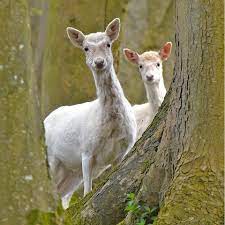
March in the Forest
Two dates that get written down in my diary straight away are the two Saturdays of the deer census. The census is a snapshot of deer populations, a measure of the status quo which is needed to make decisions about future management of the Fallow, Roe and Muntjac in the forest. Like the Garden Bird Survey and the Farmland Bird Survey, it relies on the efforts of enthusiastic volunteers to gather the information but unlike them it is requires an element of stealthy stalking in the half light of dawn.
Of the three deer species mentioned only the Roe are likely to be native to Britain. There are a small number in the Wyre Forest but they seem to be increasing year on year so we assume some manage to breed! More successful are the Muntjac, which are the size of a Labrador dog and, appropriately enough, make a loud bark that penetrates the forest. They don’t often co-operate by standing in view so this call is the surest way of knowing they are present, along with their tracks or ‘slots’ and droppings which are tiny compared to the other two deer species. They are adept at slipping or digging their way under fences and will eat a wide range of vegetation, including bark, which makes them no friend of the forester. They have established themselves widely in the south and east of England since escaping from Woburn Park in Bedfordshire in the 1920s and arrived in Wyre in the 1980s. Muntjac does will come into season straight after giving birth to their fauns and so they are able to breed quickly and are probably here to stay.
It’s not easy to spot the deer among the dull brown trunks and fallen leaves of the winter forest, especially if they stay still, and they always see me before I see them. In the Wyre Forest there is a mixture of colours of Fallow Deer from black, through brown to white. The white ones are, of course, the easiest to spot, in fact very easy indeed, often leading the eye to a group of darker companions. They have a particular beauty and more than a touch of mystery, having a place in Celtic and other cultures as symbols of the otherworld and of purity. The ‘White Hart’ was used as an emblem by Richard II, Henry V and Edward IV (and more prosaically by a large number of pubs!)
We have many excellent wildlife photographers locally and some have managed to take stunning pictures of deer, but I have borrowed the accompanying photo of white Fallow does from the British Deer Society because of its obvious charm.
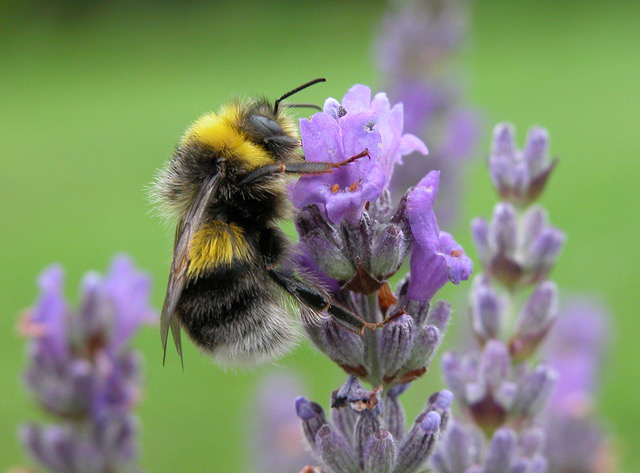
February in the Forest
The forest is really beginning to wake up now. On sunny days I hear bursts of woodpecker drumming and the Blue and Great Tits are busy round the bird boxes intended for more distinguished occupants. Brimstone and Peacock butterflies wake from hibernation and bring a touch of summer to the late-winter garden, making me anxious for their survival in our capricious weather.
You may spot a single bumble bee out and about, seeking a meal of nectar and warming herself in the sun before embarking on the serious business of starting this year’s nest. The queens are the only ones that survive the winter, hibernating in the soil after mating at the end of the previous summer. A disused mouse nest makes a perfect home (perhaps you remember ‘The Tale of Mrs Tittlemouse’ by Beatrix Potter?) and she may collect additional dry grass and moss. She then places a heap of pollen in the nest, lays about a dozen eggs in it and surrounds them with wax which she produces from a special gland on her abdomen. (This information comes from Collins’ ‘Insects of Britain and Northern Europe’ by Michael Chinery, though Beatrix Potter is pretty accurate too!) She also provisions the nest with a store of nectar in a little wax pot. After sitting on the eggs for 5 or so days the larvae hatch and grow (via pupae) into the first workers of the new colony, and they will take over the job of collecting food and tending the larvae which hatch from further batches of eggs laid by the queen.
The photo was taken by Rosemary Winnall and shows a male White-tailed Bumble Bee – one of the six species of bumble bee common in the Wyre Forest. All bees, and indeed all insects, are currently threatened by pesticides and habitat loss on a national and global scale. My recent copy of the magazine of the West Midlands branch of Butterfly Conservation tells me that Professor Dave Goulson, a popular writer and campaigner for recognition of the key importance and plight of insects in our world, will be giving an online talk at their AGM in May. His is a voice of authority and surprising humour, and if you can’t join the talk you can still read his books, several of which are available in our libraries.
We can all do our bit to support populations of insects. Early flowers such as Red Deadnettle and Dandelion are vital sources of nectar for many species and by allowing them to grow in odd corners of our gardens we are helping to maintain the balance and richness of nature. We should also pause before reaching for the pesticide sprays or slug pellets, which do harm way beyond the target species.
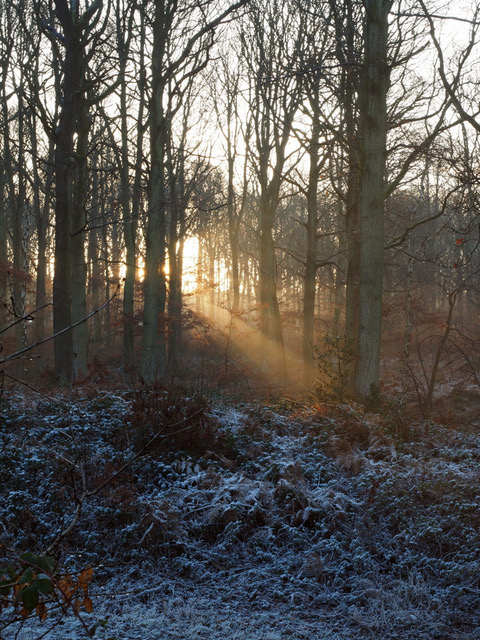
January in the Forest
With the turn of another year we look forward to spring and summer, fresh new growth, and happy times in long days of sunshine. As times move on, though, the imperative to move towards a low-carbon, sustainable future becomes more urgent: we can’t forget the warnings of COP26. You may be asking why trees are still being felled in the Wyre Forest at a time when we are repeatedly told that it is imperative to plant more trees as a way of taking carbon out of the atmosphere. Maybe the answer lies in the carbon cycle, which tracks the path of this element through natural processes. Carbon dioxide forms an increasing percentage of the atmosphere, getting there by the burning of fuels, respiration by animals and decay of organic material. Other carbon compounds are released by industrial and natural processes (such as the digestion of some animals). These compounds are responsible for an overall increase in global temperatures, fuelling more destructive weather patterns, the loss of polar ice caps and damage to the world’s ecosystems . On the side of restoring the equilibrium, the entire plant kingdom works to take in carbon dioxide during photosynthesis. Plants are not just the ones you see in the garden or on a walk through the forest, but include mosses in raised bogs, microscopic soil organisms and phytoplankton in the oceans.
Timber represents carbon that has been taken out of the atmosphere and bound up in solid form and it will only get back there if it rots or burns. If our Wyre Forest timber is used to make buildings or furniture its carbon will be locked up for many years. If it goes for firewood its carbon will soon be back in the atmosphere, if it’s made into a garden bench it will be there when it rots in 20 or so years. What we should appreciate is that it is part of a short cycle which completes over 100 to 200 years. It’s the burning of fossil fuels, formed and buried millions of years ago but burned on a large scale in the last 200, that have upset nature’s balance.
Of course woodlands should be cherished and nurtured, not only because they lock up carbon but because of their wonderful biodiversity. When a development slices through a woodland its damage is not just measured in trees felled but in the loss of creatures which need larger areas to sustain their existence. That is the sadness of all those ancient woodlands bifurcated by HS2.
Now is the best time of year to plant trees and 1200 little native trees will soon be planted in Lord’s Yard Coppice, replacing those felled during thinning and creating a woodland more diverse in species and age structure. If you (or your group) would like to help please contact Daisy at the Wyre Community Land Trust on daisy@wyreclt.org.uk or, if you can’t do that, consider planting a new tree in your garden this winter.
Happy New Year!
2021
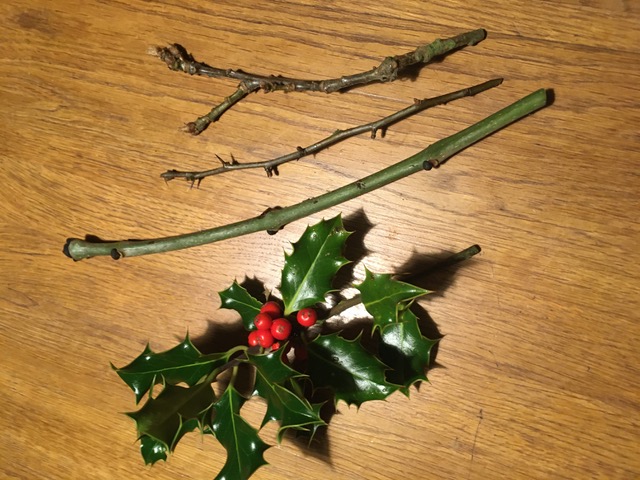
December in the Forest
By the time we get to December we have to admit that it is winter. The old Celtic calendar launched into winter and the new year at the feast of Samhain on November 1st but I’d rather regard that month as part of autumn. So here we are again, with the year having turned full circle, the trees and so many creatures having gone into shut-down.
If you spend a lot of time around trees they become recognisable even at this time of the year by their shape, twigs, bark and other characteristics. Silver Birch (Betula pendula) trees stand out against the rest of the woodland with their white bark and black diamond-shaped fissures, but most of the forest birch are hybrids between Silver Birch and the duller Downy Birch (Betula pubescens), which have brownish bark that turns grey with age but lacks the diamond patterns. Showers of their seeds have been finding their way into windows, cars etc. for several weeks as the female catkins break up, but if you look for them you’ll see the new male catkins still green on the twigs and getting ready to shed their pollen next spring. Excellent pioneers of bare ground and open spaces, the birch soon give up when other trees shade them out. The dead and dying trees provide nest sites for hole-nesting birds such as woodpeckers and Redstarts, and are hosts for the Birch Polypore fungus whose brackets have been used for sharpening razors and can be pulped to make a surprisingly strong paper. I’m sure someone could tell me whether the natural plasters made by cutting strips of the Polypore’s top surface get their antiseptic properties from the compound called betulin which occurs in the tree’s bark. Wikipedia is silent on this subject but mentions other interesting properties including beneficial effects for arteriosclerosis and obesity and shrinkage of cancerous tumours.
Birch is moderately good as firewood but it is close-grained and clean-looking, making it a good choice for whittling spoons or turning bowls. Its fine twigs were used to make not only the utilitarian besom brooms but, when peeled, kitchen whisks and ‘wiskets’ for removing fluff from carpets in the local factories.
If you’d like to become familiar with some winter twigs, see if you can find the following:
- Ash, with black buds opposite each other on either side of the stem
- Alder, often growing beside water and carrying its tiny cones and purplish catkins during the winter
- Beech, with pointed , shiny-brown buds set alternately on slender stems
There are oak, ash and hawthorn in the photo. No prizes for getting the Holly!
Happy Christmas!
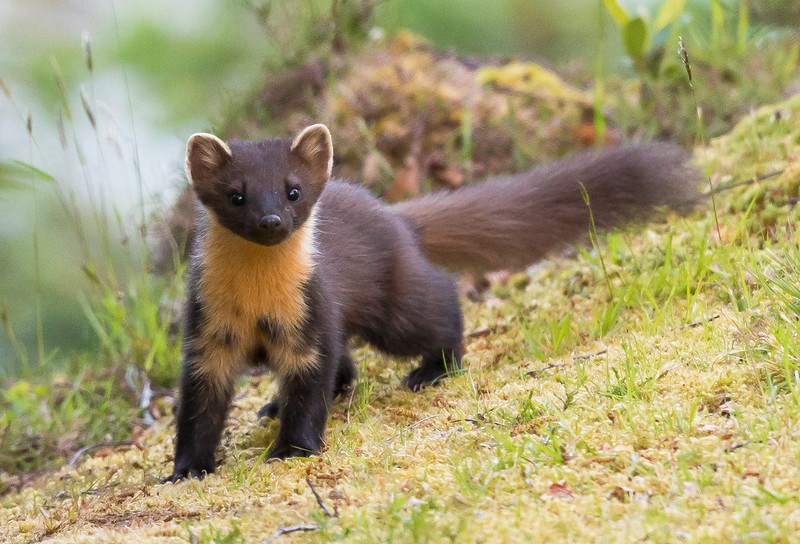
November in the Forest
Beaver reintroduction in Shropshire? I was slightly surprised recently to find a communication from the Shropshire Wildlife Trust in my letter box asking for my opinions on this project and wildlife in general. (Incidentally I don’t live in Shropshire, but a substantial part of the Wyre Forest lies in the southeast of the county). I wasn’t surprised to find that it was a member recruitment exercise, but the Beaver reintroduction is due very soon at the Old River Bed nature reserve in Shrewsbury. As the SWT says, ‘The site is swampy and great wetland habitat for insects, fish, birds and mammals but the ecosystem is impacted by the fast growth of trees such as willow, which would eventually dry the site out and dominate over the swamp plants if left unchecked. Beavers would help to manage the scrubby trees through their ability to "coppice" trees and reduce their impact on the sensitive wetland habitat. The Old River Bed is owned and managed by Shrewsbury Town Council, who have managed the site with contractors and grazing livestock for many years, both of which come at a high financial cost. Re-introduction projects are already underway in several locations across England and have proved to be hugely successful in managing wetlands more sensitively and for a fraction of the cost’.
So will we see Beavers making their way into the Wyre soon? So far the reintroductions have been contained within enclosed wetland sites so it’s very unlikely but escapes aren’t completely out of the question. I can imagine that many of us would be fascinated to have them as an addition to our local fauna but I can’t rule out a degree of irritation at unsanctioned tree fellings and waterway re-design! There seems to be no doubt, however, that their activities would be a great help in flood control.
Another mammal that may re-appear in the area after a long absence is the Pine Marten. They have gradually disappeared from nearly all of England because of the reduction of their woodland habitat and their persecution by gamekeepers, although a small number seem to have held on in the South Shropshire Hills. Individuals from a viable population in the north of Scotland were re-introduced into mid-Wales from 2015 to 2017 and the Forest of Dean in Gloucestershire in 2019 to reinforce the local animals; their success is being monitored. You can see a delightful film, ‘Wild again in Wales’, at www.vwt.org.uk/projects-all/pine-marten-recovery-project/ .They are agile tree-climbers, nocturnal, elusive, and similar in appearance to their relatives: weasels, stoats and polecats. Their diet includes fruit, insects, small mammals and both birds and their eggs, although there doesn’t seem to be any evidence that they have a harmful effect on woodland bird numbers. What does appear to be significant is the reduction of Grey Squirrels where the Martens return – a definite bonus for forest managers infuriated by the damage that the Greys do to growing trees, and a hopeful sign that Red Squirrels could also return one day.
October in the Forest
At the end of this month the world’s most affluent nations and largest global businesses meet in Glasgow for COP26 (the 26th Conference of Parties or, in other words, the UN 2021 Climate Change Conference). The parties need to reach some brave and far-reaching decisions to avert the worst effects of climate change.
I’m guessing that I’m not the only one who can experience despair in the face of reports of ever-worsening environmental damage, extinction threats and freak weather events but at least I have the wildlife of the Wyre Forest on my doorstep to reassure me that things are still fine in our own ancient English woodland.
Or are they? Is the absence of nesting House Martins this year due to their migration from Africa being disrupted by unusually bad weather? Oak trees are dying of diseases not known before; can they recover and still dominate the forest in years to come? Should I be pleased that Gooseberry Sawfly and Raspberry Beetle have failed to attack my fruit crops this year or is this another sign of crashing insect populations? There are a number of other Wyre Forest residents that are causing concern. The number of Cuckoos has been dropping each year, and this year I never heard one calling. The adder population seems to be in decline despite efforts to provide them with ideal habitat. Ash trees aren’t a major constituent of the forest but are succumbing to Ash Dieback as it sweeps through the nation.
Rather than dwelling on these examples, which for the most part have causes that are not fully understood, let me tell you about some of the things being done to help the situation. Firstly, we are understanding more about the natural systems that control the amount of carbon dioxide in the atmosphere and beginning to appreciate the role of forests, peat bogs, soils and aquatic habitats in locking up carbon. The patchwork of habitats in the landscape, whether woodland, heathland, wetland or pasture, is precious and needs to be carefully managed. Erosion needs to be repaired, smothering vegetation cut back or grazed, and silted-up ponds restored. The forest needs to be more varied to provide food and shelter for large numbers of species even though new tree diseases are taking their toll, so this winter another 2000 native berry and nut-bearing trees will be planted in the oak woods.
The ‘Slow the Flow’ project is making good progress with many leaky dams having been constructed locally to reduce the peak flow in the Dowles Brook and River Severn after heavy rain, and landowners are being encouraged to increase woodland cover and create new lakes and ponds. There are no ‘re-wilding’ schemes that I know of locally, but maybe that is the key to it: that we all do our bit to re-wild those little pieces of the world where we have the chance and power to do so.
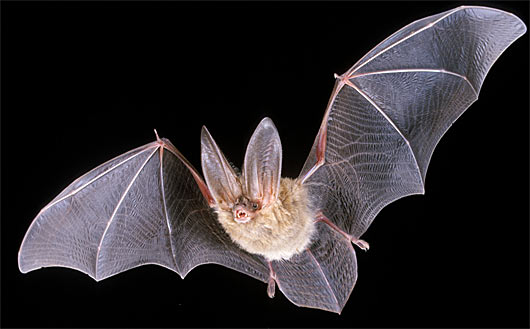
September in the Forest
In September there is often some lovely, warm weather still to come but the shortening day length sends us indoors in the evenings and a heavy dew often greets us in the mornings. This is the month when many British plants and animals switch from the serious business of reproduction to strategies for surviving the winter.
All through the summer, bats have been roosting among the roof tiles and in the farm’s out-buildings. Their foraging flights around the buildings at dusk are visible through our un-curtained windows, and sometimes, when insomnia strikes on a warm night, I wander into the garden to see the stars and watch the bats’ rapid acrobatics as they home in on their prey using echolocation. 10 species of bat have been recorded in the Wyre Forest, possibly more, but I think most of the bats I see are tiny Commom and Soprano Pipistrelles or Brown Long-eared Bats (like that in the photo). I have no evidence to say whether or not any of these breed at the farm, although a nice, warm loft makes for a very desirable bat residence, but the mature oak trees around us are very likely to provide suitable sites too. Features such as woodpecker or rot holes, torn branches, loose bark and dense ivy or honeysuckle growth, all enhance a tree’s attraction as a bat residence, and the older a tree is, the more likely it is to have them. The local woods are further enhanced by bat boxes, just in case.
From May to August females group together and seek out warm, secure maternity roosts in which to give birth to their single pup. The babies are suckled by their mothers for four to five weeks, after which they will leave the nest to forage for their food. Although bats may move to different roosts during the course of the year, the mothers are very sensitive during the breeding season and may abandon their young if disturbed.
At this time of year, with the breeding season over, the males and females share roosts and mate, but the sperm is stored by the female and embryo development only begins in the spring. Soon adults and young will be finding places to hibernate, which need to be cooler than the maternity roosts. Whether in buildings, trees or caves all bat roosts are protected by law and we are obliged to check for their presence before development or tree felling can go ahead.
September is a good time to get the garden pond ready for winter, before its resident creatures start to hibernate in the mud and surrounding stony crevices. Some of the plants, such as the water lilies, have put on exuberant growth and need ‘a good hack’. It would also be a good idea to scoop out some of the sludge that has accumulated at the bottom….but maybe I’ll leave that for another year!
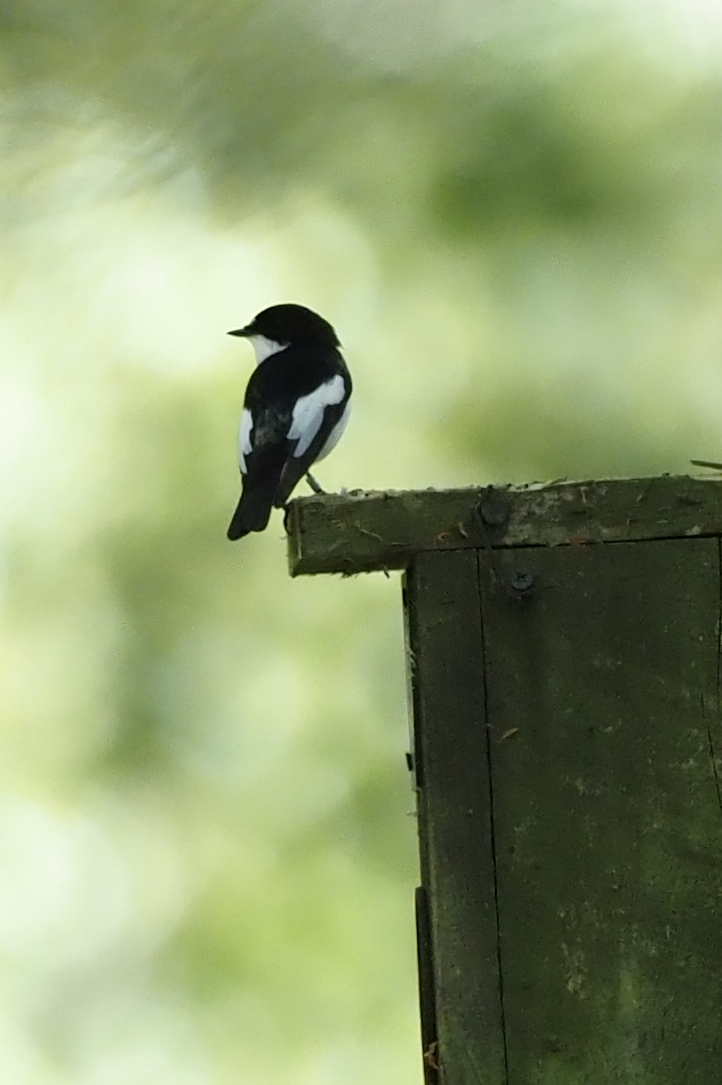
August in the Forest
The birdsong has been absolutely riotous this year but now that we are into the summer there is a change in the message. We still hear ‘Here I am!’ and ‘This is MY territory’ but also a lot of ‘Where are you, baby?’ and ‘FEED ME!’ (I wrote about the noisy dusk-time squeaking of the Tawny Owl chicks last month). We’re particularly pleased to hear frequent contact calls from Redstart families in our orchards and the woodland edges, proving that they are breeding well in the Wyre Forest despite a general decline in Europe as a whole.
Mick Farmer’s photo is of a Pied Flycatcher. Numbers of these birds fell to a few breeding pairs in the late 2000s but have since recovered and are up to at least the mid-teens. (The count is based on the number of males heard singing, but as they may have more than one mate it’s difficult to say how many will nest). Pied flycatchers arrive here in April from West Africa and if their arrival coincides with an abundance of invertebrates in the oak trees then they have a good chance of success. Their natural nest sites are woodpecker holes in older trees but they readily use nest boxes as long as other occupants haven’t got there first! Additional human intervention can prevent Great Tits and Blue Tits from occupying boxes by blocking the holes until the Pied Flycatchers appear but, as we have found trying to do the same for Redstarts in the Uncllys orchards, the timing is tricky and the tits are always ready to take up residence! (Thanks to the Worcestershire Wildlife Trust’s surveyor, Craig Reed, for the update on the Pied Flycatchers).
We all need as much good news as we can get, and I was delighted to learn that the new Burlish Meadows reserve (the old golf course and landfill site on the edge of Stourport) has, under the management of the District Council Ranger Service, already become a diverse habitat rich in wildflowers and crammed with all kinds of insects including Common Blue, Small Copper and Brown Argus butterflies and the Six-belted Clearwing moth. OK, I know it isn’t the forest but in conservation terms connectivity is vital, and Burlish Meadows connect to Droppingwell Farm (Worcestershire Wildlife Trust’s new acquisition), which connects to the River Severn, which connects to the Wyre Forest. Among many other volunteers I helped to plant trees at Burlish Meadows last winter, and I’m looking forward to seeing how this important tract of land grows and develops.
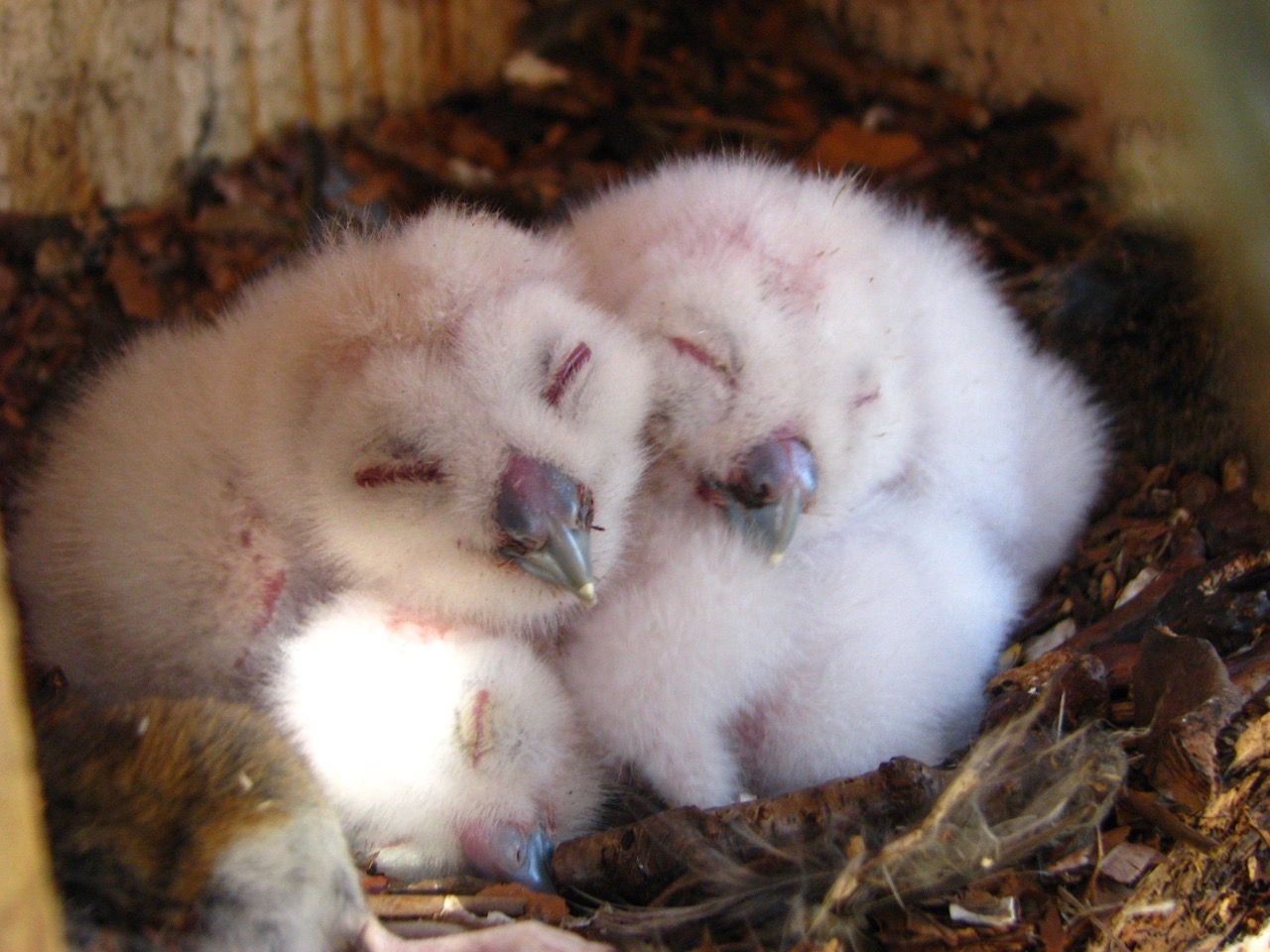
July in the Forest
At Uncllys Farm we recently had an encounter with things that go squeak in the night and I realised that I had heard the sound before. (In fact I wrote about it in one of my articles.) It was just as if someone had trodden on a squeaky toy, or several squeaky toys, and happened at dusk, which turned out to be a bit of a clue. Thanks to the technical wizardry of a smart phone we were able to send a recording to the ever-helpful Rosemary Winnall, who identified the source as a family of Tawny Owl chicks letting their parents know that they wanted feeding! They were a bit bigger than those in the photo, having flown the nest to take up positions around the edge of our hay field. Judging by the number of times I spot a little brown shape scooting across a garden path I think the Field Vole population is plenty big enough to sustain several owl families. While listening for the owls subsequently we heard the strange call of the Woodcock in the distance – quite different to the sound of the owl fledglings.
Last year I started to keep a diary of the things I was seeing around the farm and the local woods. It’s been fascinating to look back, comparing this year to the last. What surprises me most is that the events I noted (flowerings, fledgings etc) have occurred at virtually the same dates this year, despite my recollection being that last spring and early summer were very warm and this year started very cold. Sadly there are things completely missing this year. A couple of House Martins investigated the eaves of the Studio but didn’t stay, and we saw no Swallows at all. I haven’t heard a Cuckoo yet this year. I watched a lovely, bright-winged Tortoiseshell butterfly in the garden a few days ago and realised that I was hardly seeing any butterflies this year, but maybe things will improve as the good weather goes on.
This month we expect to hear the young Buzzards shrieking for their parents from the woods and field fences. Another feature of July in this part of the woods is the eruption of numbers of tiny Common Toads moving out from their birthplace in the little reservoir. If you get the timing right you can go down to its margins and watch them moving out into the forest, but be careful where you walk!
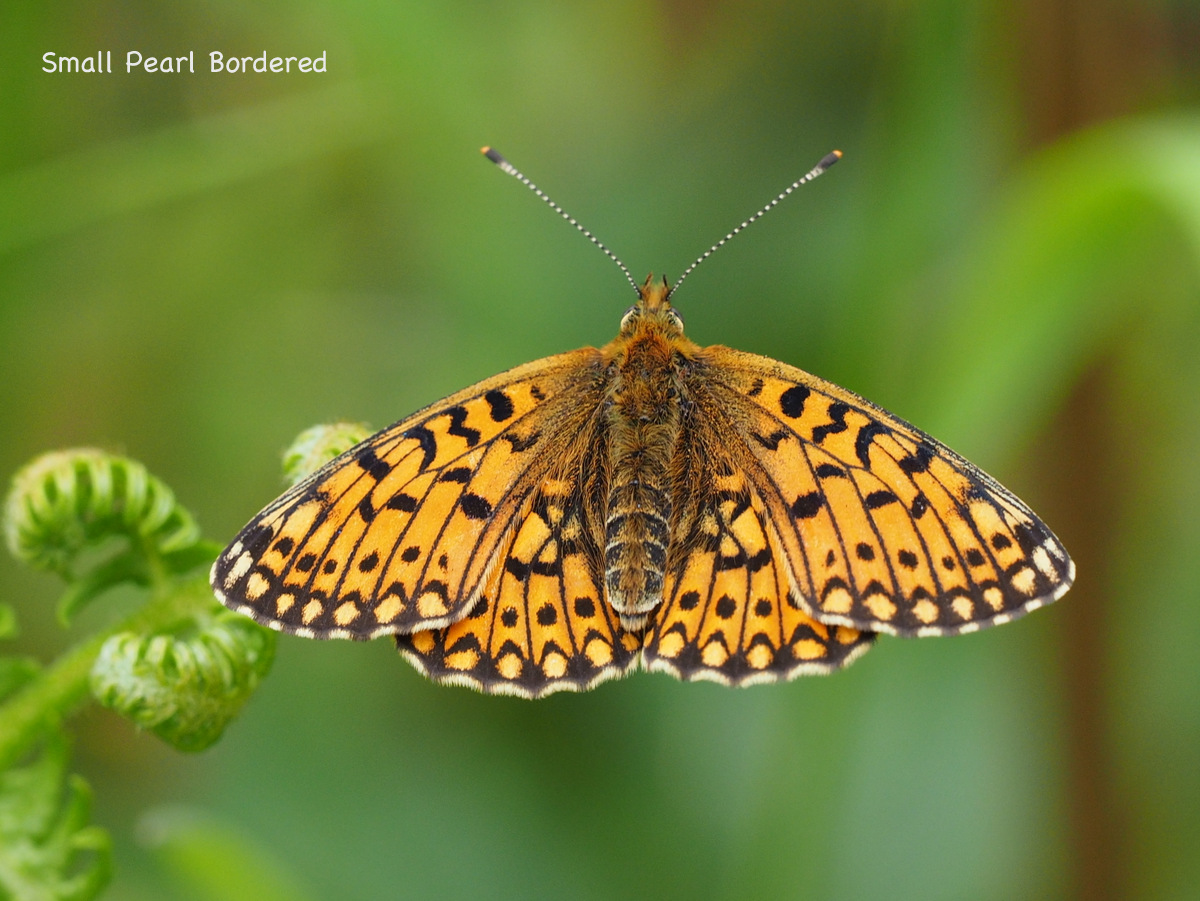
June in the Forest
Early summer has come, as the orbit of the Earth decrees it must, despite a reluctant spring that was cold, too dry (in April) and too wet (in May)! Each day has brought new leaves, blooms, insects and birds to delight us, lifting the heaviness of a winter that was far too long.
The year’s first sightings of butterflies bring a special thrill. Across the nation concern for these insects, which have shown a 76% decline (in abundance, occurrence or both) since the 1970s, has prompted many projects to protect or restore their habitats. In the Wyre Forest there has been a huge effort to conserve the Pearl-bordered and Small Pearl-bordered Fritillaries which can be seen bringing a flash of orange to woodland edges and rides from May to mid-August. (Mick Farmer’s photo is of the Small PBF but does not show the underside of the hind wing which distinguishes it from its relative.) Both lay eggs on the Common Dog-violet, which is often seen where the sunlight reaches the ground at the edges of rides and in recently thinned or coppiced areas. Surprisingly, Bracken is another essential plant for the two species as long as it is not allowed to dominate the vegetation completely. It provides a sheltered nursery for young violet plants and the dead Bracken provides a warm place for the butterfly caterpillars to bask in cool weather. Thanks to careful cutting of vegetation, cattle grazing and coppicing in the Wyre Forest our local populations of the butterflies have held on. On a national level, although the last 3 years have generally been good for butterflies, 2020 year saw the third worst year on record for the Small Pearl-bordered Fritillary and its ninth consecutive year of below average numbers. The charity Butterfly Conservation draws attention to the sad fact that what is now seen as a ‘good’ year for butterflies is still poor compared to records from 40 years or more ago, and that we have forgotten, or never experienced, the abundance of former decades.
There are always opportunities to reverse this trend, which applies to all areas of our wildlife. It was so encouraging to talk recently to a visiting ornithologist who is surveying birds in woodland around Uncllys Farm. Although her work is not yet complete, she has found good numbers of Redstarts, Willow Warblers and Tree Pipits as well as Wrens, Blackcaps and Goldcrests in the sections of forest which have been thinned, fenced and planted with diverse native trees over the last three years. The difference between them and the open woodland is, she says, very noticeable.
That is worth celebrating, and I hope it is a story that will be repeated many times over. Let me know if you want to be part of the good news and help to plant another 2000 little trees next winter!
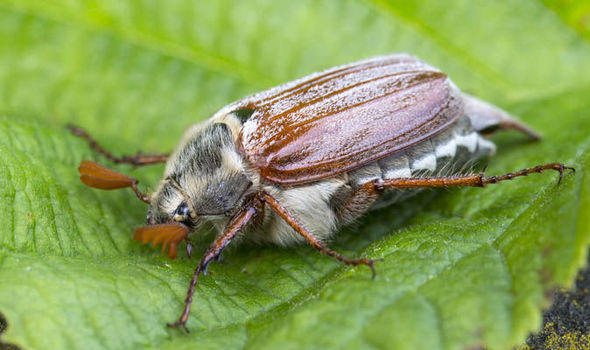
May in the Forest
This month lends its name to various plants and animals that are conspicuous at this time of year.
Firstly we can look out for the arrival of white hawthorn blossom along the hedgerows. Called simply ‘May’, the white, five-petalled flowers with dark pink stamens appear after the leaves, unlike the blackthorn which is in a hurry to get its white blossom out first and beats hawthorn by a month. It seems to have been noted as a boundary marker at least from Saxon times but became much more common when it was used extensively as a hedging plant to divide the commons during the enclosures of the eighteenth and nineteenth centuries. ‘Flora Britannica’ by Richard Mabey devotes six pages to the hawthorn and its folklore. The superstition that it is unlucky to bring May into a house seems to be pretty widespread across the UK, and this might have something to do with its rather pungent smell, which repels some people (its chemical composition includes a compound produced by decaying flesh) but is certainly attractive to many insects.
This brings us to two insects linked to the month of May. Mayflies are associated with freshwater and fishing. Clouds of the adults, with struggling flight and trailing tails, rise from the water as they hatch from aquatic nymphs (the young stage) this month. They make easy prey for fish and birds and, in any case, they are very short-lived, mating, egg-laying and dying within a day in some species. The name of the mayfly order is ‘Ephemeroptera’, referring to their brief lives.
The second insect is the huge beetle often called a Maybug, which flies clumsily around external lights at night in early summer and can often be found, exhausted, on your doorstep in the morning. Also known as Cockchafers, they are well-known and disliked by gardeners. The adults eat fruit and flowers but the larvae are the main objects of wrath: they hatch from eggs laid in grasslands and spend the next three or four years feeding on roots and causing the sudden death of favourite garden plants. You may have found these fat, white grubs with brown heads when digging, and they make a good meal for Rooks and Badgers.
May is the usual month for dawn chorus walks. Set your alarm early and get yourself to some woodland for about 5.30 to experience one of the natural world’s most delightful performances. I know there are ‘apps’ to help with identification of different songs but I’d be more likely myself to take a look at (and listen to) the website www.songbird-survival.org.uk.
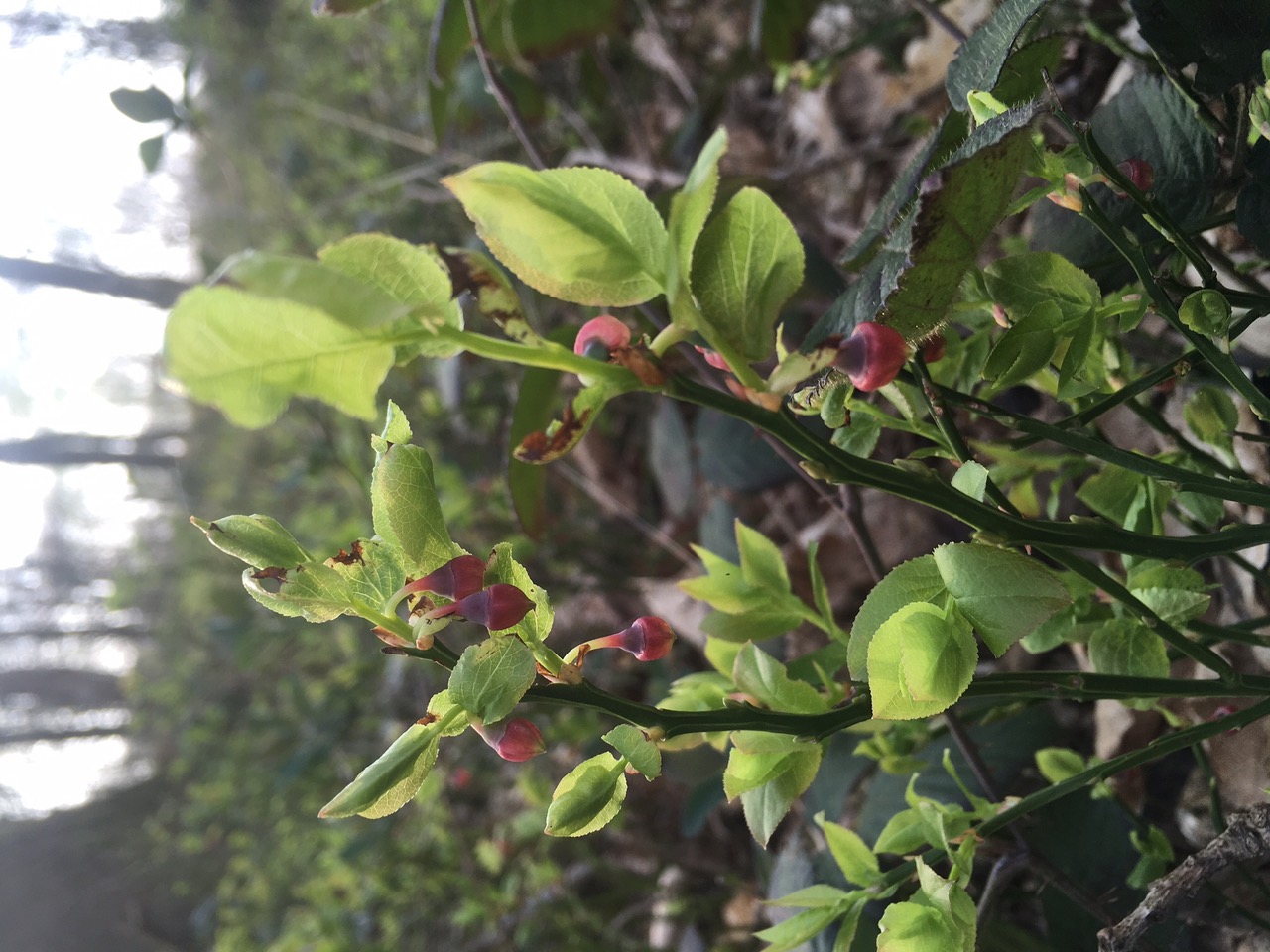
April in the Forest
The days are warming up and the first honey bees have joined the bumble bees among the early nectar-rich flowers in the garden. They love the blue Lungworts and the fragrant flowering shrubs there, while out in the forest there are Wood Anemones, Yellow Archangel and the first Dog Violets to forage from.
We finished the tree-planting last month, and it will be interesting to watch the new trees’ progress during the growing season. I can see how those from one and two years ago are getting on, and it’s very encouraging. Some of the older ones are nearly 2 metres high and are providing food for invertebrates and cover for birds. The first hatchlings of Blue Tit and Great Tit will soon want feeding, so their parents will be kept busy all through the daylight hours finding caterpillars and other food for them. I hope the forest can keep up with demand as the new leaves grow: the hawthorn in bright green leaf now, ahead of the other trees.
This month the tiny pink bells of Bilberry flowers will appear on the stems of the low bushes. Vaccinium myrtillus is its Latin name but it has many British names: whinberry, whortleberry, whorlberry, blaeberry in Scotland, and I’ve seen wimberry attributed to the Welsh borders. It doesn’t have a name from the East Midlands or Anglia because it doesn’t seem to grow there. I’ve been wondering why it is that you find tracts of the forest dominated by this wiry little plant but none elsewhere. I think the answer must lie in the soil: my internet and book research has so far narrowed down its preference to acidic, well-drained soils. It’s a plant that thrives in heathlands: a habitat that developed where trees were cleared on poor, acidic soils and grazing animals prevented their re-establishment. Today the area of lowland heath is very much reduced by its loss back to woodland after the abolition of many common grazing rights in the nineteenth century and, more recently, by housing and other development. (Ironically, some of the best surviving heathlands are those used by the MOD as firing ranges). Anyway, the bilberry still manages to occur as a common plant on acid soils and is able to hold on under woodland by coming into leaf and flower early in the season before being shaded out by the tree canopy.
The ewes at Uncllys are due to lamb this month so I’ll be keeping an eye on progress and hoping that complications will be few. If you are walking a dog nearby please don’t take any chances – put it on a lead until you’re well away from the farm. Thanks!
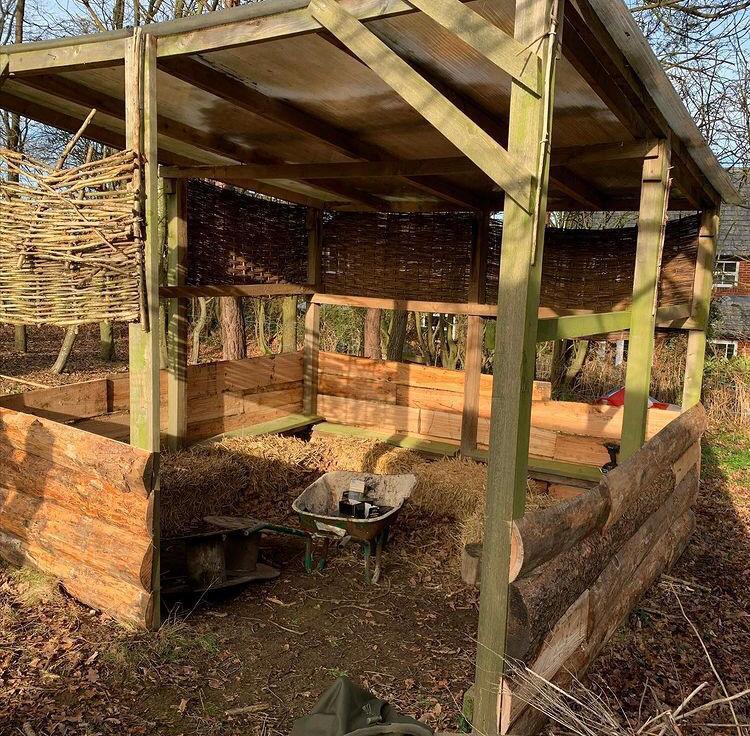
March in the Forest
There are vandals in the forest. It’s shocking isn’t it? For the last 3 years staff of the Wyre Community Land Trust (WCLT) and volunteers organised through Uncllys Farm have been working in the oak woods in Lord’s Yard Coppice. Areas which have been thinned out have been under-planted with a variety of native trees which will contribute to a more varied, resilient and wildlife-rich forest. The new trees are protected by translucent plastic tubes held vertical by wooden stakes – but something seems to find these new forest features irresistible. Numerous times we’ve been back to re-fix tubes, knock in stakes and even replant the trees. Whatever is causing the damage likes chewing the cable ties holding the tubes to the stakes, enjoys pushing the stakes over and has a taste for young trees. The finger of suspicion has been pointed at Grey Squirrels but I have doubts that they can push stakes over, so my money is on Fallow Deer. It’s a mischievous side to these animals that I haven’t heard about before.
This month I hope that small groups will be able to resume the tree planting at a safe distance from each other. Being involved in work like this is a good social experience (even at a distance) and gives the satisfaction at the end of the day that much good will come of it over many years to come.
My attention has also been drawn to some other excellent work going on at Far Forest Lea Memorial School. A small shelter that was beginning to rot away has been given new life with timber supplied free by the WCLT and under the guidance of local builder and friend of the school, Ron Clowes. Help came from an unexpected source in the form of striking gas men, who wanted to get stuck in to community projects. As soon as something near normal school routines return the new Forest School can begin. The shelter, a storage shed and a fire circle will all be used to encourage children to explore and learn out of doors, finding out about the world by play.
Talking about happy sounds out of doors, the bird song that really became noticeable last month is increasing in volume and variety and you may hear one of the first summer migrants, the Chiffchaff, adding its onomatopoeic two-note call. I say migrant but it is increasingly spending the winter here too. It should benefit from the more open woodland and mown rides in this part of the forest where a variety of flowering plants will provide homes for the insects and spiders it needs to breed successfully.
Meanwhile I shall be tramping about, looking for frogspawn in my local ponds and adding to the annual record of the return of spring.
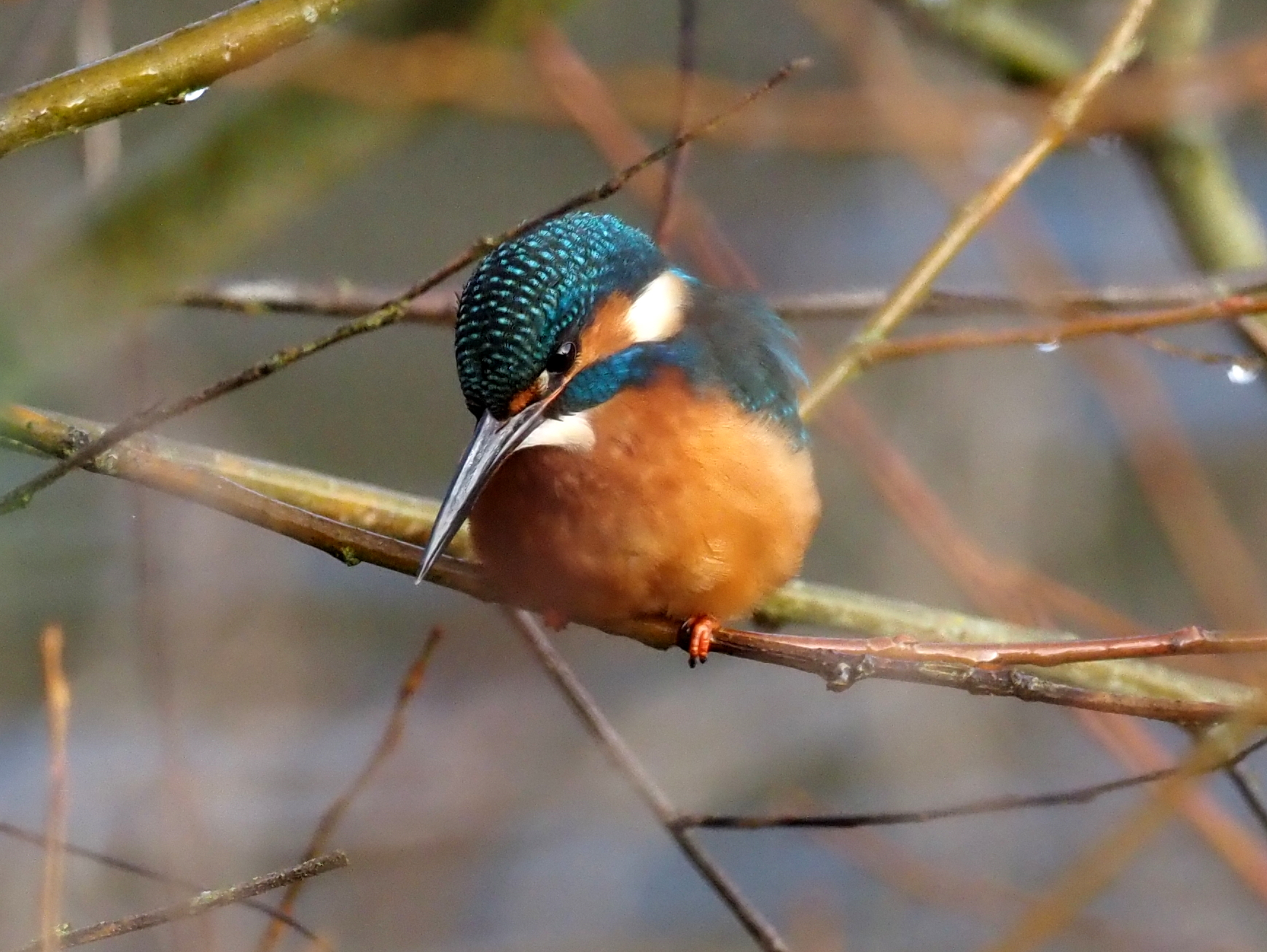
February in the Forest
We know that the winter months are not ‘dead’ and that even January can see gorse flowering, but February is the month when I wake up to the fact that spring is approaching. The Christian feast of Candlemas (2nd February) has customs linked to the lengthening of the days, some of which it inherited from the Celtic Imbolc festival: the celebration of the start of lambing. Also this month we have St. Valentine’s Day: the time when birds pair up for the year and humans turn their thoughts the same way! Those of us not inclined to follow in that direction can still make use of National Nestbox Week to help our garden birds.
This month the hardy and cheerful Snowdrop greets us in gardens and hedge banks: my ‘Wild Flower Key’ by Francis Rose doesn’t seem to be sure whether it’s a native but allows that it may be so in the Welsh Borders, and that’s good enough for me. I’ll be watching for buds bursting on the trees (especially the 1250 little saplings we’ve underplanted over the winter in the oak woodland near Uncllys Farm with the help of enthusiastic, socially-distant volunteers), but I may have to wait another month. Meanwhile I can enjoy the display of catkins in the hazel coppice: male flowers of the tree opening in fine weather to shed their yellow pollen. Look carefully and you will see the tiny red female flowers clinging close to the bare twigs, ready to produce hazelnuts when fertilised by pollen carried on the wind.
Our opportunities to exercise have been very limited recently and the temptation is to stride out on woodland walks and cover a bit of ground. However, I would advocate going a little more slowly and pausing so that the wildlife around us can recover and resume normal activity. How about taking something to sit on and taking a break on a log or under a tree? The calls and songs of birds will return and you may be surprised to see insects on the move or hear the rustling progress of a mouse or vole. The reservoir near Uncllys is a popular spot but I can still find myself as its only observer and be rewarded with a sighting of its most colourful resident, the Kingfisher. At this time of the year the males and females live separately, watching out for fish from their bankside perches. ‘The Nature of Wyre’ by the Wyre Forest Study Group, tells me that four pairs have nested along the Dowles Brook in recent years, excavating tunnels up to three feet into the bank to do so. Their choice of nest site may put them at risk of being washed out by flash floods but in good years they may rear up to three broods of young. We are very lucky to see Kingfishers in this area, not only in the forest but often along the banks of the Severn, which is where Mick Farmer took this splendid photo.
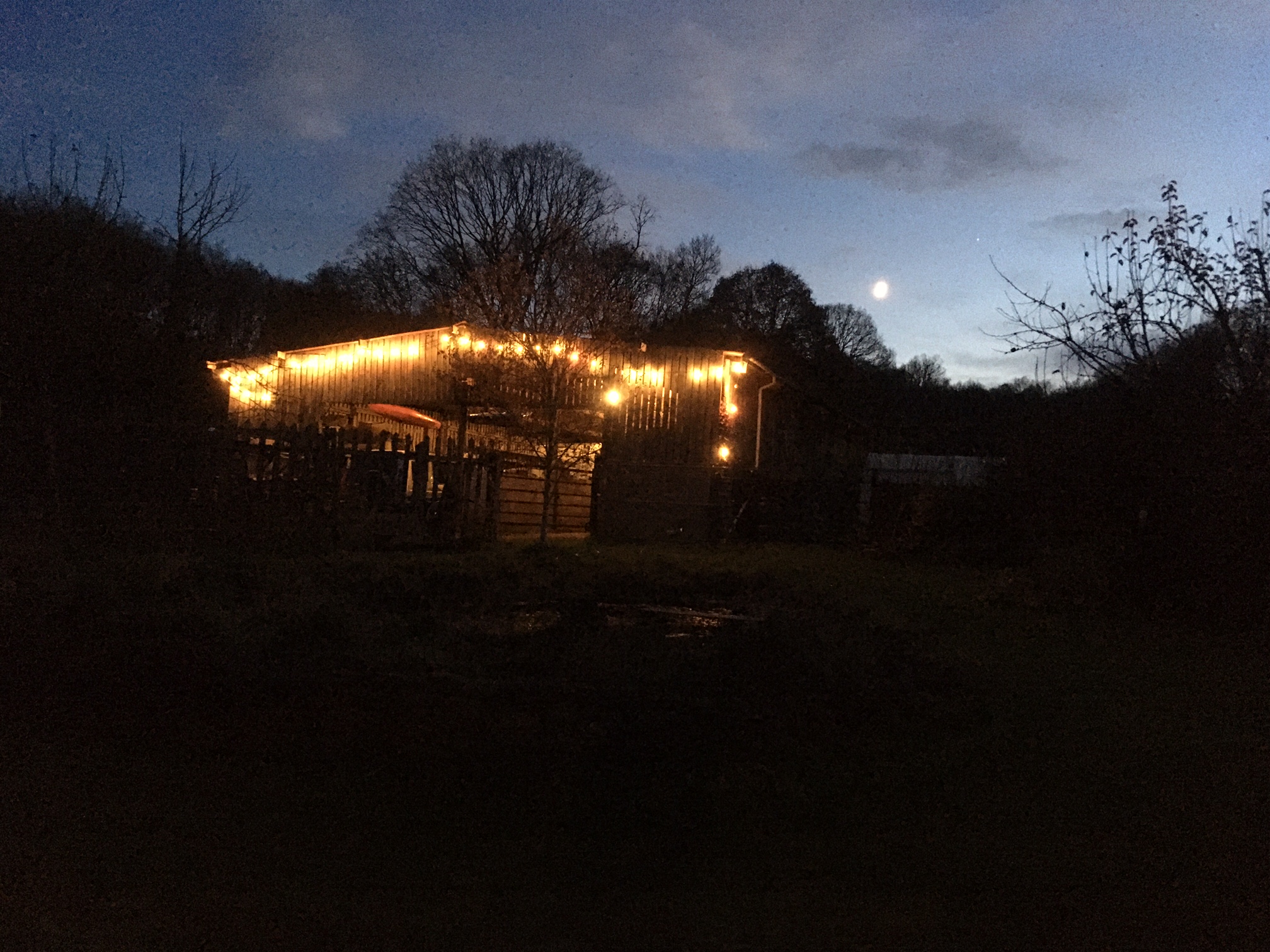
January in the Forest
Hurray for the lengthening days! You may not notice for a while but by 18th January we should have another hour of daylight. This month’s photo shows the barn at Uncllys displaying its twinkly lights while the moon rises on the southern horizon.
Now is the season of mud in the forest. Thinning has been going on in the area known as Lord’s Yard Coppice near the source of Bell Brook, and now that the harvester and forwarder (two huge and frighteningly efficient machines) have done their work, the vegetation of bramble, bilberry and other small plants can recover. The track will be repaired once the ground dries out sufficiently. Incidentally this area (Lord’s Yard and Shelf Held Coppices) is private land, which surprises many of its walking or cycling visitors. The ‘Right to roam’ doesn’t apply here except on public footpaths and the ‘Bewdley to Forest of Discovery Walk’, marked by butterfly symbols leading to the Forestry Commission’s visitor facilities at Callow Hill. Bridleways there are none – mountain bikers and horse riders please note!
The objective of management is to establish a regular thinning regime so that the remaining timber grows more strongly and also to allow the woodland to become lighter and richer in species. Just north of the current thinning operation are other areas which were thinned last year, and volunteers have been busy recently planting up the gaps with a variety of native shrubs and trees which will provide food and shelter for wildlife. Our forest, presently almost a monoculture of oak, will become more beautiful, full of life and better able to withstand both the onslaught of tree diseases reaching our land and the effects of climate change.
Three years ago the woodland between the farm and the cattle grid on Tanners Hill was thinned and fenced so that it could be grazed by cattle, producing a ‘wood pasture’- a habitat which will form a natural link between the orchards of Bowcastle and Uncllys and in which we hope that the rare Lesser Spotted Woodpecker will thrive. Already the vegetation is opening up thanks to two summer’s-worth of munching by the Dexter cattle, and the coverage of grasses and small herbs is extending. If you listen very carefully on your forest walks this month (and are very lucky) you may hear woodpeckers drumming on resounding branches as they begin to attract mates and demarcate their territories.
Happy New Year!
2020

December in the Forest
When we moved to Uncllys Farm 16 years ago we knew we were extremely fortunate, and every day reminds us of that. One result of the move was that we exchanged an urban existence in Bewdley for a rural one: we still have our friends and contacts in the town but our day to day interactions reflect the new location and land-based way of life.
Early on we were introduced as the new tenants of Uncllys to the Ruskin Land neighbours. These were the people whom we would rely on for helping us retrieve lost livestock and with whom we would appreciate our interdependence in times of heavy snow. In ‘the old days’ the post lady enlisted John’s help to collect the post from her at the end of the lane so that it could be delivered by tractor.
Next came the service providers and delivery drivers. The man from BT Openreach was about the only one who said he would hate to live “all the way out here” - most share our view that we are very lucky, even if some have had to struggle with being misdirected by their Satnavs! A local firewood supplier started us off with our plan to use short-term cycle carbon while the local gas cylinder sellers helped us out when we realised that we ‘could not live by wood alone’! (That first winter was jolly cold.) We got to know suppliers of animal feed, fencing wire, timber and stone and couldn’t have managed without the friendly advice of graziers who brought their sheep or sold us the Dexter cattle to start our herd.
And then there were the volunteers. We had both worked for the Conservation Volunteers and firmly believed in the value of involving people whose idea of fun is working on some agricultural or conservation task in the open air. At first there were friends, colleagues and folk with some time on their hands who helped with planting trees in the orchards, putting in gate posts etc. A church in Wolverhampton made many visits and were responsible, among other contributions, for building a small bridge (the ‘blokes’) and helping to make the pond (everyone, from children to grannies). When the Wyre Community Land Trust was formed it became the home of a volunteer group which has been indispensable in managing the meadows and orchards scattered round the forest and who have become firm friends over the years.
Even now we’re confined to our home turf I look forward to meeting walkers out on the forest paths, many of them equipped with binoculars and cameras and full of information about the wildlife that lives all about us.
A quieter life it may be but we cannot manage without all these people and I would like to say “Thank you” for what they’ve added to our lives as we come to the end of this very strange year.

November in the Forest
The shortening of the days and the colder temperatures seem to be harder to bear this year: maybe because we had such a long and warm summer and I am never satisfied! Of course, in this very strange pandemic year, the future months can look both limiting and threatening. The oncoming winter season need not be gloomy though, it just needs more determination to get out of doors and more imagination to find projects and hobbies (devalued word!) to satisfy our need to create and accomplish.
This time of year is ideal for collecting natural treasures from our forays outside. The last of the autumn leaves are still on the trees or underfoot, still crisp and dry. I can’t resist them, and take them home to press under heavy books between sheets of absorbent paper. They can be mounted to make pictures or used to create greetings cards, or if you have access to a laminator there are many possibilities: mobiles, window decorations, table mats….
Evergreen trees begin to take prominence in the forest now. I generally have a preference for ‘the natives’ but the conifers introduced by the Forestry Commission when they purchased tracts of forest in the 1925 have their place too. The New Parks area of the Wyre is the well-known hub of visitor facilities and has plantations of Douglas Fir, European Larch, Corsican Pine, Scots Pine and Hemlock. All of these are cone bearers, cones being the seed-bearing structures of the tree. Their various shapes and sizes are a key constituent for Christmas wreaths and table decorations but even if you don’t intend to make any of those, take time to look at them – they are wonders of practical design! The seeds are tightly-enclosed in cold, wet weather but fall out (or get eaten) when the woody scales open in the dry.
There is a charming story attached to the cones of the Douglas Fir which, incidentally, helps me to identify the tree. It is attributed to the First Nations of the Pacific Northwest of America and varies slightly in its re-telling, but here goes!
A long time ago there was a great forest fire. The wild creatures ran to escape the flames but the mice were unable to run fast enough and asked the trees of the forest for help. The maple and red cedar were unable to help but the Douglas Fir told the mice to climb its tall, fire-resistant trunks and hide in its fir cones until the danger was past. The mice hid between the scales with only their back feet and tails sticking out, and if you look at a Douglas Fir cone you can still see them today!
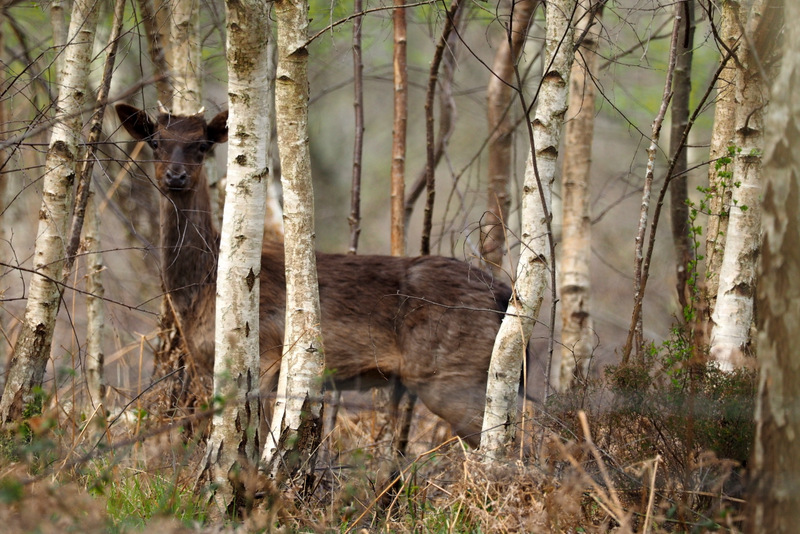
October in the Forest
When you are walking out in the forest do you ever get the feeling that you are being watched? The Fallow Deer are such experts at blending in to their background that it is almost impossible to see them before they see you. We often give ourselves away by the noise we make too – I’m usually saying something like, “We haven’t seen any deer around here for a while” just before I spot them! The photo shows a young male, a pricket, caught on camera by Mick Farmer among some birch trees, for which his dark winter coat provided poor camouflage. I’m not certain but he may be one of Wyre’s black deer which make up about 40% of the herd.
This month is the beginning of the rutting season, when mature males are far from quiet and elusive. The two sexes spend most of the year in separate herds but from late August rising levels of testosterone in the bucks cause a change of behaviour, and they return to traditional rutting grounds in the heart of the forest. They trample and urinate on the soil then lie down in it, presumably to enhance their appeal to the does, which are attracted by their loud, groaning calls. Rival males are seen off and challengers may be taken on in combat to win the right to mate with the assembled harem. Deer are very sensitive to disturbance at this important time and will often wait for nightfall to mate. In November the rutting season will have passed and the two sexes will separate again. The bucks will take some time to recover and need to build themselves up with high energy food such as acorns and beech mast: indeed some of the older bucks will die at this stage of the year.
Deer are frequent visitors to our farm – each morning shows their droppings scattered in the farmyard and the fields unprotected by deer fencing. One of the advantages of my erratic sleeping pattern is that I sometimes indulge in night-time or dawn forays into the garden, and on more than one occasion have heard munching coming from the other side of the fence. Fortunately the days when they could get inside the garden have gone. If you ask me for a list of garden plants that are ‘deer proof’ the answer is easy – I haven’t found one that they aren’t willing to try!
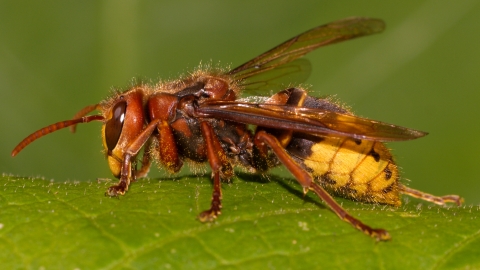
September in the Forest
‘Most people think I’m completely bonkers,
A grown woman stopping to pick up conkers’
I may not win any poetry prizes for that one. I love the sheen and rich colours of conkers and I suspect they’ll be ripening early this year. I’m glad to say that local children still seem to know the locations of good Horse Chestnut trees and I hope still know how to play ‘conkers’ (after writing their risk assessments). I also note the positions of Sweet Chestnuts in the forest and surrounding woodlands because I enjoy roast chestnuts. There are some on the Iron Age fort in Trimpley Woods – the rest you’ll have to find for yourselves!
The bilberries ripened in July, the blackberries and damsons in August and this month we can look forward to rowan berries, sloes, crab apples and perhaps any ripe hazelnuts that have escaped the squirrels. Apple trees are few and far between in the Wyre Forest and most will be ‘wildings’ which have grown from discarded pips (an interesting connection with travellers of the past). They may have a wide variety of characteristics, while the true wild crab apple, Malus sylvestris, is a round-headed tree often with rather spiny twigs and small, tart green fruits. The latter are so rich in pectin that a few added to a fruit jam will ensure a good set.
Apples and other top fruits are enjoyed by a host of wildlife, especially birds such as Blackbirds, Missel Thrushes and Jays. When they start to rot (perhaps after a peck from one of these) they attract wasps, flies and butterflies. Hornets are amongst those enjoying the feast, and are a very good reason to be careful when apple-picking! Although they are huge (up to 3.5cm long) and intimidating-looking, I admire them. They sometimes find their way into the house and I can usually usher them out without any trouble. (The exception was when they built a nest in one of our fireplaces, but that’s another story!) Their natural homes are holes in trees and so it’s not surprising that they may choose to build in bird boxes or spaces in house walls. Their food consists of nectar, sap and fruit but they catch many invertebrates to feed to their larvae. Unlike the Asian Hornet, which preys on honey bees and other insects, they are almost wholly beneficial – a true friend to gardeners.
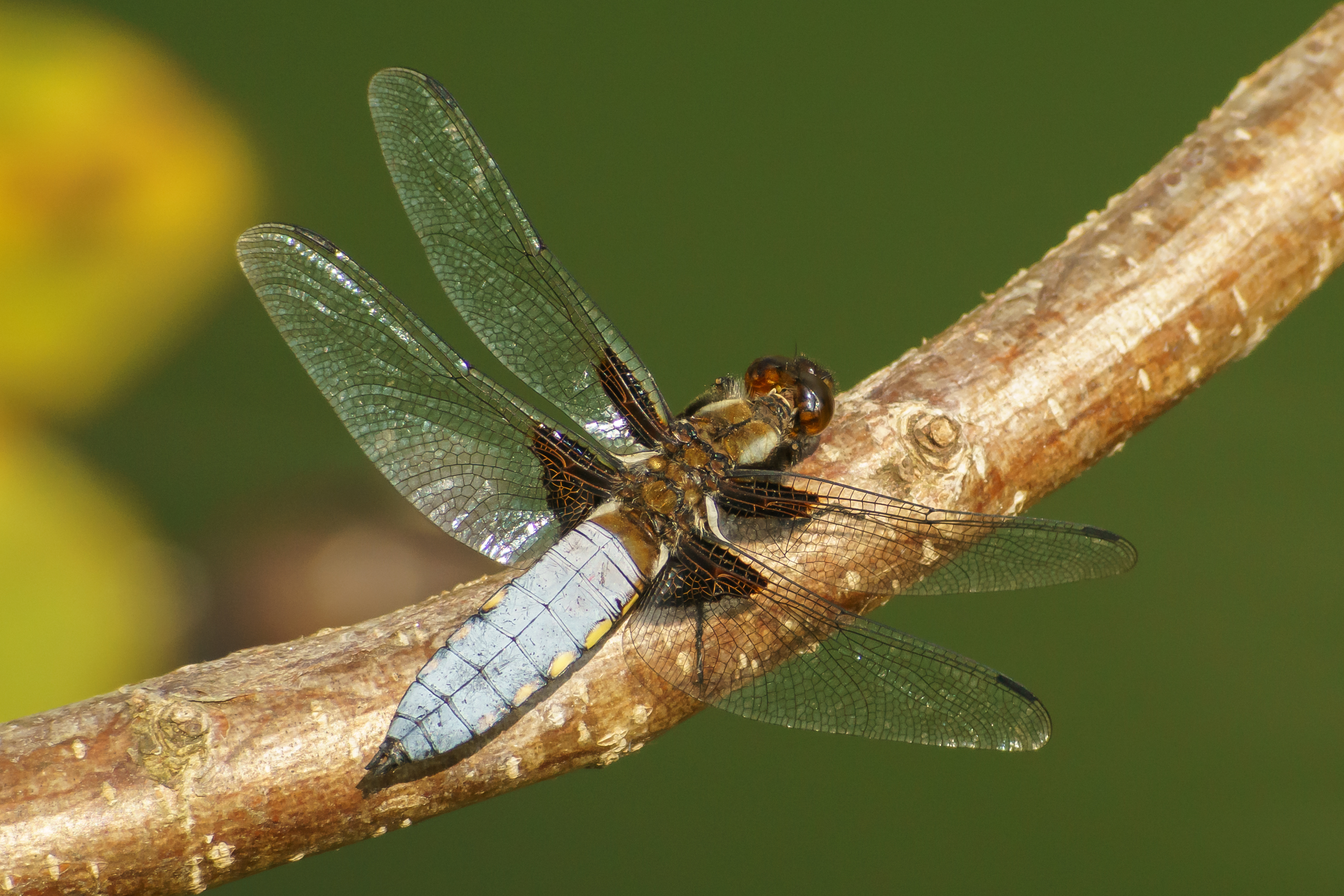
Photo by Nigel Stone
August in the Forest
On sunny days recently I have enjoyed watching the dragonflies darting over the pond.
There are two species that visit to hunt smaller flying prey and court their mates. The Broad-bodied libellula is the most frequent: the male with a broad blue abdomen, the female brown. I see the males more often, or maybe I should say ‘male’ as there will only be one in residence at one time and it will make sure it sees off any competitors. I accommodate it by offering a couple of twigs as perches at the edge of the pond – from these it can make its occasional sallies across the water. The female is brown and therefore less conspicuous to predators but her arrival will bring the male immediately to join her in flight. During mating (usually on a handy lily leaf) the male grasps the female with his tail just behind her head, and they will often fly off joined in that way while the female dips her tail in the water to lay her eggs on plants.
The larger and faster Southern Hawker dragonfly is often a slightly later arrival but one which one can’t fail to notice. It charges up and down the pond with wings going full tilt, and if another male or another species is around there will be an aerial altercation. If no female appears it will leave to try its luck at another woodland pool.
The nymphs that soon hatch from their eggs are initially quite tiny but they have a reputation as one of the fiercest hunters in the aquatic environment. They start with microscopic prey such as water fleas (Daphnia) and Cyclops and work their way up, stalking the unfortunate creatures then spearing them with a modified lower lip that shoots out from under their heads. After two or more years of this underwater tyranny they are ready to metamorphose into an adult: the nymph climbs the stem of an aquatic plant and once in the air the adult emerges through the split skin of the thorax. It then stays nearby for several hours while its wings extend and harden, enabling it to fly away leaving the empty skin of the nymph still clinging to the plant. This process sees it at its most vulnerable: one summer there was a canny Jay that staked out the ponds at the Forestry Commission’s Discovery Centre and caught all the adult dragonflies as they emerged. A scattering of large insect wings was all that was left.

July in the Forest
This is a great time of year for a dusk walk. It was always a popular event in the days when I was part of the team at the Forestry Commission’s Discovery Centre and two evening walks were organised to satisfy demand. I was reminded of this recently when I headed out of doors after 10 o’clock one evening to check whether I’d shut the greenhouse door and the deer-proof gates into the garden – an essential operation to prevent the destruction of my gardening efforts by our largest wild herbivores!
On that occasion my attention was caught unavoidably by the loud and strange noises coming from the nearby oaks. My best guess was that they were made by an owl, probably a young Tawny Owl. The source of the sounds started to move away from the house up the edge of the field and, as I followed, a second individual started to answer the first. They moved away into the trees of Lord’s Yard Coppice, still staying in touch vocally. (The species has a range of old names with many variations on ‘hoolet’ and ‘ullet’ but I particularly like the Shropshire name ‘gilly hooter’)
Then my torch picked up the reflection from the eyes of a Fallow doe which had been grazing in the field but which set off with a relaxed springing run when I continued towards it. It jumped the fence with ease and I went to check that our one and only orchid (a Common Spotted) hadn’t contributed to its supper.
Having checked the gates I returned to the house and paused to watch the bats circling the eaves, hunting their flying insect prey by echolocation. As well as the tiny Pipistrelles (Common or Soprano – I didn’t have a detector with me so couldn’t distinguish them by the frequency of their squeaks) there were larger bats: probably Long-eared Bats as shown in the photo. Their ears are almost as long as their bodies and are curled back or tucked under their wings when they are at rest. I’ve learnt from wildlifetrusts.org that ‘as well as hunting airborne insects, brown long-eared bats also fly slowly through foliage, picking insects directly from leaves; they eat large prey on perches, rather than in flight’. Anyway, we’re very pleased that they make their homes in our house, barns and old trees.
I stepped back into the brightly-lit house and left the nocturnal goings-on of the garden and woods – a mysterious world which we hardly ever appreciate or acknowledge.
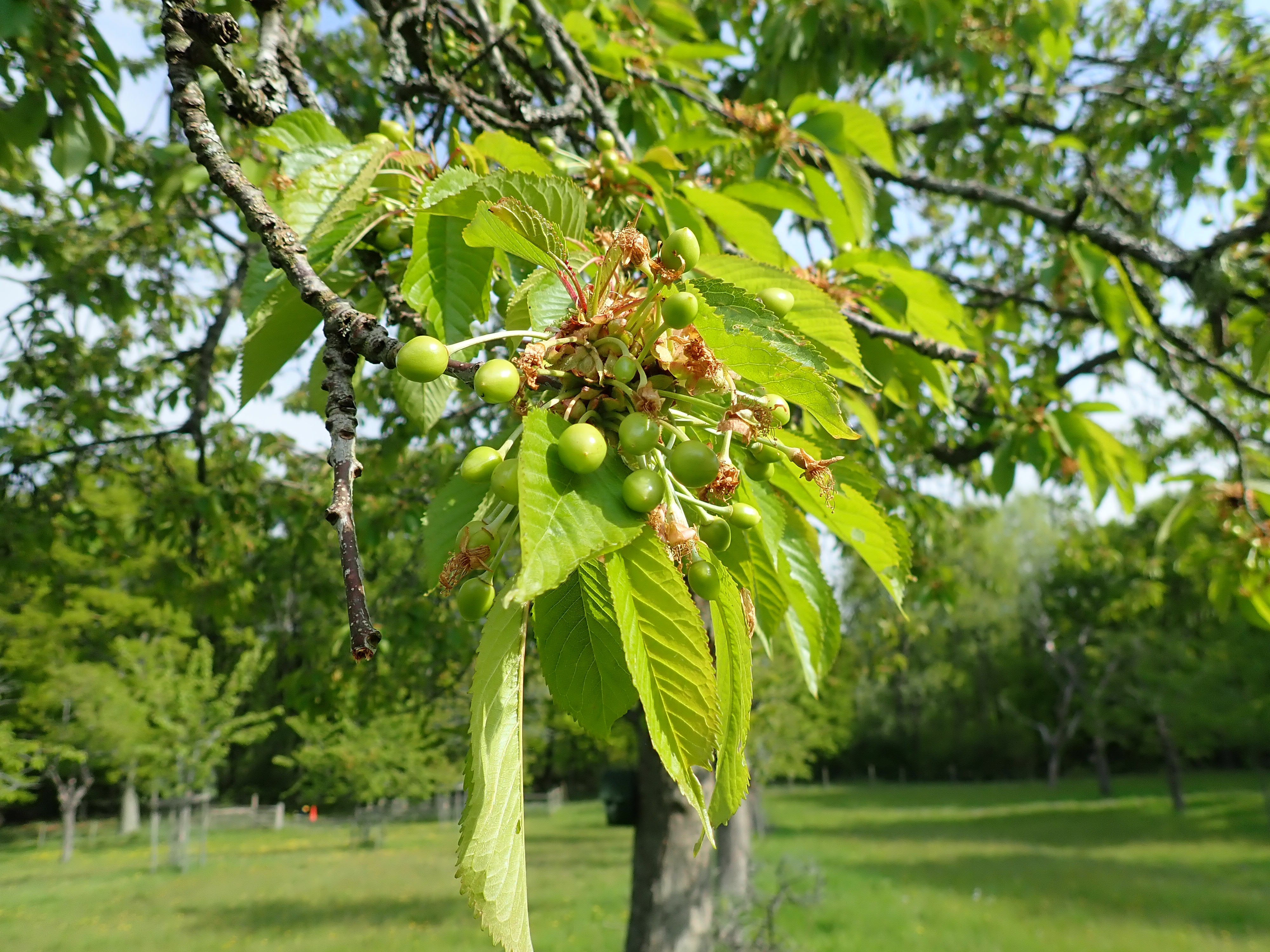
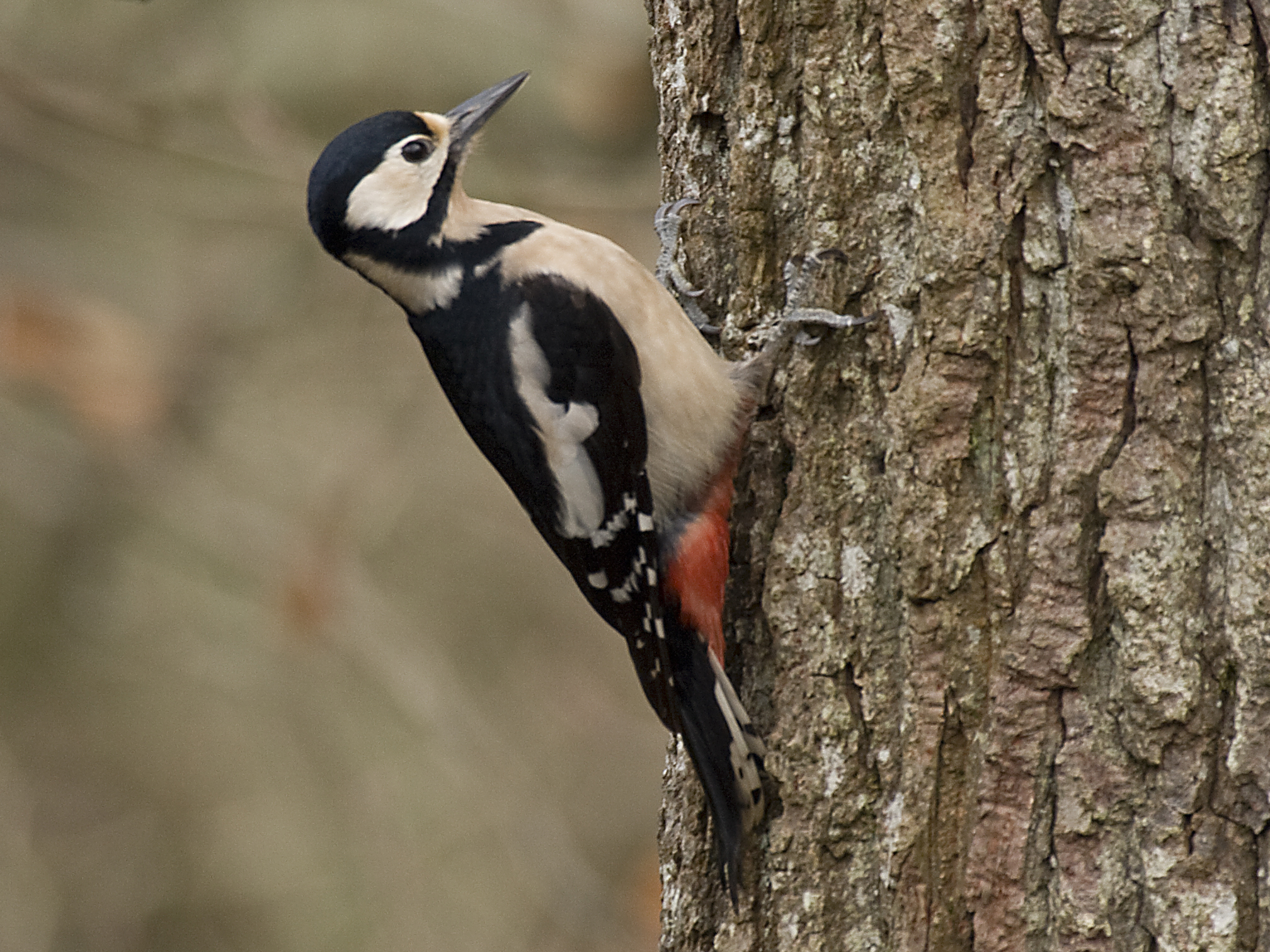
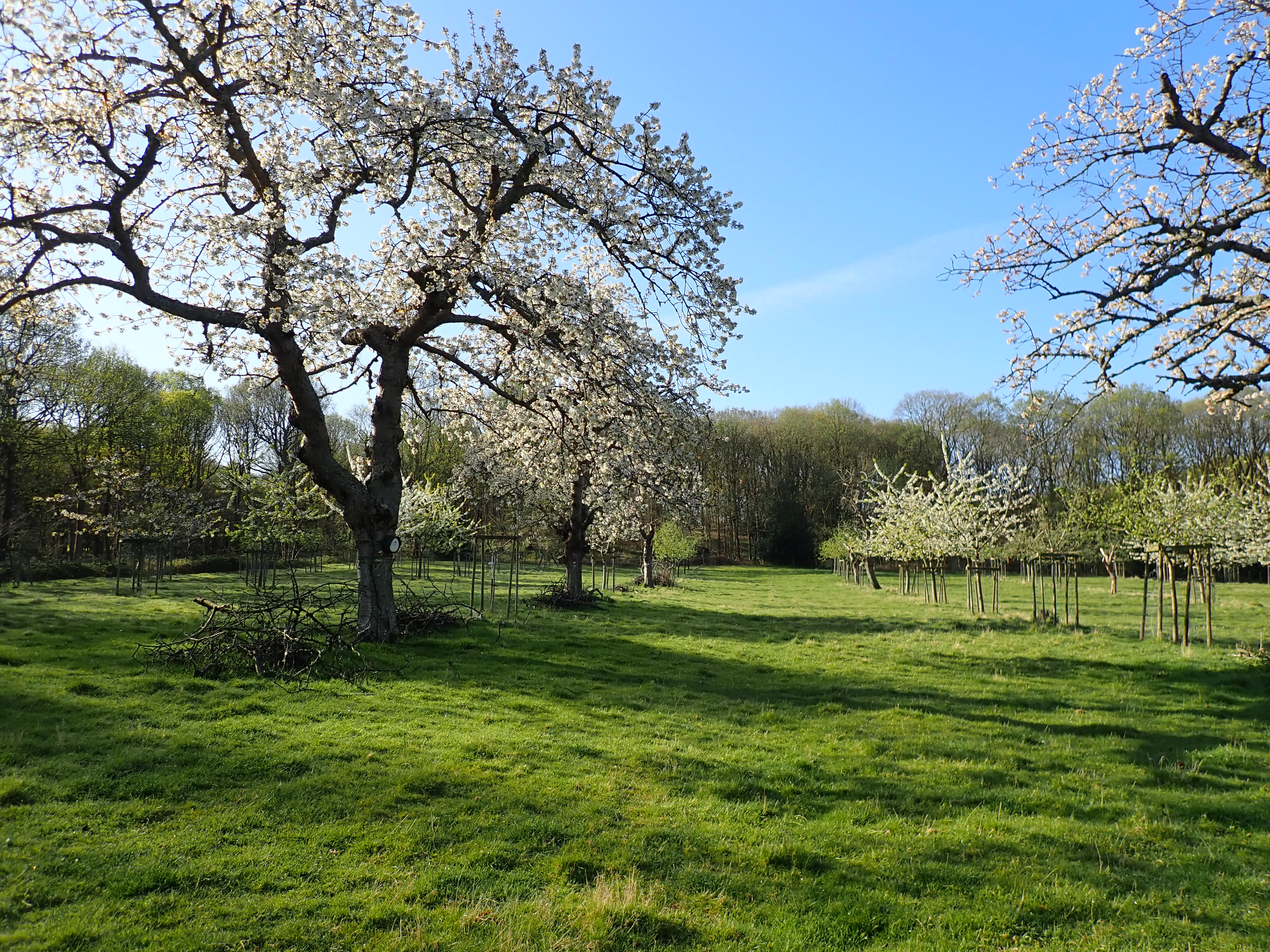
June in the Forest
In recent weeks I’ve been taking regular walks in the forest, although not beyond a pretty small radius. One of the benefits is that I really notice the little details and the changes in the forest from one week to the next. The luminous leaves of the spring have darkened to a deeper green, the foliage giving cover to the Fallow Deer and reducing the sunlight to the ground-hugging plants.
I’m watching the little Bilberry bushes which, like almost everything else, flowered generously this spring, developing their purple fruits and noting the most promising clumps for picking in August. Could this be the year for a bilberry pie? Still on the fruit theme, we’re keeping an eye on the cherry orchard and have high hopes that next month may yield a crop for us to enjoy and even share. The blossom in April was a sight to behold and even the surviving centenarian trees set fruit to some extent. It all depends whether the Wood Pigeons and Mistle Thrushes leave any for us.
The tadpoles in the reservoir are growing their legs and form black shoals near the surface. Any day now the edges will be teeming with baby toads leaving the waters of their birth to take their chance in the wider world of the woods. Toads are much more tolerant of dry conditions than frogs and can make a good living eating slugs, worms, spiders, ants and other insects. They sometimes take up residence in gardens: what with fat adult toads lurking unexpectedly under stones or logs in the garden and tiny baby toads finding their way into piles of weeds waiting for the bonfire, my interactions with them have not always been happy.
The sounds of the forest develop too as the season progresses. We’ve lost the Cuckoo and the Garden Warbler is silent now, but the squeals of the Swallows ring out around the barns. Nesting sites are sometimes revealed by the squeaks of the nestlings when we pass close by and there is no doubt where the Greater Spotted Woodpeckers have built their nest in a dead cherry tree. The Green Woodpeckers may be nesting somewhere nearby too: we often see the adults picking up ants from the track or fields, and their loud laughing cry is the origin of their other name of Yaffle.

May in the Forest
The sun is shining, the apple blossom is out and I’ve seen 3 Slow Worms enjoying the heat under one of our pieces of corrugated iron down the track. I love May: it is spring and summer, with the freshness of one and the heat of the other. May takes the accelerating growth, warmth and day length of April and leaves it with a full complement of summer bird visitors joining the rest of our wildlife in the serious business of breeding. (By the way, the ‘mystery bird’ which delighted me with its trilling song all around our garden turned out not to be a rare summer visitor but a common Wren, singing its heart out in the effort to retain its territory and mate/mates).
This month is spectacularly marked by the arrival of Bluebells. They are predominantly woodland flowers and look delightful under a canopy of newly unfurled, bright green leaves of oak, beech or other deciduous trees. They have to flower, seed and replenish the energy stores of their bulbs before the shade becomes too dense. Consequently they won’t be found under evergreens, whether conifer, holly or yew, which never allow enough sunlight to reach the ground. They may enjoy a sunnier spot for a while after an area of forest has been cleared, as long as the woodland soil with its store of native plants is still there and the micro-climate remains sufficiently damp. They reproduce both by seed and multiplication of their bulbs. One of our regular magazines often carries an advertisement aimed at landowners which promises ‘excellent prices to thin out specified areas (of wild woodland plants) – very little disturbance caused’. I’m sure this can be done in a sustainable way, allowing the plants to replenish themselves, but I can’t help feeling concerned. The Wildlife and Countryside Act of 1981 made it illegal to uproot any wild plant without the landowner’s permission, but there is a great demand for wild flowers in gardens and amenity planting which may tempt woodland owners to let the diggers in. I hope you’ll enjoy the photo of Bluebells in the Wyre Forest (near Beaucastle in this case – thankyou Mick Farmer) and be able to experience the sight and smell of the flowers in a bluebell wood near you without disturbing them.
The Wild Garlic or Ramsons also burst into flower in lush, damp areas of woodland this month. The plant’s smell makes it easy to identify and it has become popular with foragers: picking the leaves in small quantities before the flowers open can give a delicious salad, wilted greens or pesto. But beware – the plant is poisonous to dogs and cats!
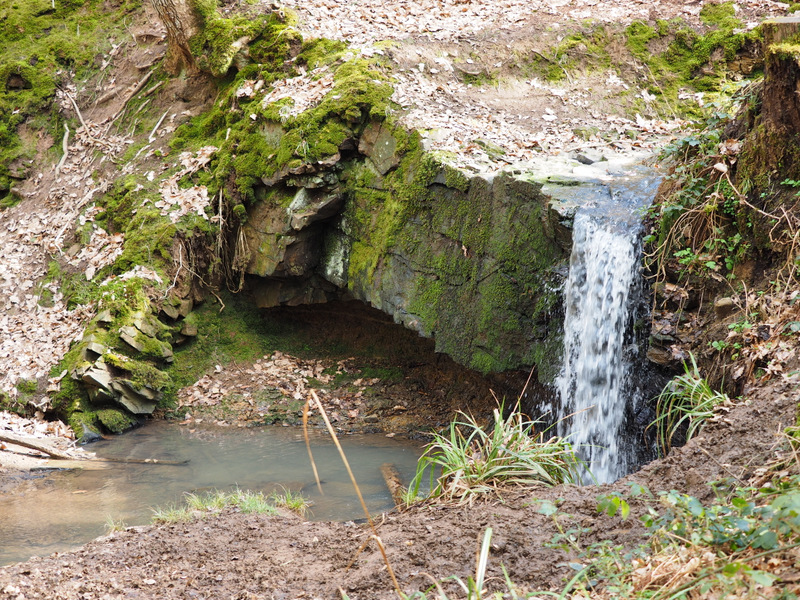
March in the Forest
The Wyre Forest is drained from west to east by the Dowles Brook, which in turn is fed by its smaller tributaries such as Bell Brook, running from its source near the A456 northwards through Uncllys Farm then on down a delightful little valley. (The photograph by Mick Farmer shows the waterfall on the brook.) Dotted around the nearby forest are freshwater pools sitting on impermeable clay and draining into the nearest downhill watercourse. Recently I have written about the ‘Slow the Flow’ scheme which delays the water in these upper catchments from joining the Dowles and Severn to help avoid destructive flooding.
I am one of the volunteers who wander the forest from February to April making note of the amount of frogspawn in these large and small pools. I was recruited to the team by Rosemary Winnall of the Wyre Forest Study Group, present organisers of the survey which began in 1988 under the auspices of the Nature Conservancy Council. Long term studies of this kind are extremely valuable, especially in view of likely climate change. The frogs are, in general, breeding successfully but we do notice that the pools gradually change over time, responding to local conditions, and can become less attractive to frogs and their tadpoles. To help this situation some of the ponds on Forestry Commission and Natural England (i.e. public) land will be managed by cutting back vegetation around their edges and also taking out some excess water plants. The wildlife in each pool will be monitored to see if these actions have the desired effect. As I am the kind of person who enjoys getting wet and muddy (but not cold) I hope I’ll be able to lend a hand with the work later in the year when the water warms up!
The other survey in which I will be involved this month is the deer census. On a couple of consecutive Saturdays about 30 volunteers will arrive in their allocated sections of forest before dawn and will comb the woodland noting any deer they encounter. The majority will be Fallow Deer but the little Muntjacss have shown a steady increase in numbers, to the annoyance of foresters whose young trees they like to chew. They are the size of a dog and bark like one too, and breed all year round unlike the Fallow does who produce a single fawn in June. At the collection point our survey results are rewarded with a hot cup of tea and a bacon sandwich. The privilege of experiencing a spring dawn in one of the best woodlands in England may only occur to me once I’ve enjoyed a hot bath at home.
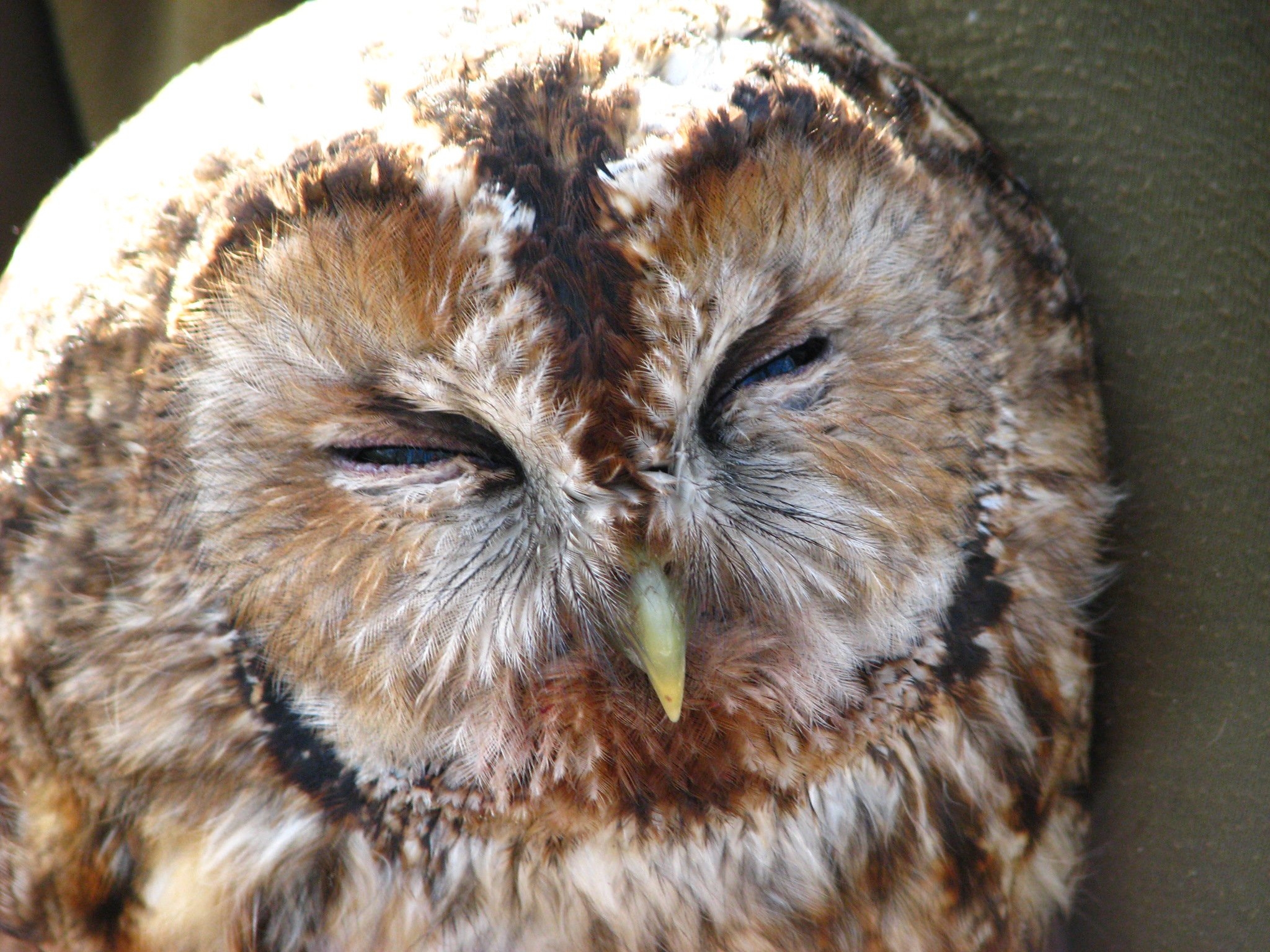
February in the Forest
Spring has come! Well, let’s say that by mid-January there were plenty of signs that our wildlife was behaving as if the time had come to burst its buds, flower, mate or whatever seemed appropriate for spring. There were snowdrops and primroses in my garden, hazel catkins opening along the hedgerow and birds calling excitedly everywhere.
For several weeks now Tawny Owls have been hooting loudly nearby. The hoot is the true song of the bird but the female often answers with the sharp, ascending ‘whit-whit’ contact call. (The British Trust for Ornithology’s website has a ‘Learn about Owls’ page which, helpfully, has recordings of all the British owls.) They will already be nesting and may have eggs by the end of the month. Their natural nest site is a hollow tree but they will readily use a nest box with a large entrance hole (150mm or wider), at least 2.5 m high and with a clear flight path. A piece of dowel or branch attached to the side of the box makes a helpful perch for adults and fledgling young. Once the eggs are laid they are incubated one at a time, with food supply determining how many are hatched. One of my sources mentions grey squirrels as one of their foods but I feel this is wishful thinking: voles, shrews, worms and small birds are more likely to form the bulk of their diet.
Mandarin ducks, which don’t even feature in our older books on British birds, have established themselves firmly on the River Severn, Dowles Brook, Trimpley Reservoir and smaller pools in the forest. Like Tawny Owls they nest in tree holes but not so early in the year. Some years ago a pair chose to nest in an old, hollow apple tree at Uncllys but the eggs were abandoned. The nest was so deep that I would imagine the ducklings would have found it extremely difficult to exit safely. At this time of the year a pair of Mandarins make their presence felt by circling over the farm at dusk on their way to the reservoir, flying rapidly and making shrill, squeaking calls.
The aforementioned BTO website will also tell you how you can take part in their Nest Box Challenge. Volunteers are asked to monitor the birds in their garden through the breeding season and the data gathered will give important information on the status of our native birds and the success of our efforts to help them. So get those nest boxes cleaned out now to be ready for the real spring!
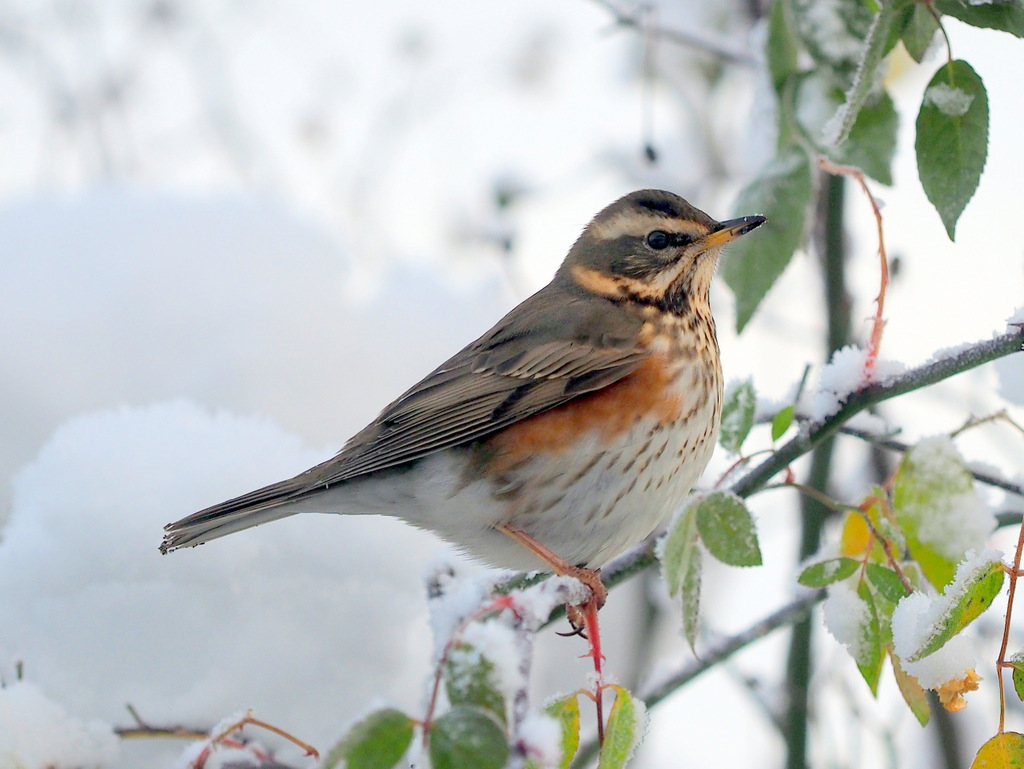
Photograph by Mick Farmer
January in the Forest
Janus, the Roman god of the New Year, looked both forward and backward, ushering in the new and closing the door to the old. We all step through the door into 2020 and another year in the forest starts to unfold.
The more you look, the more you see, and winter is not so ‘dead’ as you might think. Look out for leaf buds swelling on Honeysuckle stems, early Hazel catkins and new shoots of Dog’s Mercury. Grey squirrels are still active in all but the harshest weather and bats break hibernation to fly out hunting if nights are mild.
There may still be enough berries on holly, hawthorn and rose to attract pigeons and various members of the thrush family (Blackbirds, Redwings, Fieldfares, Song and Mistle Thrushes). The Redwing was photographed by Mick Farmer in a Bewdley garden, and places like this are often a better source of food for wildlife than field hedgerows or woods. You may have the privilege of being visited by a flock of Redwings feeding or arriving at dusk to roost in thick cover. Their soft calls have earned them the local name of wind thrush or whin thrush. Their summer quarters are generally in Scandinavia but some are now breeding in northern Scotland.
The days are slow to lengthen and I like to spend some of the dark evenings planning my garden, making changes in the design and planting. Most gardens can offer enough space for at least one small tree and care in choosing will benefit you and our wildlife. A wide variety of hawthorn, birch and Sorbus are available. The native Rowan or Mountain Ash, Sorbus aucuparia, is a small, elegant tree which has creamy-white flowers in spring and brightens the autumn with prolific red berries and red or orange leaf tints. A valuable constituent in our ancient woodland, it is a good tree for gardens, offering welcome light shade in the summer but allowing the weaker winter sunshine to penetrate. Trees such as Hazel and Dogwood can be coppiced when they get too large for the site, and in order to avoid a drastic cut a few stems could be cut to ground level each year. Small pieces can be brought into the house and kept for a week or two in a vase so that you can watch them respond to the warmth. Your garden could also be brought to life by introducing nectar-bearing flowers such as Primroses, Wood Anemones and violets which are also found in the Wyre Forest. Seed merchants offer many British-raised wildflowers, but stalwarts such as the White and Red Dead Nettle are likely to appear unbidden and can offer an early season snack to hungry bumble bees.
2019
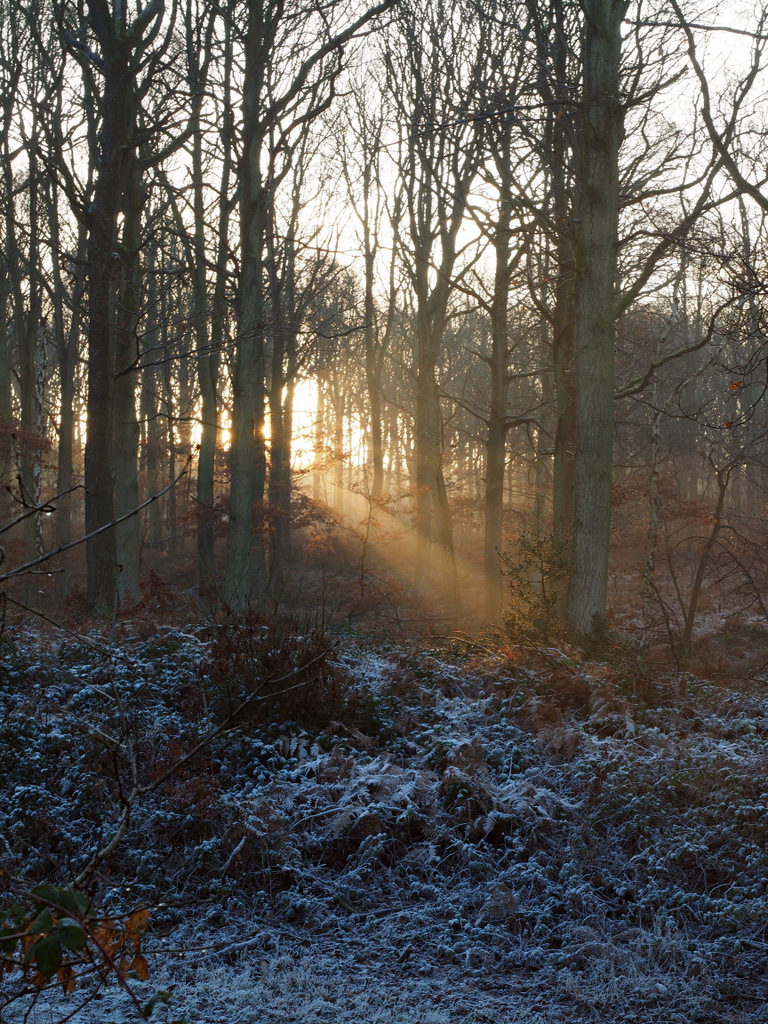
Photograph by Mick Farmer
December in the Forest
Our native Corvids (Magpies, Crows, Rooks, Jays and Ravens) are very intelligent birds but they are a noisy lot. The colourful Jays have been busy eating and burying acorns ‘while stocks last’ and set off with an affronted shriek if I disturb them. We see Crows and Magpies too, far too many of the latter for my liking, but it is the Raven that gives me a thrill when I hear its grating call, usually high above the woods or fields as it flies over its territory hunting for pigeons or other birds and small mammals. In these circumstances it is hard to guage its size but sometimes other birds will mob it, trying to send it away, and then I can compare them. With a wingspan of up to 150cm they can be larger than Buzzards, whose call is more musical (if that is the right word) but just as haunting.
The forest seems emptier now that the leaves are nearly all off the trees. It still offers some protection from the weather and you will feel warmer there than in the surrounding open landscape. Fallen leaves carpet the ground and are especially thick where they have drifted in the wind. This is where you will find concentrations of the little leaf eaters such as worms, slugs and millipedes, and the decomposers (eg fungi, bacteria and protozoa), all busy despite the winter. In ‘The Woodland Trust Book of British Woodlands’ Michael Allaby writes that only 1% of the total volume of leaves is eaten on the trees – the rest provide energy for all these organisms which live in and just above the soil, recycling each year’s leaf fall so that the nutrients can journey through the soil and air to supply living plants and animals again. Dead wood is also broken down but it takes longer. It resists digestion by most creatures but this is where the fungi play a major part: like animals they secrete digestive enzymes which can break down complex molecules, including cellulose and lignin in wood, into simpler ones which are then absorbed. The fruiting bodies of fungi, mushrooms and toadstools, usually show signs of being nibbled: a fleeting food source for slugs and larger animals.
Talking of larger animals, most of them are out and about during winter months, with only dormice, hedgehogs and bats really hibernating. Dawn only arrives after 8am this month, so that is a good time for a quiet walk to enjoy beautiful effects such as that captured in this photo by Mick Farmer, or perhaps to spot Fallow Deer before they spot you. On Christmas Day the sun will rise at 8.17am, giving a day lasting 7 hours 47 minutes before sunset at 4pm. Make the most of it!
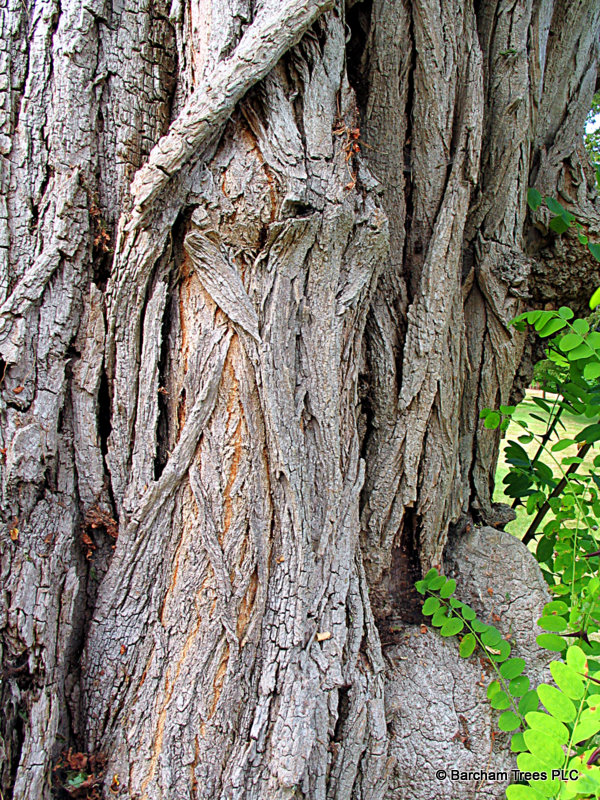
November in the Forest
On a woodland walk recently we followed an avenue through Shelf Held Coppice towards Ruskinland. (As far as I know the origins of the name of ‘Shelf Held Coppice’ are lost, but if you know anything about that or other colourful names for parts of the Wyre Forest please let me know!) Cedric Quayle has told me that the avenue was well-established by the time his Uncle moved to Uncllys in 1914, and was probably planted by George Baker of Beaucastle to link up to a halt on the Tenbury and Bewdley Railway (now disused, with no sign of the halt) so it is now about 140 years old. Where it survives, the avenue is made up of conifers but here and there it contains False Acacia trees (Robinia pseudoacacia) some of which can also be seen along the track continuing from the cattle grid on Tanners Hill.
Cedric remembers that the trees were planted to supply wood for making rungs for the tall ladders used to pick cherries in the local orchards. I decided to find out a little more about this unusual forest introduction and was soon up to my ears in fascinating facts! The tree’s other name is Black Locust. ‘Aha!’ I hear some of you say, as locust crops up in American literature and, to quote Wikipedia, ‘ As a young man, Abraham Lincoln spent much of his time splitting rails and fence posts from black locust logs’ The specimen at Kew is one of the oldest in the gardens, perhaps dating from their original establishment in 1759, but it did not become widespread in this country until the 1820s thanks to the commercial efforts of William Cobbett, who owned locust nurseries in its native eastern USA. He was convinced of the wonderful properties of its wood, which is hard, straight-grained and very resistant to rot. Cobbett overestimated the strength of the timber in larger scale sections, where oak is far superior, but it is true that it is the closest to a tropical timber which can be grown here in the UK. Over a million were sold, bringing Cobbett a considerable income and leaving specimens in parks and gardens all over the country.
The Wyre Forest trees will never be cut to make ladders but their easily-recognisable, deeply-ridged trunks hold up a light canopy of attractive composite leaves and in June lovely, hanging clusters of white flowers decorate and perfume the woods. The bark, leaves and wood of the tree are poisonous but in some parts of the world the flowers are eaten and other parts are used in traditional medicines. It makes good firewood and grows back quickly after being coppiced. I should mention, though, that it can spread by means of suckers and become an invasive nuisance.
Coming back to the present season, the rut of the Fallow Deer will soon be over and the forest will take on its winter quietness. This is a month to enjoy the last of the autumn leaves and colourful fungi.
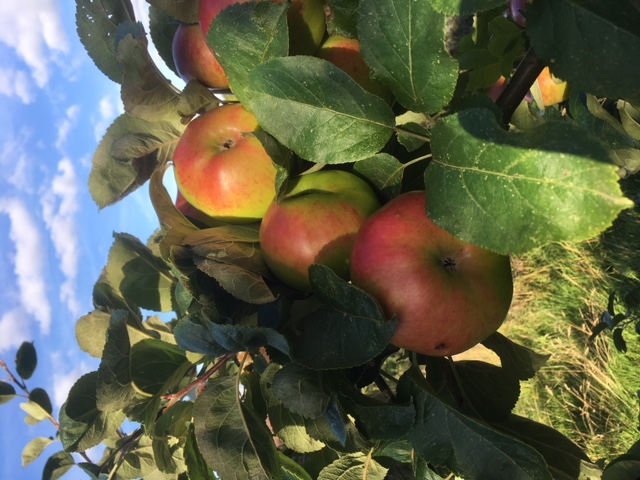
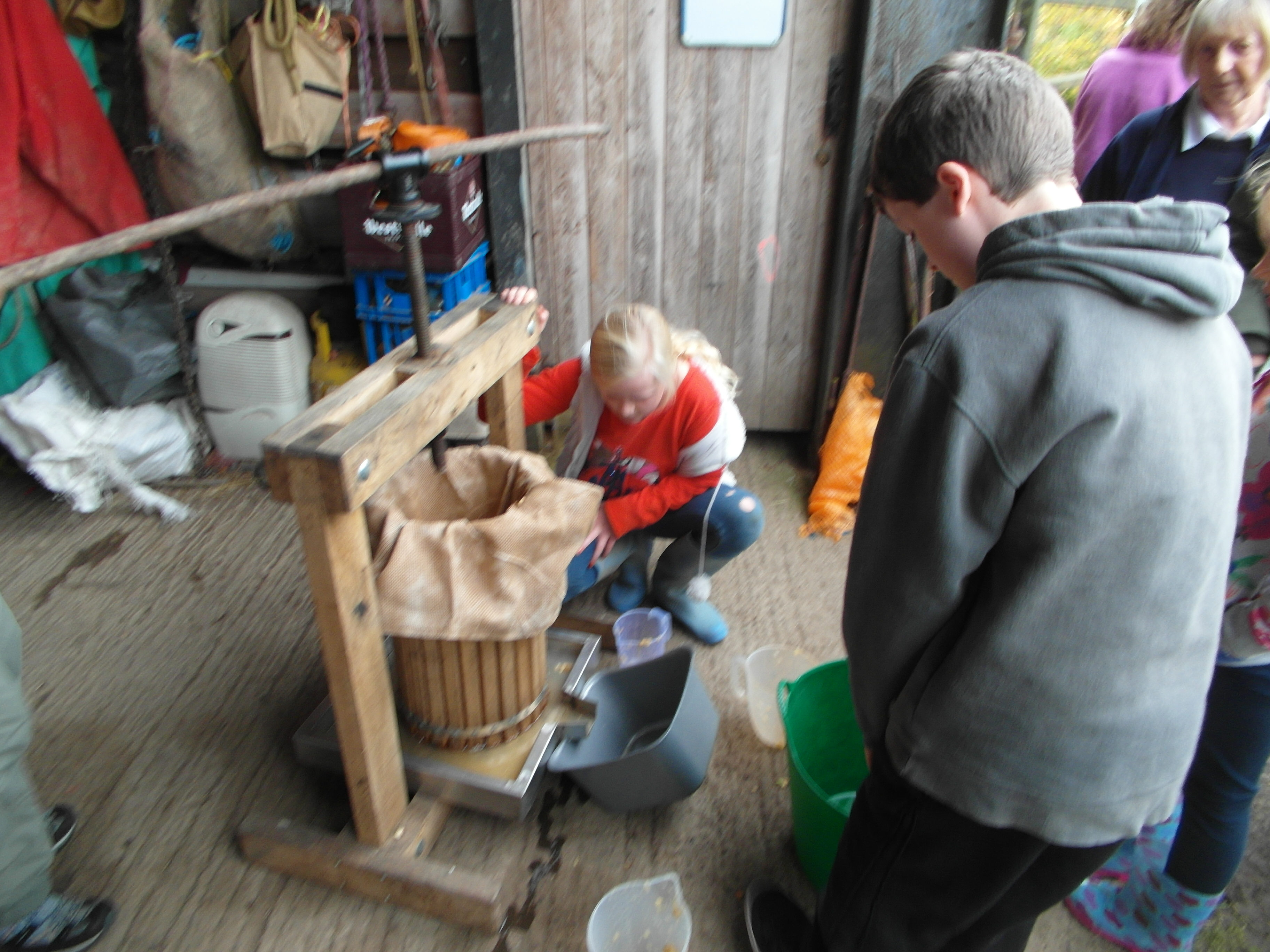
October in the Forest
Autumn sees the culmination of all the work we have put into the apple trees in our orchards over the years. The planting and formative pruning of the new trees, protection from large herbivores (sheep, cattle and deer), subsequent pruning, not to mention watering in times of drought and helpful feeding with potash from the wood stove amount to a good many ‘person hours’. What is it all for? The obvious answer is a crop of lovely apples to eat, cook and eat, make into juice and attempt to make into cider. Despite all our efforts, however, the outcome is a very chancy business. This year is a case in point – there was a very mild winter which allowed many pest species to survive in large numbers, then the spring blossom was hit by late frosts. Some of our trees just look horrible, with diseased and sparse foliage and small, blighted fruit. The Scotch Bridgets, which have served us so well for years, have hardly any apples on them. Others look fine, having escaped both frosts and pests, while some are so laden that their branches are bending down to the ground and in some cases have torn off.
We have been harvesting apples for several weeks now. The earliest ‘eaters’: the Bardseys, Red Falstaff and little Pitmaston Pineapples have virtually all gone and the remaining big Captain Toms, which can be eaten raw or cooked to make a lovely apple puree, are beginning to go soft. Buckets-full of windfalls have gone to the cattle at St George’s Farm where they were greeted with great enthusiasm. Now the later varieties: the Worcester Pearmains, Bramleys, Ribston Pippins, Orleans Reinettes and Herefordshire Russets are being gathered. Crates of fruit are going to Blackstone Farm to be juiced, pasteurised and bottled for us in a blend governed by chance!
Most people seem to enjoy participating in some smaller-scale juicing on the farm. There’s plenty of action and opportunities to help with loading the ‘scratter’, which minces the fruit into a sloppy pulp, shovelling the pulp or ‘pomace’ into the cloths to make the ‘cheeses’, and turning the screw on the press to extract the juice. The process even has its own vocabulary! Even sceptical, fruit-shy children are surprised and delighted by the delicious results.
It’s not only people who enjoy the fruits of the season. Flies, wasps and hornets are feeding on apples still on the trees and well as bruised or squashy windfalls. Butterflies are also attracted to the sugary fruits: in fact I was picking plums last month with friends amongst a flurry of Red Admirals. With about 150 fruit trees at Uncllys there’s plenty for everyone!
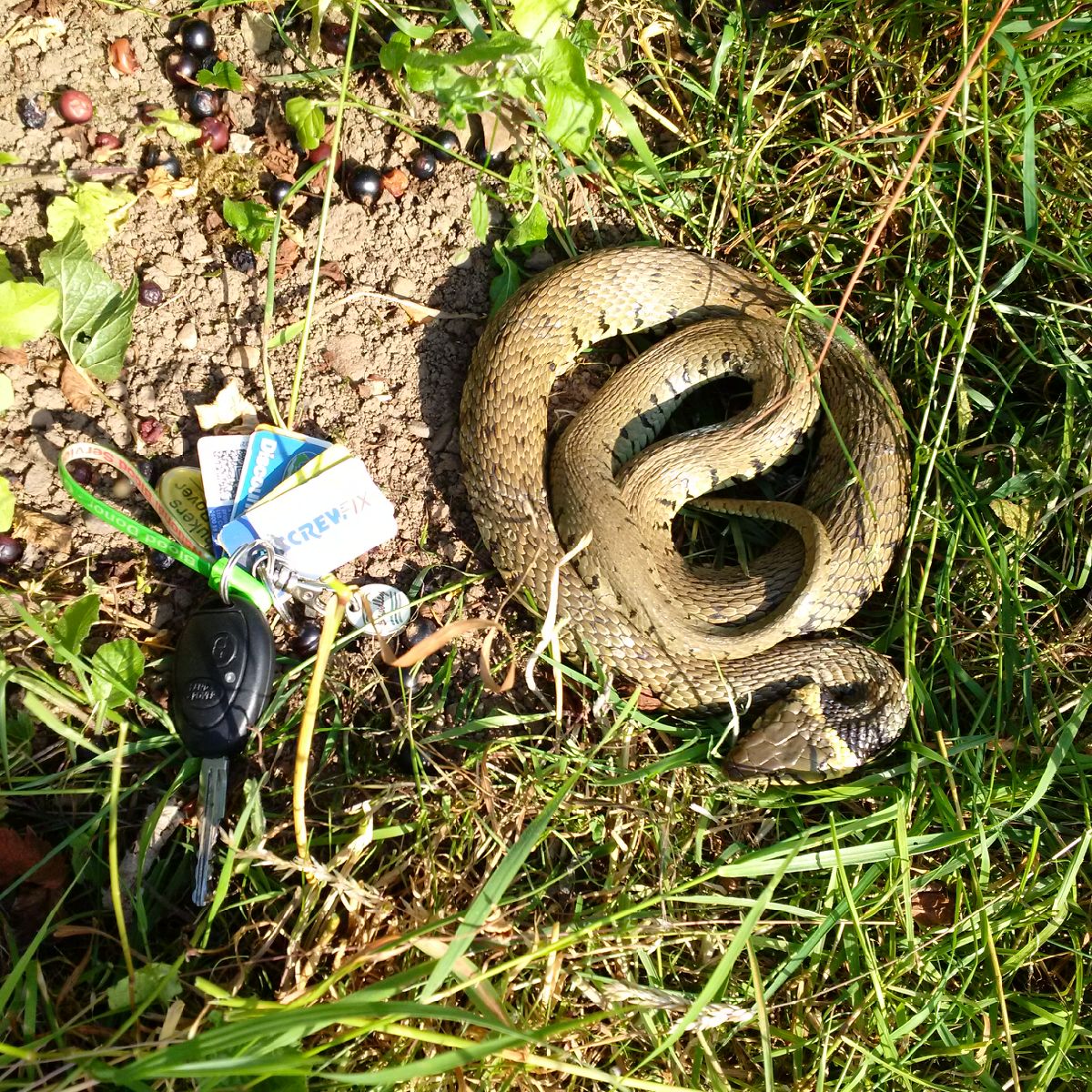
September in the Forest
I thought you might like to see my photo of this rather large snake found tangled in netting in a friend’s garden recently. I was called for advice and hurried along, hoping or fearing to find an Adder, which I still haven’t seen in the Wyre Forest. The yellow collar and sheer size gave it away as a Grass Snake (probably a female), harmless but still formidable, especially when hissing and emitting a powerful stink in its defence. It was estimated at about 3 feet long, so well short of the record 6 feet according to Stefan Buczacki’s ‘Fauna Britannica’. It was eventually cut free and soon disappeared, unharmed.
The singing of the Robin heralds the start of autumn and the year’s harvest has moved on to blackberries and crab apples, damsons and sloes. The beautiful fruits of the Rowan are attracting Blackbirds and Mistle Thrushes and I wonder how much longer supplies will last.
The wild and dog roses in the hedgerows are beginning to show their red hips, reminding those of us of the war-time and post war generations of delicious rose hip syrup being spooned into our young mouths to boost our Vitamin C levels. The hips were gathered throughout the countryside: about 450 tons a year between 1943 and 1945 according to Simon Fletcher in ‘A Wyre Forest Diary’. The seeds are the source of the irritating country itching powder popped down other schoolchildren’s backs, so they must be removed before boiling the pulp with its own weight in sugar and straining the resulting syrup.
Heather and gorse flowers brighten the woodland edges and heaths and provide plenty of early autumn food for bees and other nectar-loving insects. Acorns and beech mast are ripening and the first of the autumn colour is appearing: wild cherry showing red and purple, orange on the deciduous European larch, and yellow on birch and some of the oaks.
It’s changeover time, with swallows and martins preparing to leave on their migration flights to Africa. They do this by massing in large groups and juvenile house martins may help their parents to feed the last, late broods of young still in the cup-shaped nests of mud attached under the eaves of houses. Sand martins are brown and white in contrast to the black and white of the house martins and can be seen darting across the river surface in Bewdley. Efforts were made to accommodate them in the quay walls when the flood defences were built and they still breed there. The badgers will be changing over their bedding too, replacing the summer’s grass, bracken or straw with a thick layer of fresh material. Even for a badger there must be nothing like a freshly-made bed.
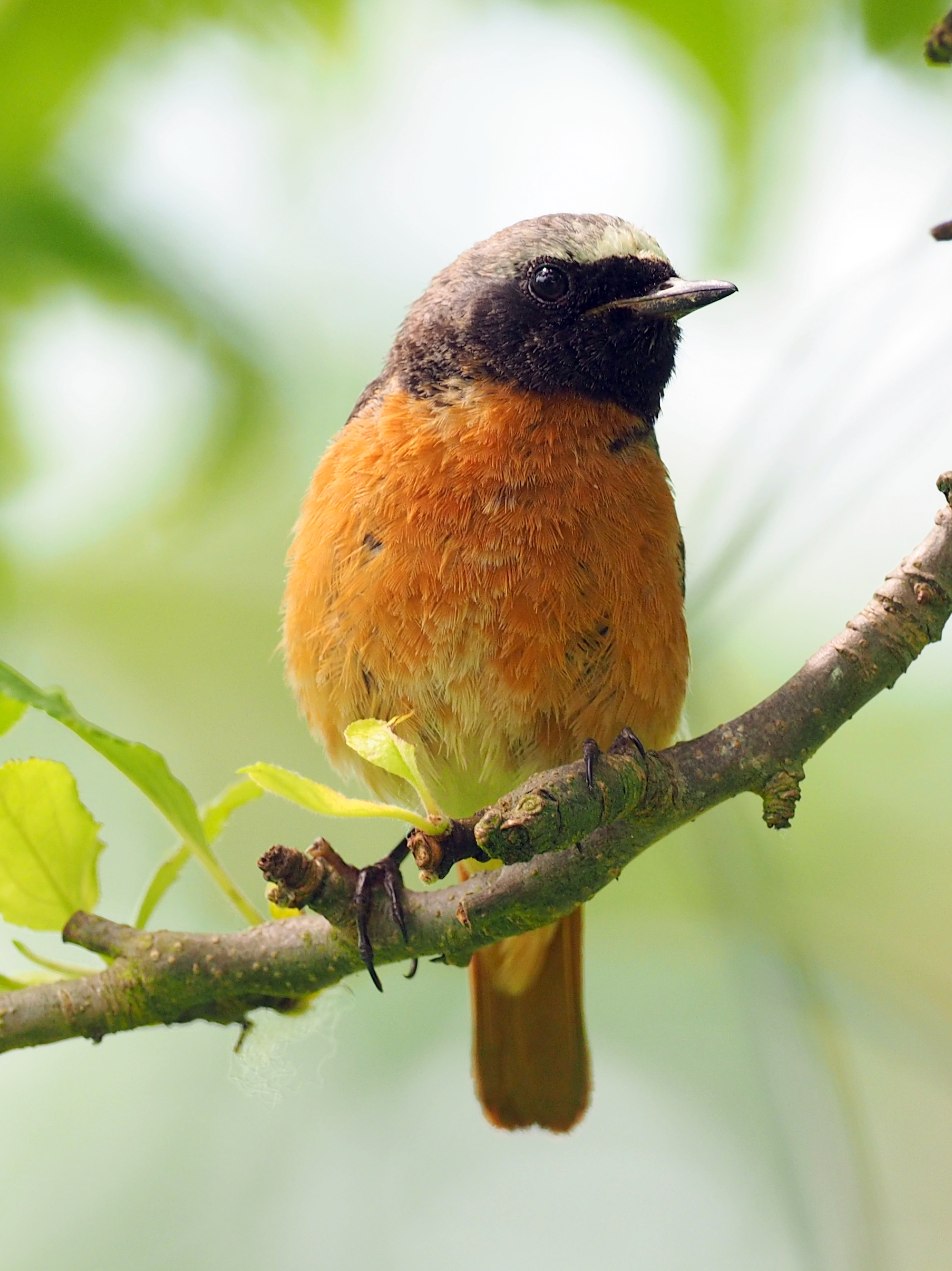
Photograph by Mick Farmer
August in the Forest
Thanks to some fine, settled weather and invaluable help from the Wyre Community Land Trust volunteers the hay was cut, baled and brought in with no problems last month. You’ll be pleased to hear that the old-fashioned sisal baler twine worked well and will become the twine of choice here at Uncllys!
The garden bird feeders are almost knee deep in baby Blue and Great Tits, forced aside regularly by the Great Spotted Woodpecker family. The woodpeckers are rather wary of our presence and veer off with a loud squawk if they see us nearby. They are a species that has benefited greatly from garden peanut feeders but still rely on old trees, mainly in the forest and old orchards, in which to bore a nest hole. The British Trust for Ornithology’s Nestbox Guide gives instructions how to try and attract Great Spotted Woodpeckers to use medium-sized birdboxes by stuffing them with rotten wood, which the birds can then excavate. It seems a lot of trouble when there is plenty of old wood round here.
Our efforts in putting up bird boxes are beginning to bring results with the smaller birds. An increasing and vociferous gang of House Sparrows use some boxes near the house and a gap in the masonry of the north-facing wall (we’ve no idea how many are in there!). Redstarts have made fleeting appearances in past years but this year our friend Elaine pointed out that a pair were nesting in a box fixed to one of our young apple trees. As it was fairly near the house we were able to keep an eye on progress and latterly to hear the parents and fledgling(s?) calling to each other as feeding was carried out. The birdbox they used was shaded by the lower branches of the tree and a lower twig was used by the adults to land and check that the coast was clear – both factors that probably contributed to its attractiveness to the birds. Thanks again to Mick Farmer, who managed to take some fantastic pictures of the parent birds, in this case the male.
Another way in which we try to help wildlife is to put out small sections of corrugated iron on the ground to provide reptiles with safe places to bask (safe, that is, from buzzards). We lift them regularly and are rewarded with sightings of Slow-worms, Grass Snakes and Common Lizards (in declining order of frequency). Grass Snakes like compost heaps and grass piles for breeding and the eggs generally hatch in August, as do those of Slow-worms, although I’m wondering if they are earlier this year judging from the tiny individual I’ve already seen under one of the tins.


Photographs by Mick Farmer
July in the Forest
Our fields are a picture at the moment: the various grasses are tall and in flower, thanks to the buttercups and pignuts there are swathes of yellow and white, with pink and purple accents of vetch and clover. Butterflies and other pollinators rise from the flowers as you walk through and grasshoppers ‘ping’ away from your feet. Not all of this will last the month as it’s hay-making time. The flatter fields will be cut, turned twice and, if the weather is kind, bound in small bales all within a week. (This year polythene baler twine will be replaced by natural sisal – our contribution to reducing plastic in the environment). Then human power takes over to load the bales and stack them in the barn.
Grazing is an important part of this traditional farming practice. Our resident sheep are currently grazing the big cherry orchard, which means that there won’t be enough grass for hay-making. On the top and ‘hay’ fields the sheep moved off a while ago so the grass has been able to make good growth and will be worth cutting.
We’ve been following this pattern for 15 years now, and can see how the wild flowers and grasses have spread through the pasture. Conservation management is not the same as gardening: it’s knowing enough about the habitats, ecology and life-cycles of species to make sure that any interventions you make are beneficial rather than harmful. People have been having an impact on nature so long on these islands that there is no ‘wild’. The diversity of wildlife is a result of traditional land practices.
You can see this in the Wyre’s woodland, which has been felled and coppiced for hundreds of years. Over recent years the Guild of St George has been catching up with oak thinning and ride widening, which has been necessarily drastic but now we are seeing the beneficial results. In Shelf Held Coppice there are two new rides which have been colonised by Pearl Bordered Fritillary butterflies. This is a wonderful victory for Butterfly Conservation and all the others who have developed policies for making conditions right for the butterflies. For your education, and because they’re very beautiful, here are Mick Farmer’s photos of both the Pearl Bordered and Small Pearl Bordered Fritillaries, which both love sheltered rides and the nectar-rich brambles which line them. If you can get a view of the undersides of the hind wings, the Small PBF gives itself away with more white ‘pearls’, a central black spot and an edging of black chevrons. As these two species are threatened nationally we are delighted that the Wyre Forest has thriving and increasing populations.
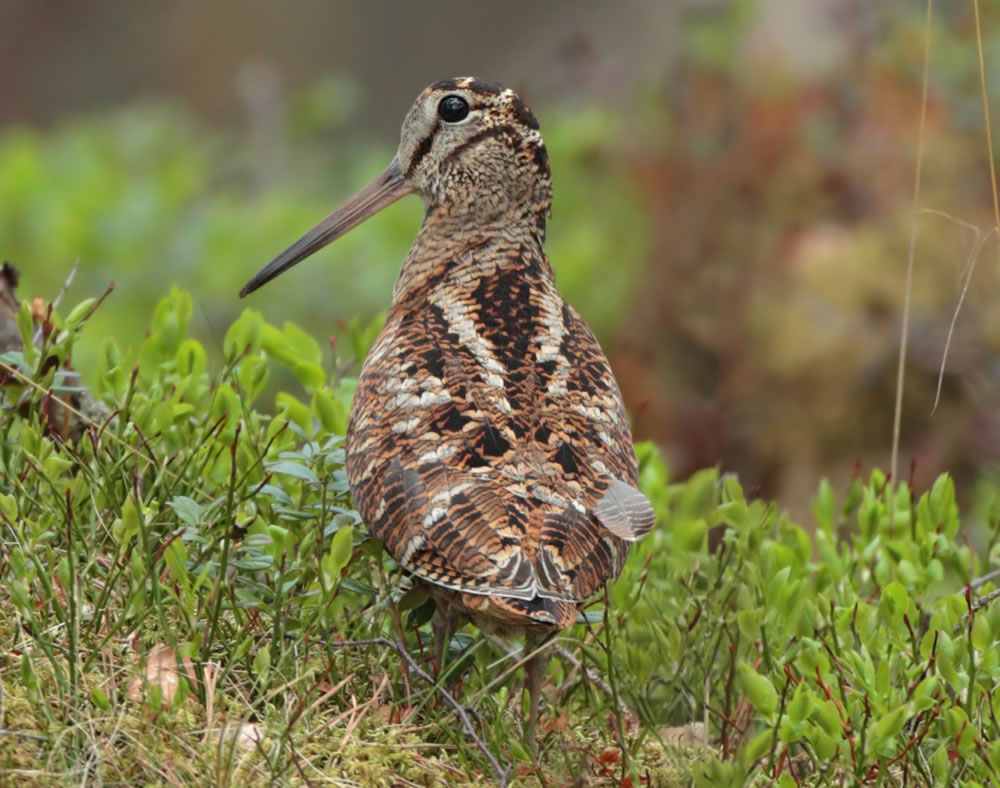
June in the Forest
I try not to be too gloomy in my articles even though the overall picture regarding our wildlife is inescapably bad, so it’s wonderful that I can bring some good news. Following last month’s article which mentioned the disappearance of Nightjars from the Wyre Forest a friend got in touch with me to say that he had a heard a Nightjar ‘churring’ behind his house on the edge of Ribbesford Woods last summer. Let’s hope it that it returns this summer, bringing some friends with it!
I have waited to hear the Cuckoo with some anxiety in recent years. It’s a huge change from earlier days: an elderly lady who used to live along Tanners Hill told me that the noise of Cuckoos calling incessantly in the late spring and summer in her youth was maddening (enough to send anyone ‘cuckoo’). The precarious state of the bird species such as Meadow Pipit, whose nests they invade, combine with the dangers of migration from sub-Saharan Africa to threaten the continued presence of this iconic bird in our forest. However I was relieved to hear my first Cuckoo on 24th April and have since heard the distinctive call, sometimes distant, sometimes loud and nearby, many times during May.
Another chance encounter was with a Woodcock, which flew over us as we walked back to the farm at dusk recently. It was flying low and uttering a squeak, much like a child’s or dog’s toy when trodden on, at regular intervals. I checked that I hadn’t trodden on a frog then concluded it was a rare sighting of this heavily camouflaged woodland bird which looks much like a Snipe, with a long beak for probing soft ground. At this time of the year the males perform a courtship flight known as ‘roding’. They fly a circular track at dusk, uttering a strange croak or groan followed by the squeak I’ve described. The sound we heard lacked the croak, or at least we didn’t hear it, so it may have been a male or a female. Norman Hickin records that this goes on for about an hour, usually from March until August. The wonders of a dusk walk are arguably as rewarding as those of the dawn walk I was advocating last month!
Now that the forest has closed up and new leaves block the long views it is harder to see Fallow Deer. This applies even to the white deer, which make up a small but increasing percentage of the Wyre herd. This is the month when fawns are born, hidden among undergrowth by their mothers in the very quietest parts of the forest. Let’s try not to disturb their peace.
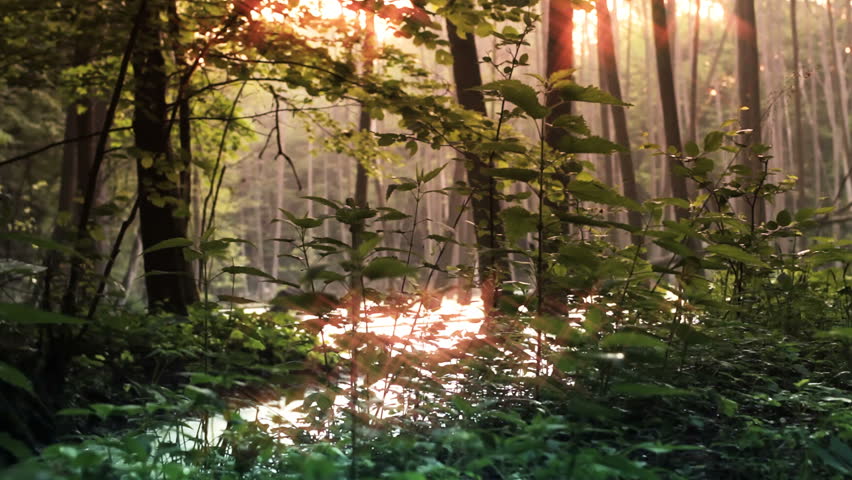
Image via Shutterstock
May in the Forest
The first Sunday of the month is International Dawn Chorus Day, often marked by special walks. However, you don’t have to join an organised event to hear a free, virtuoso performance somewhere near your home. Setting the alarm in time to be out in the woods ready for a 5.30am sunrise may take grim determination but the reward is memorable. The build-up of birdsong and the effect of the gathering light among the tall trees is uplifting and magical. You can stand still and let yourself be blessed.
The dominant songs will probably be those of Blackbird and Song Thrush. They perch as high as they can to broadcast their melodies: the Blackbird repeating them twice; the Song Thrush rather more varied in its repertoire and repeating each phrase three times. If, like me, you struggle to identify the other songsters, you can listen to recordings on websites such as www.rspb.org.uk to become familiar with them. Or you can just enjoy the occasion and make up your own mind whether you are experiencing a behaviour that is purely functional – an establishment of territory - or an outpouring of joy.
I have only heard Nightingales a few times and sadly never in the Wyre Forest, where they were last noted in the 1940s, but I can re-read and enjoy Keats’ ‘Ode to a Nightingale’ to recapture the wonder of the elaborate song or hear 3 hours of it courtesy of YouTube! The Nightingale favours coppiced woodland and scrub, which used to be common enough in Wyre and other woodlands in the past. The forest also incorporated much more heath in the past and efforts have been made recently to restore and extend this habitat so that many species threatened with local extinction can hold on. Norman Hickin’s ‘The Natural History of an English Forest’, published in 1971, talks of the Nightjar still being numerous in areas of heath and bracken despite a decline from the earlier years of the century. He describes watching a Nightjar performing aerial acrobatics as it hunted moths at dusk, silhouetted against the sky. The bird’s mouth is wide and fringed with bristles to aid it in catching its food and its brown cryptic-patterned plumage allows it to avoid detection during the day. I was amazed to hear its loud, ‘churring’ song (like a clockwork toy winding down) on the RSPB website. Wouldn’t it be wonderful to welcome this fascinating former resident back to our forest?
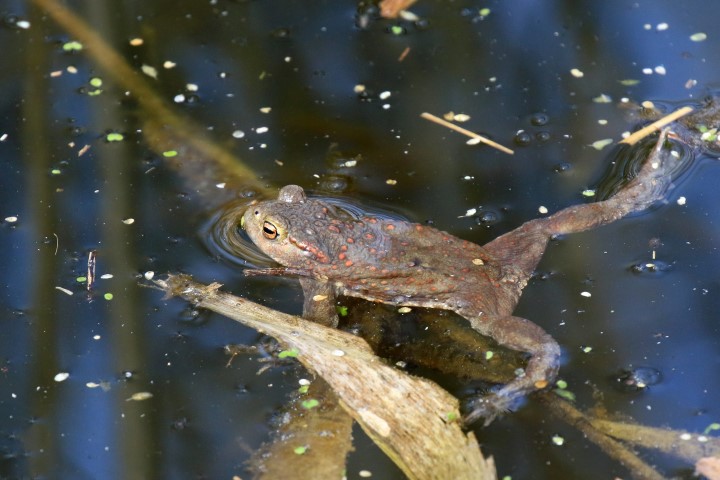
April in the Forest
It’s all happening in the forest this month. This would be true for a normal April, but this year spring started early and quite a few seasonal milestones are being turned on their heads. There were reports that Swallows and House Martins were arriving in the southwest at the end of February. I hope they found enough food – the insects they rely on may not have woken from their winter slumbers in time to breed the numbers needed. This is a danger with climate hiccups and changes, which upset the patterns that the life cycles of wild creatures exploit. The example that springs to mind is that of Great Tits, which have been studied by Oxford University in Wytham Woods since 1947. I quote from the project’s website:
‘Once the chicks hatch, parents embark on what is perhaps the most challenging few weeks of their lives – in the space of two weeks they will transform their naked and blind chicks, weighing about 1 gram each, into fully-formed birds capable of flight, each weighing more than their parents! This is only possible because the parents time their breeding so that they have chicks in the nest when there are lots of caterpillars in the woods. Although caterpillars are plentiful they are only available to the tit for a few weeks, and the timing of this caterpillar peak varies greatly between years. Timing of egg laying is therefore critical – if parents get it wrong, and lay too early or too late, they may not be able to find enough food to keep their brood alive.’
I don’t know when the Swallows and House Martins will arrive at Uncllys but Great Tits are the most numerous birds in our garden and probably in the surrounding woods. They empty our (large) sunflower feeder in a morning but I suppose need the caterpillars to give their offspring a balanced diet.
If the weather is anything near normal I shall be trying to spot the toads this month as they migrate through the woods to spawn. They walk rather than hop, and on a still day you may be lucky enough to track them by the rustling of dead leaves as they make their way to their favourite pond or lake. They produce long strands of dark spawn (unlike the clumps of frogspawn) along the pond margins. When we lived at the end of Kidderminster Road, Bewdley we often saw toads at all times of the year but they dwindled, presumably as the construction of the by-pass took its toll on the Spring Grove lakes. Now that we live in the Wyre Forest we try to make our patch as hospitable as possible to all forms of wildlife and value the visits of Bufo bufo , hoping that it will continue to help itself to our slug population.
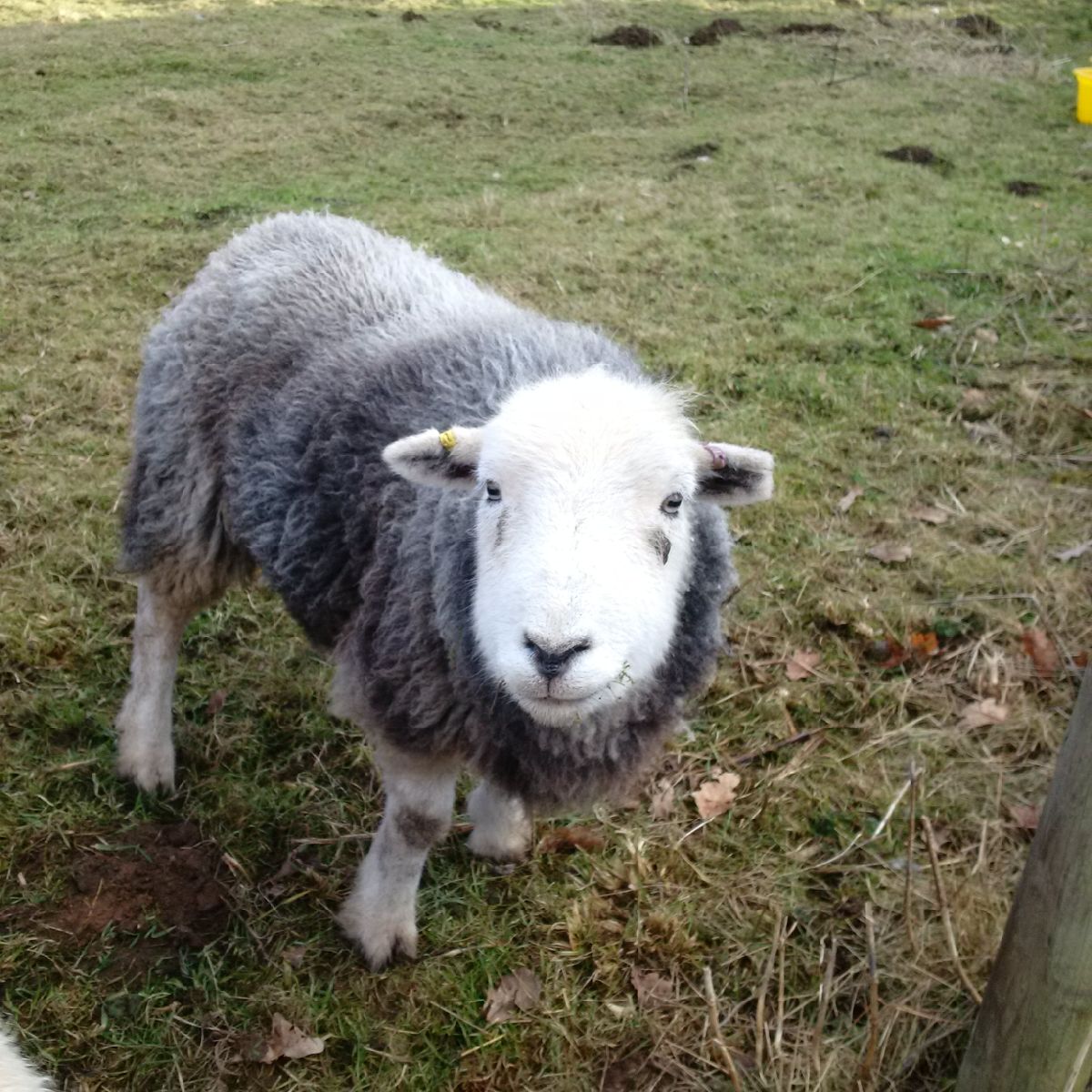
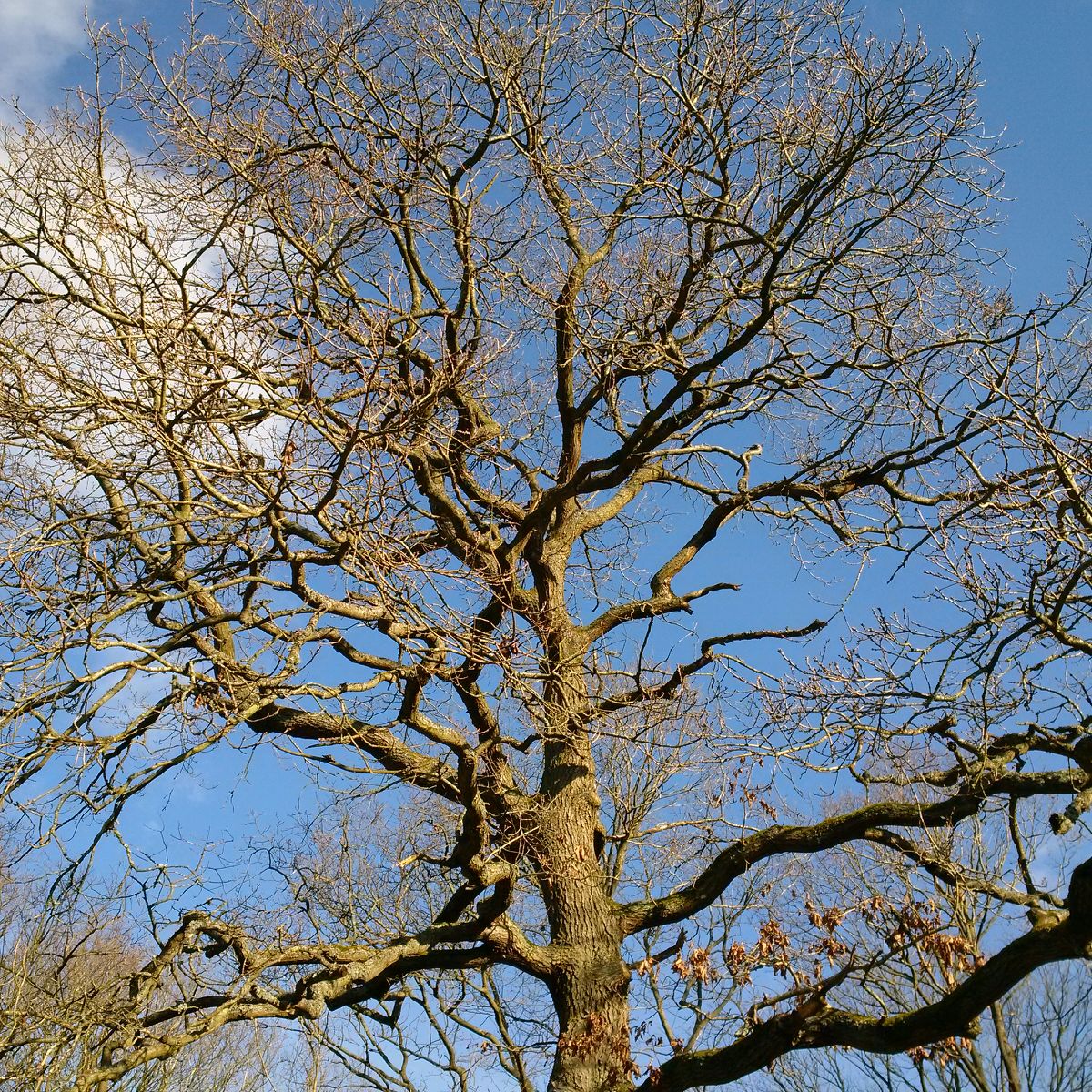
March in the Forest
This month we anticipate the birth of the first lambs on Uncllys Farm since we moved here. Our grazier has a flock of 16 Kerry, Welsh Mountain and Herdwick ewes who have been consorting with a Kerry ram, so we hope for a good crop of lambs with a mixture of markings but all equally bouncy! On a serious note, we’ll have to try and protect them from dog worrying. The forest is very popular with dog walkers and most assume that they can let their pets off the lead here. They also assume that their pet would never chase sheep, but sad experience shows that you can’t be sure of this.
There’s a connection here with our efforts to conserve woodland birds, which are increasingly disturbed by dogs. Fortunately a number of woodland plots are now surrounded by deer fencing so that trees can regenerate naturally, safe from hungry Fallow and Muntjac. Volunteers have recently planted little Rowan, Hazel, Wild Cherry, Wild Service and Hawthorn trees in these plots to create a diverse habitat which can better support a wide range of insects, birds and other wildlife. Research shows that many woodland birds including Dunnock, Nightingale, Garden Warbler and Long-Tailed Tit are adversely affected by deer browsing. We intend to do more survey work so that we can see if our efforts produce the beneficial results intended.
This month also sees the opening of a new exhibition at Bewdley Museum. ‘Beautiful, peaceful and fruitful: Ruskin in Wyre’ marks the 200th birthday of the eminent Victorian whose legacy could be said to include public libraries, museums and art galleries, the sympathetic preservation of old buildings and beautiful landscapes, the recognition of Turner, the improvement of factory working conditions…etc.! His acquaintance with our forest inspired a movement (the Guild of St. George) to set up communities where ordinary people could work the land, develop craftsmanship and pursue their own education, in short ‘make some piece of England beautiful, peaceful and fruitful’. Ruskin Land is certainly beautiful and peaceful. Its fruitfulness may be measured in many ways: the produce from its orchards and fields, the diversity of its nature, its role in spreading a love of nature, art and craftsmanship, and the health and wellbeing of those who live, visit or work there.
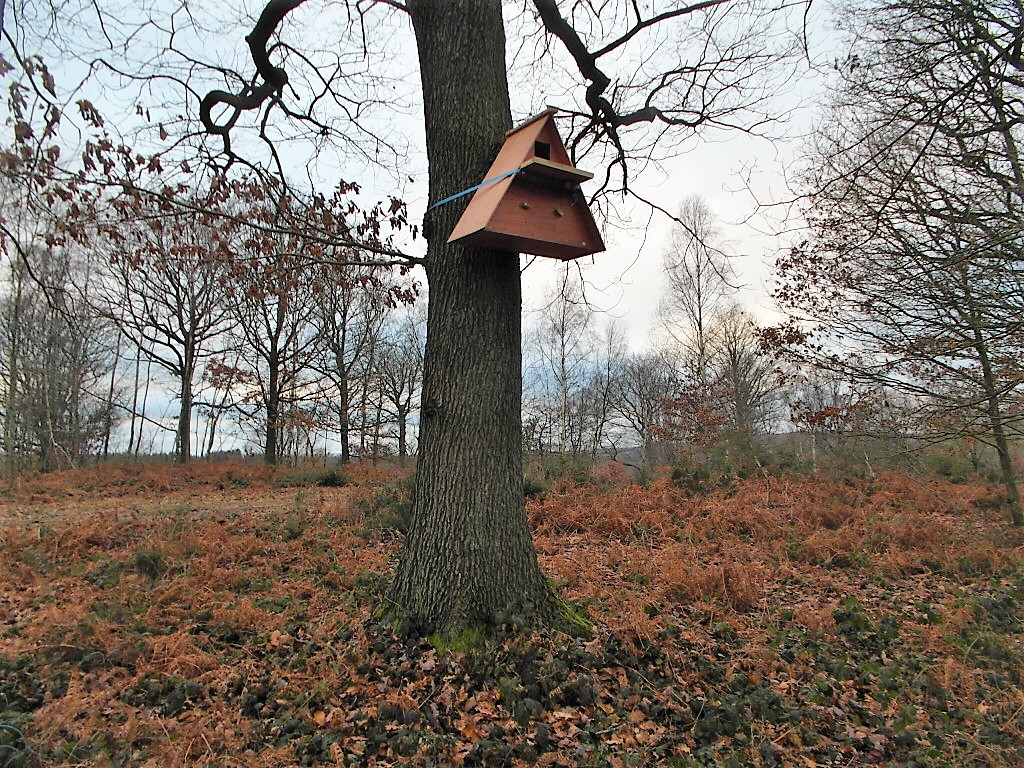
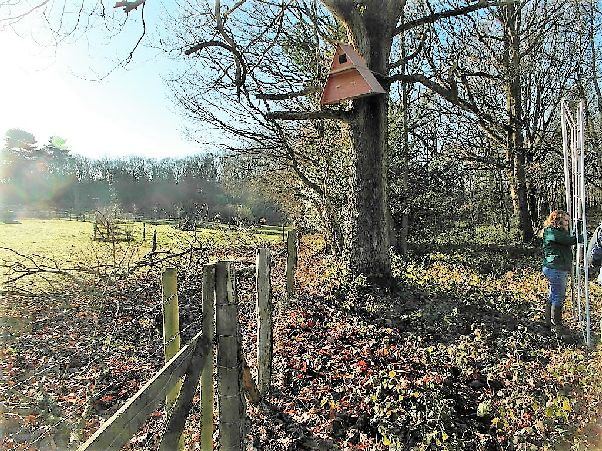
February in the Forest
February 14th to 21st is National Nestbox Week. It always coincides with St Valentine’s Day, which I think is rather sweet. I’ll be using the opportunity to gain some woodworking skills and I’m hoping the birds aren’t too fussy about the finish! Advice on the dimensions and siting of boxes for different species of birds can be found in an excellent new book by the British Trust for Ornithology: ‘Nestboxes: Your Complete Guide’.
Over the years we have put up many boxes that didn’t get used, or didn’t attract the species intended. The Blue and Great Tits have probably had a population explosion around here thanks to the boxes we put up to attract Redstarts to nest in the cherry orchard. The answer there is to block the entrance holes until the Redstarts arrive from abroad, but we’re not as quick off the mark as we should be. In the garden we have a few boxes that have never been used but I shall persevere and try them in different places. I try to think like a bird: is it safe from cats; will it be too hot in summer; are wasps, bees or mice already using it? You can help to make nest boxes safe by fixing a metal plate or ring around the entrance hole, preventing woodpeckers and squirrels from pecking or chewing their way in to predate the occupants.
Another way we can help is to provide nesting materials. This could include feathers from old pillows, sheep’s wool and moss from the lawn. Beware of long fibres in which nestlings could get entangled. Materials could be offered near a bird table in a satsuma net or just left in a shrub or flower bed. Nest boxes can be cleaned out when the nesting season is over, and since several species have more than one brood this probably means waiting until autumn. Old nests are often infested with fleas and other parasites, so all nesting material should be thrown a good distance away from the box.
If you walk in the woods in or near Ruskin Land you will notice that a number of larger boxes have been placed for Tawny Owls, Barn Owls and Kestrels. Our support for wildlife-friendly farming comes from the EU via a Countryside Agreement with the Department for the Environment, Farming and Rural Affairs. The parcels of land which belong to the Guild of St George and others under private ownership all have their own agreements, all of which are designed to increase biodiversity. The substantial, triangular-shaped boxes are built for us by the volunteers of the Wyre Community Land Trust and then placed in positions which should be attractive to Barn Owls. There is no guarantee that they will be avail themselves of the best ‘des. res.’ in the area but we’ll keep a lookout for the tell-tale blur of white swooping low at dusk.
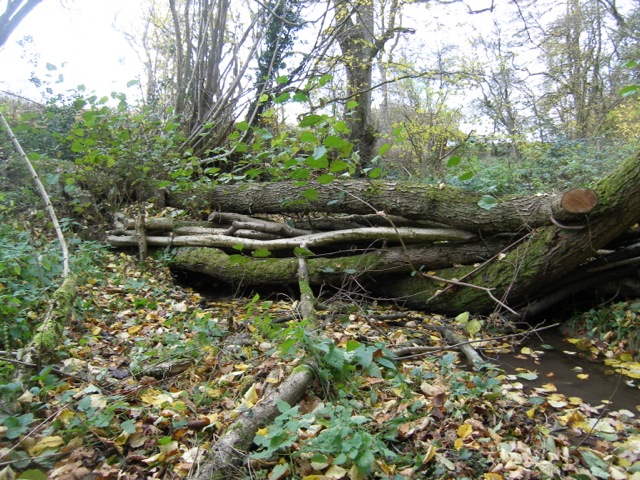
January in the Forest
The rain seems to be trying to make up for lost time. The forest tracks, which were dry and easy to walk in the summer, are slippery clay again and the potholes are opening wider at the passage of each vehicle along our access road. Wellies and overtrousers are de rigueur. This is all part of the winter experience but all too often in recent years we have suffered the more serious problem of flooding, sometimes from the Severn coming upwards but just as often from its tributaries coming downwards.
Just recently we and other local landowners have been introduced to a project called Slow the Flow. Initiated by DEFRA and the Environment Agency, it is part of a national scheme with funding from central government and in our area is being led by Wade Muggleton of Worcestershire County Council. Its aim is to delay the movement of rainwater off the countryside long enough to spread the peaks of storm water runoff. A hold up of just ten minutes can prevent the water contributing to a damaging flash flood.
You may have thought the photo showed a beaver dam (now there’s an idea!), but the loosely piled logs are a man-made ‘leaky dam’ which allows steady flow in normal conditions but causes water to back up during storms. It is just one of the measures which we’ll be using: others include making pools and ponds along watercourses and improving the profile of trackways so that rain flows off to the land on each side rather than turning the track into a stream. Other landowners will be planting more trees and hedges, retaining water along the contours of the land so that it is not able to run straight downhill, and deliberately blocking field drains to create boggy areas. All this is pretty ironic, considering the extent to which advice for improving agricultural productivity in the last 100 years has urged (and the government has grant-aided) land drainage schemes and hedge removal! Loss of woodland and over-stocking of sheep in upland areas has also contributed to the risk of flooding: a risk that will increase with weather changes linked to climate change.
This new aspect of countryside management will be good news for wildlife and for those who love to walk the paths of the Wyre Forest and its neighbouring landscape. It will also help to conserve part of the natural world which is often overlooked but which is absolutely vital - the soil.
For more information on ‘Slow the Flow’ please contact Wade on wmuggleton@worcestershire.gov.uk.
2018
To read Linda's monthly nature diary notes for 2018, click here.

